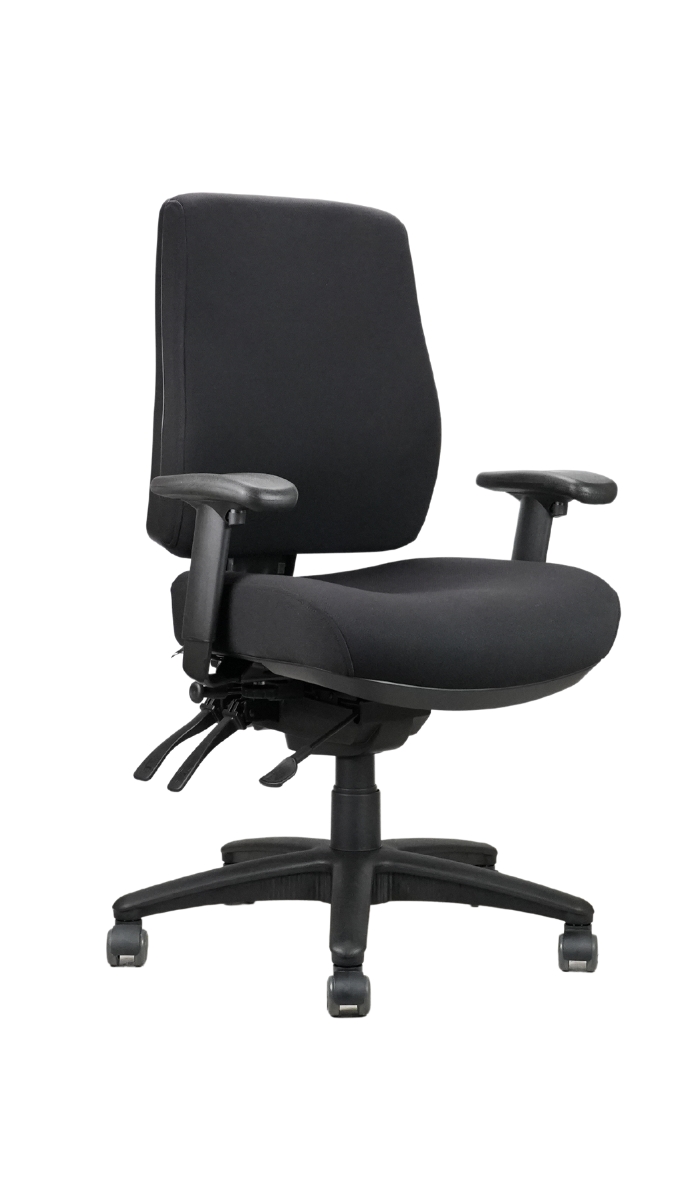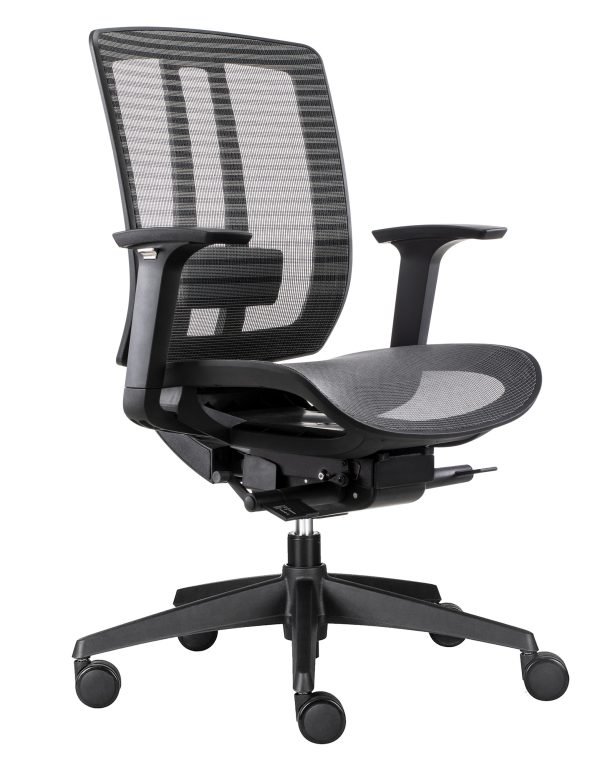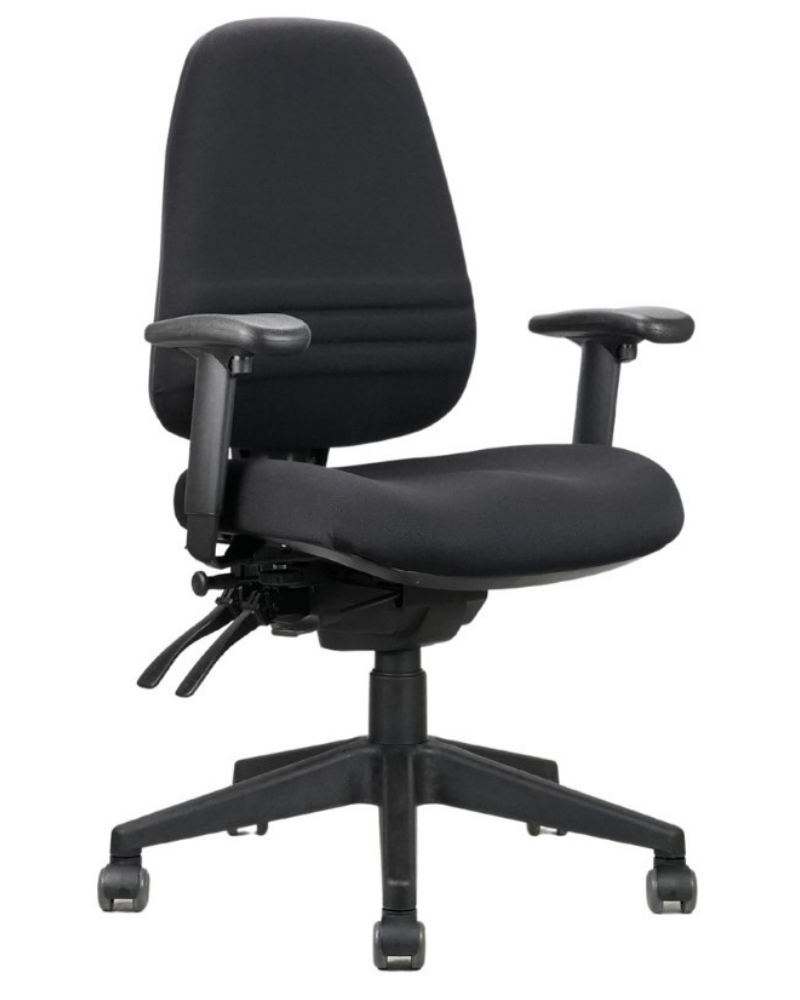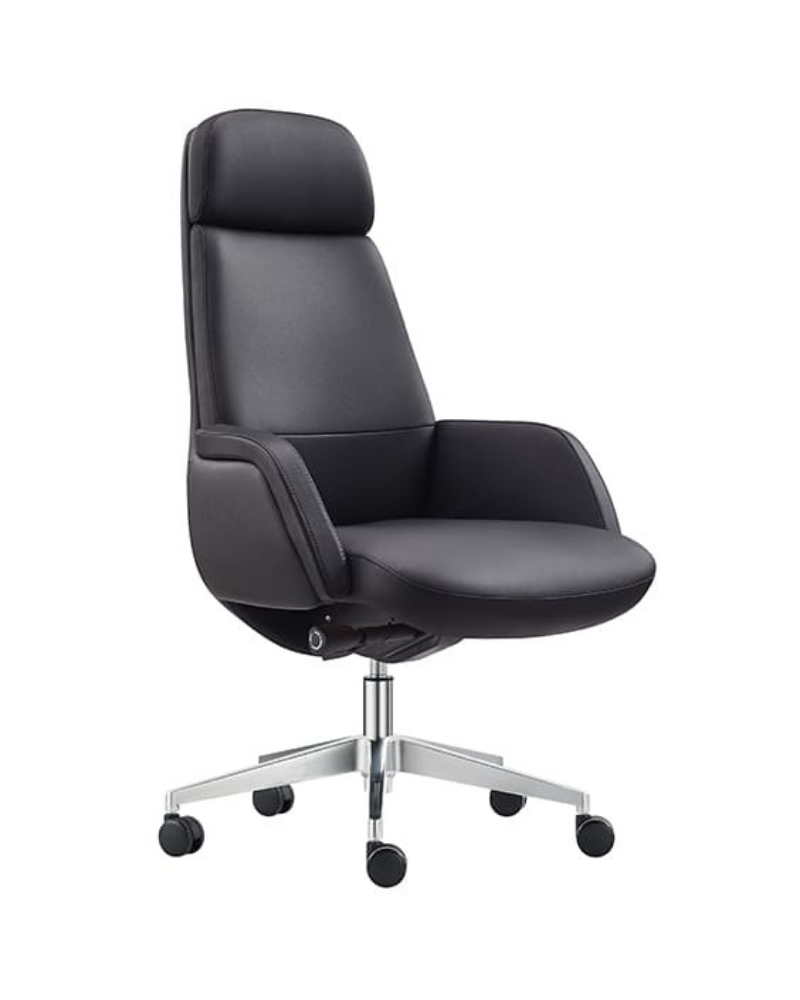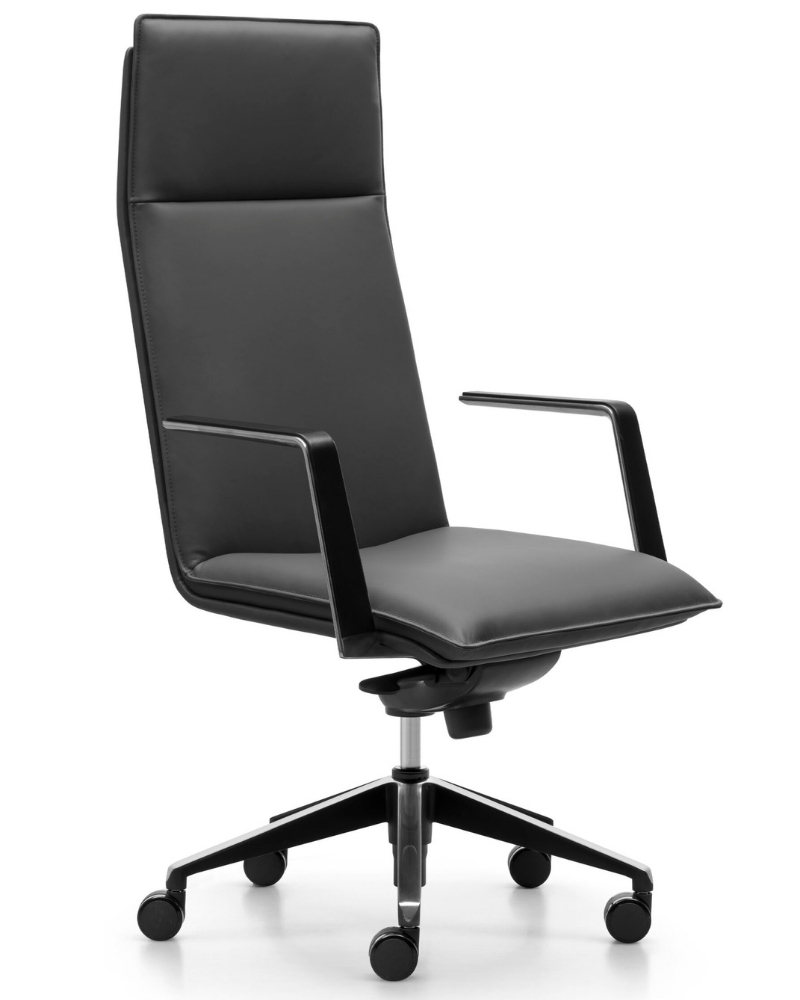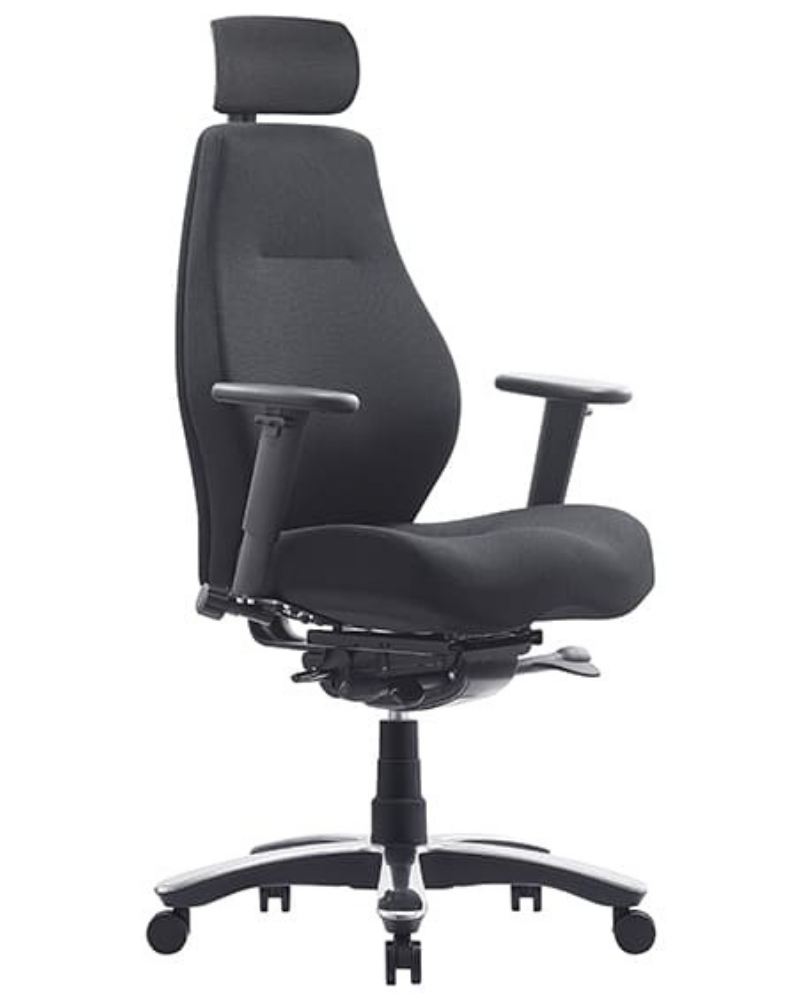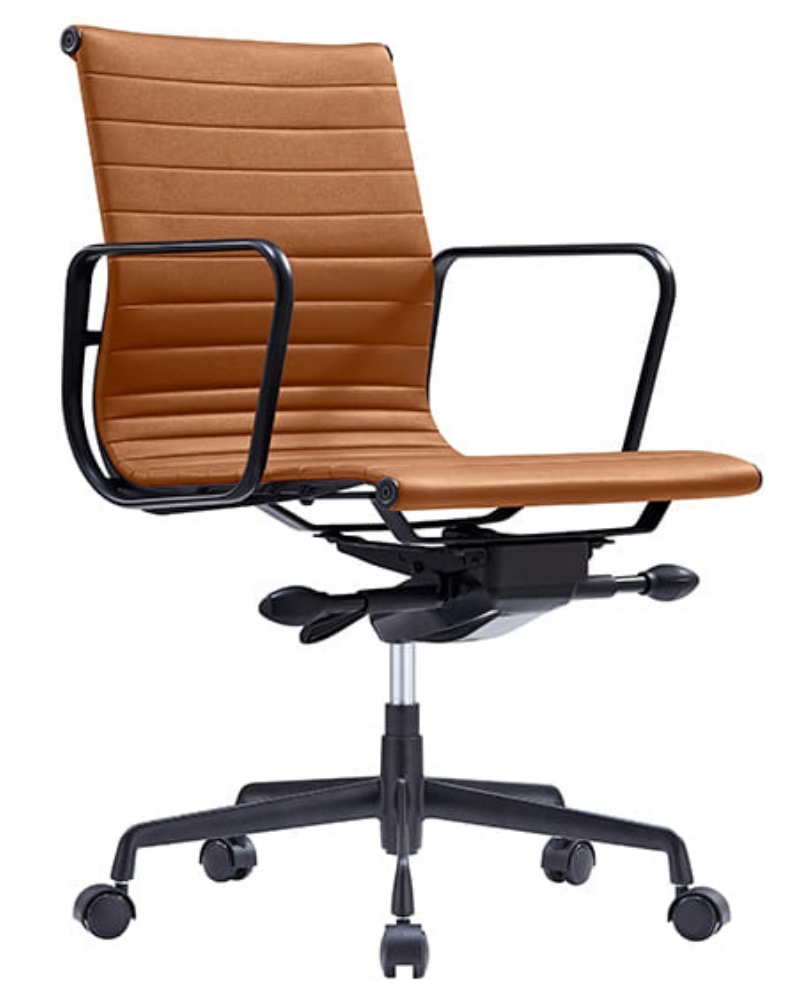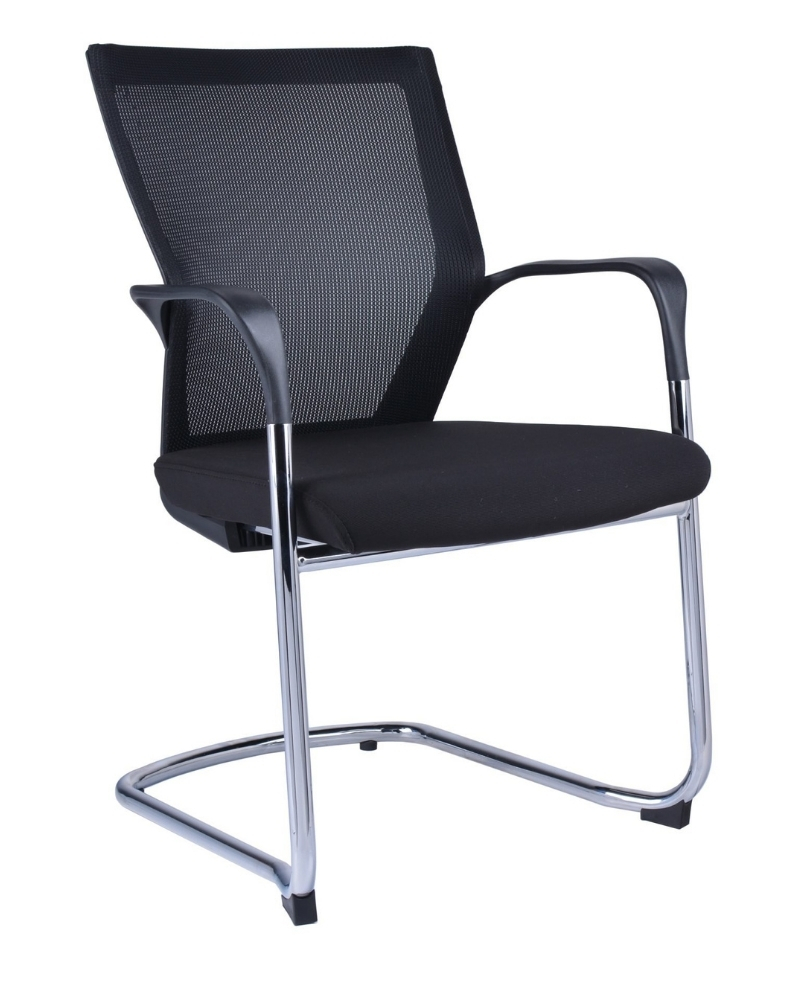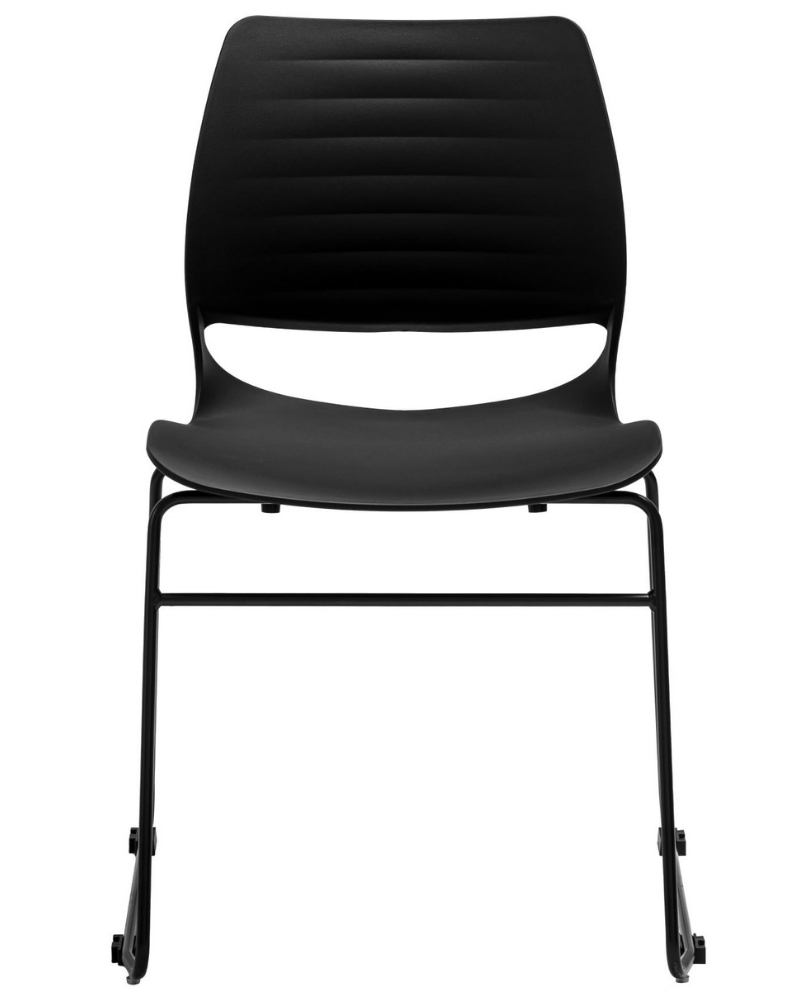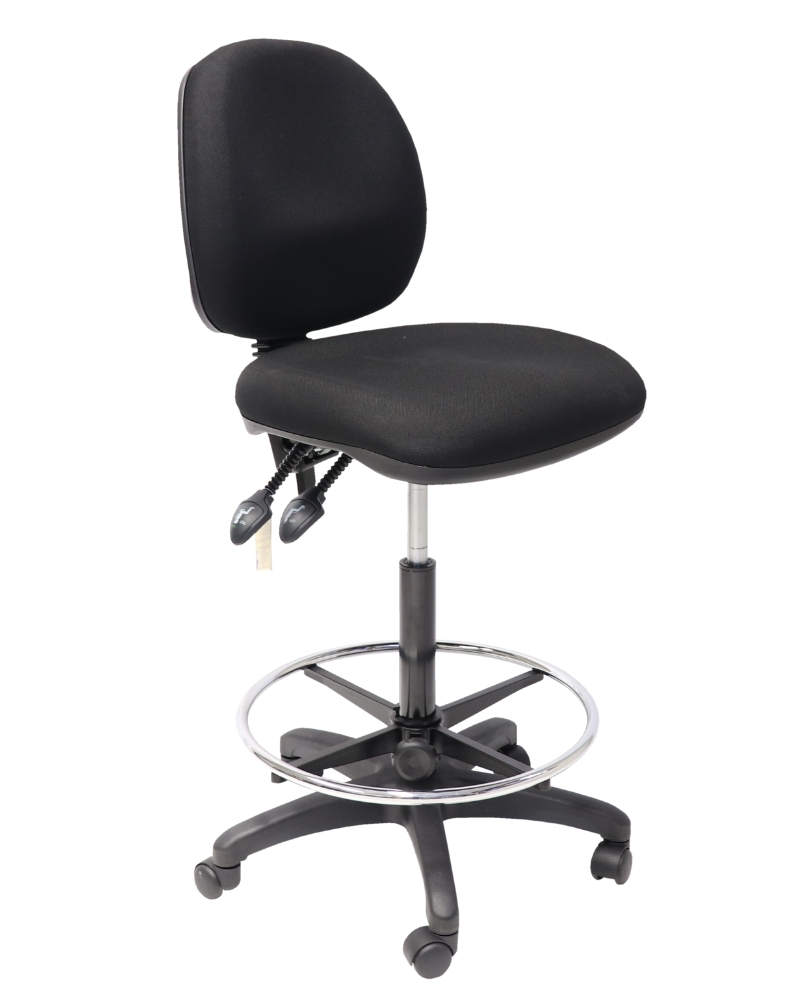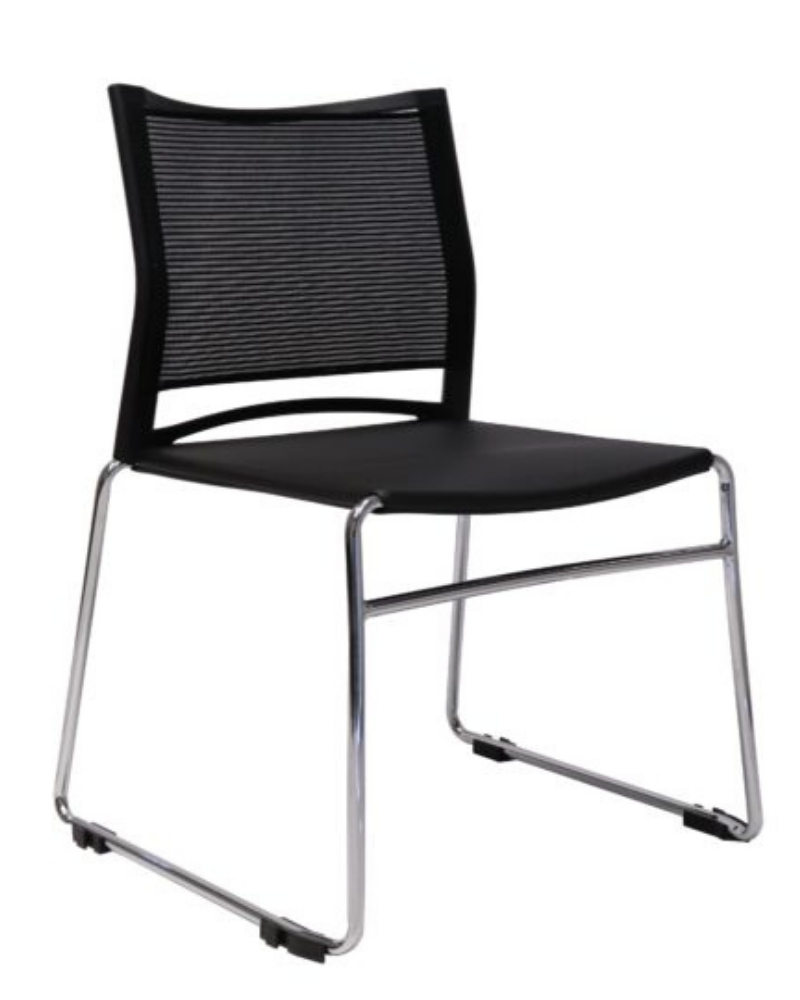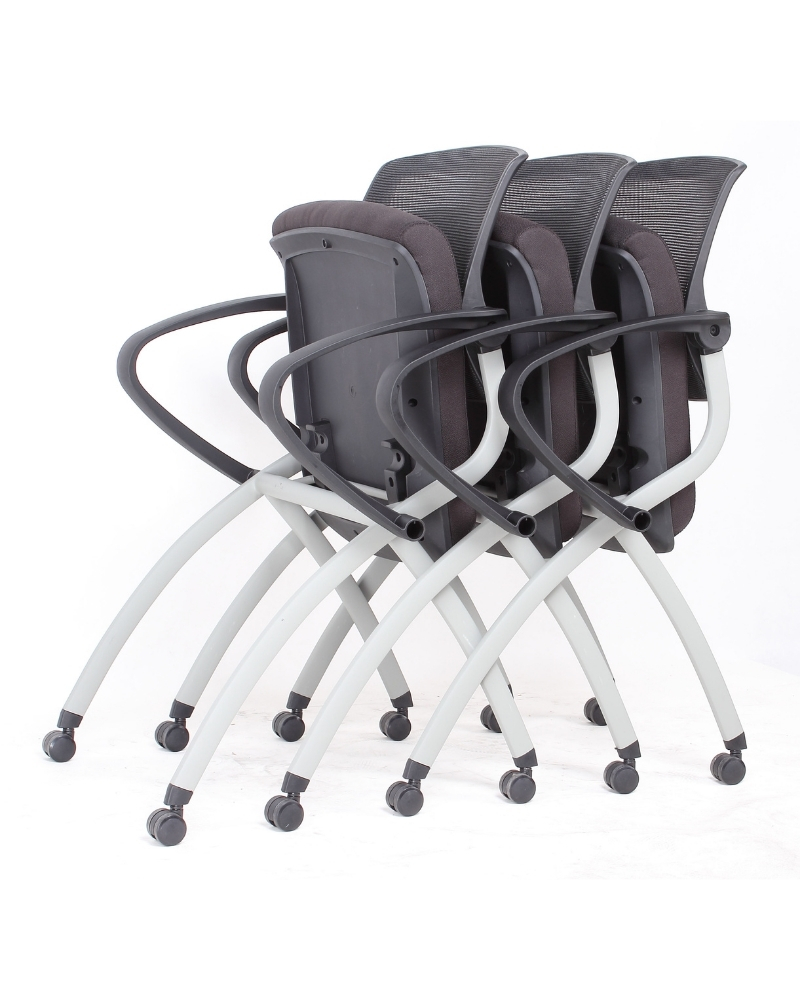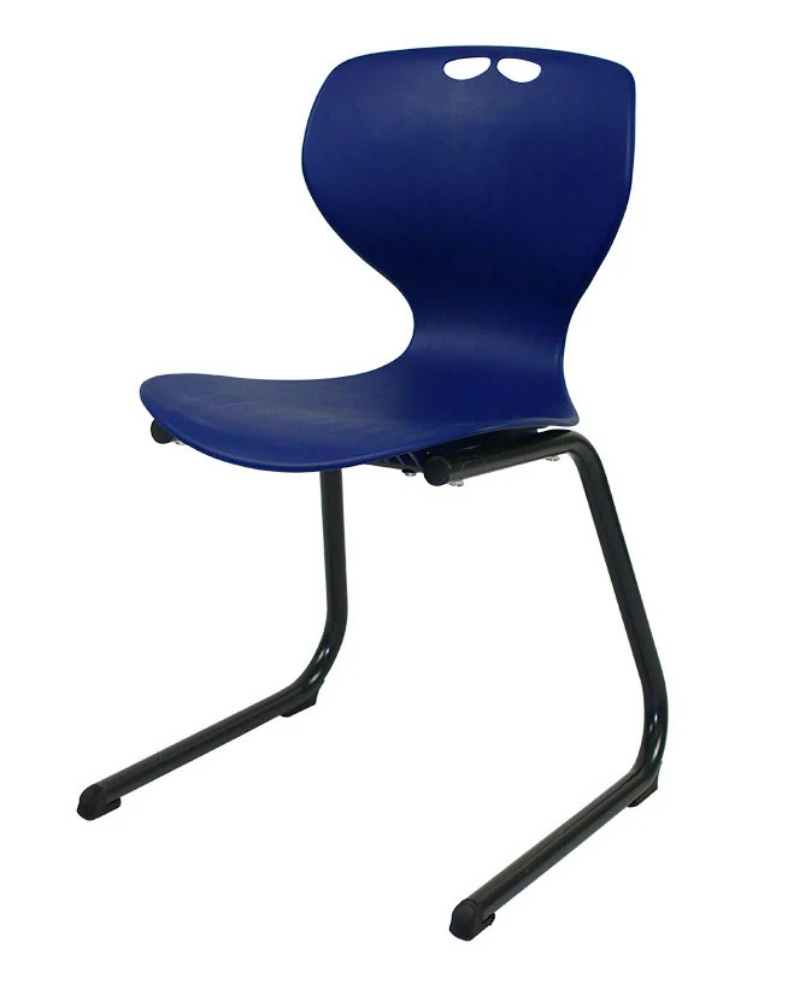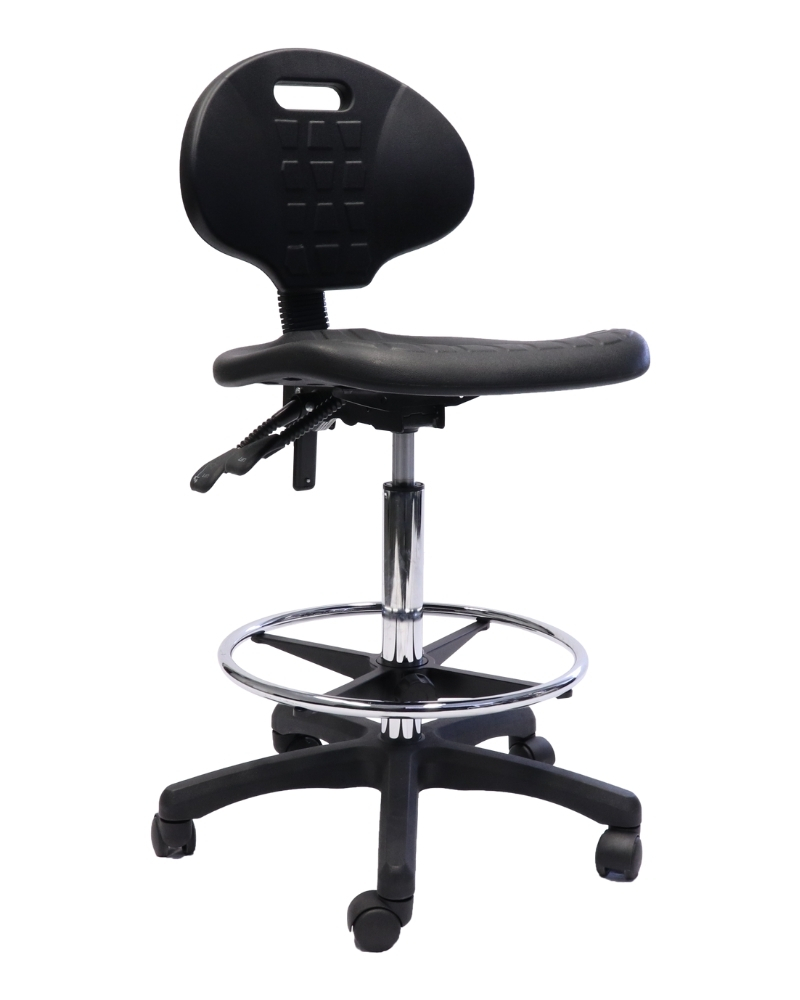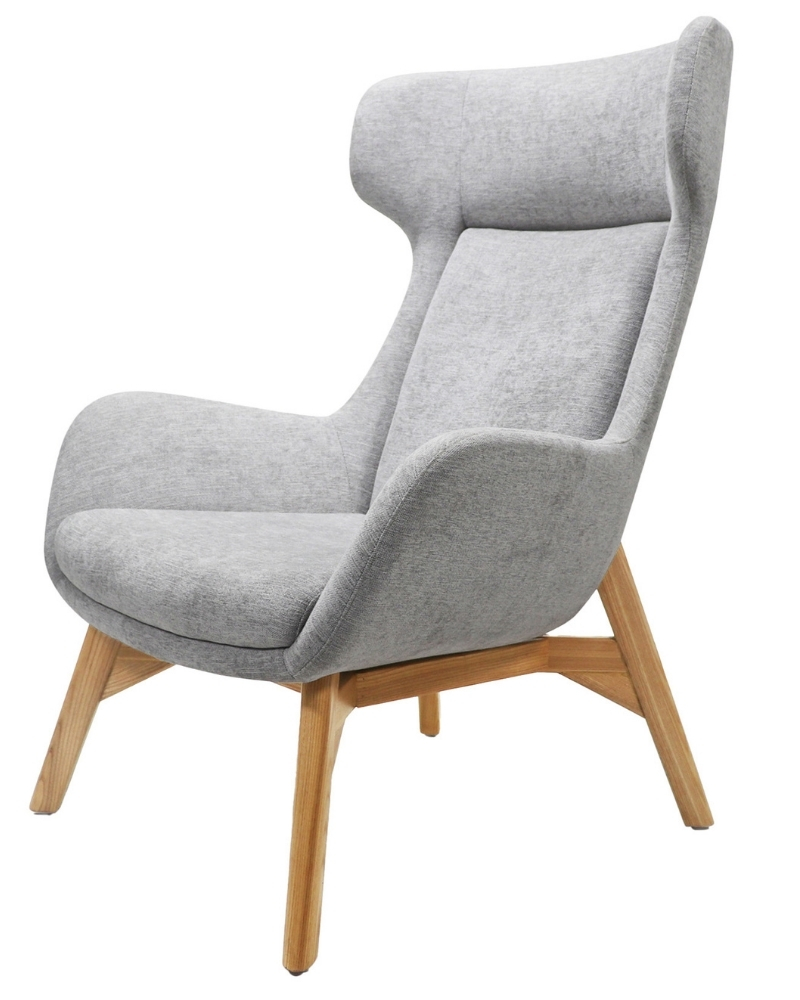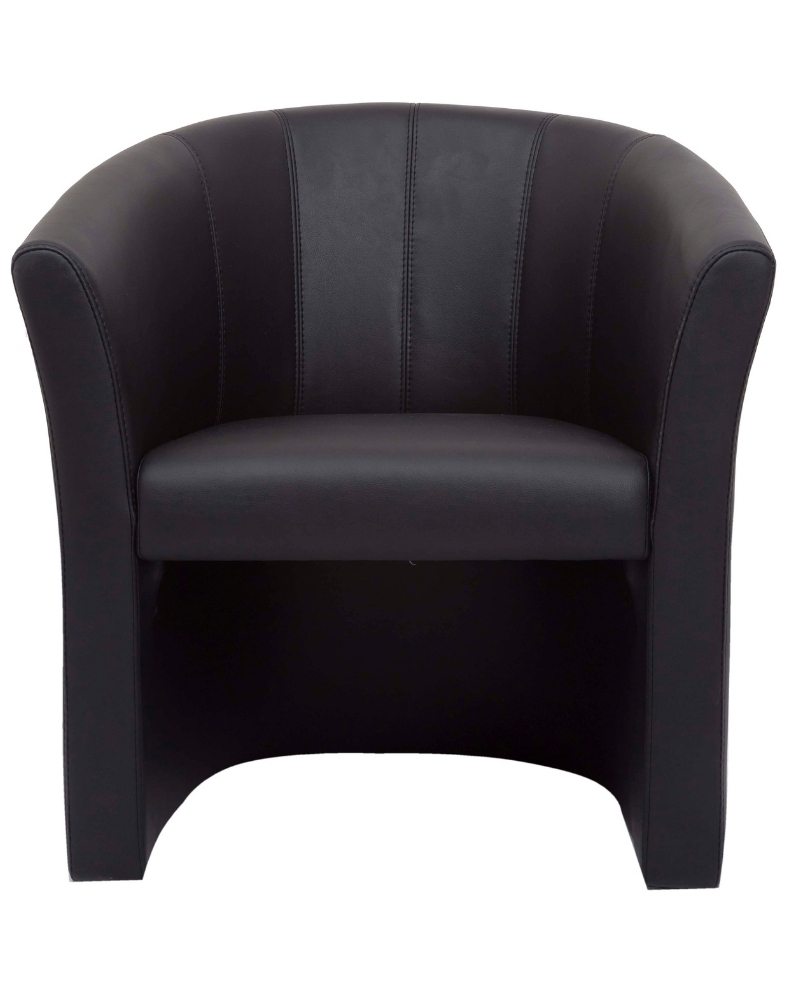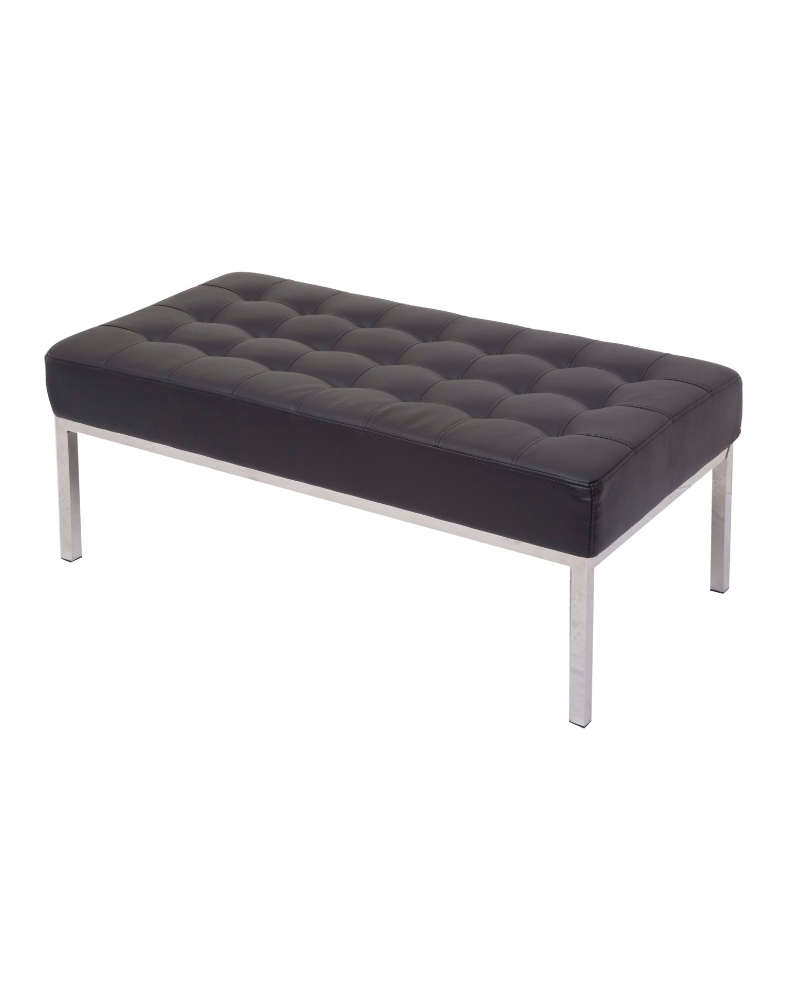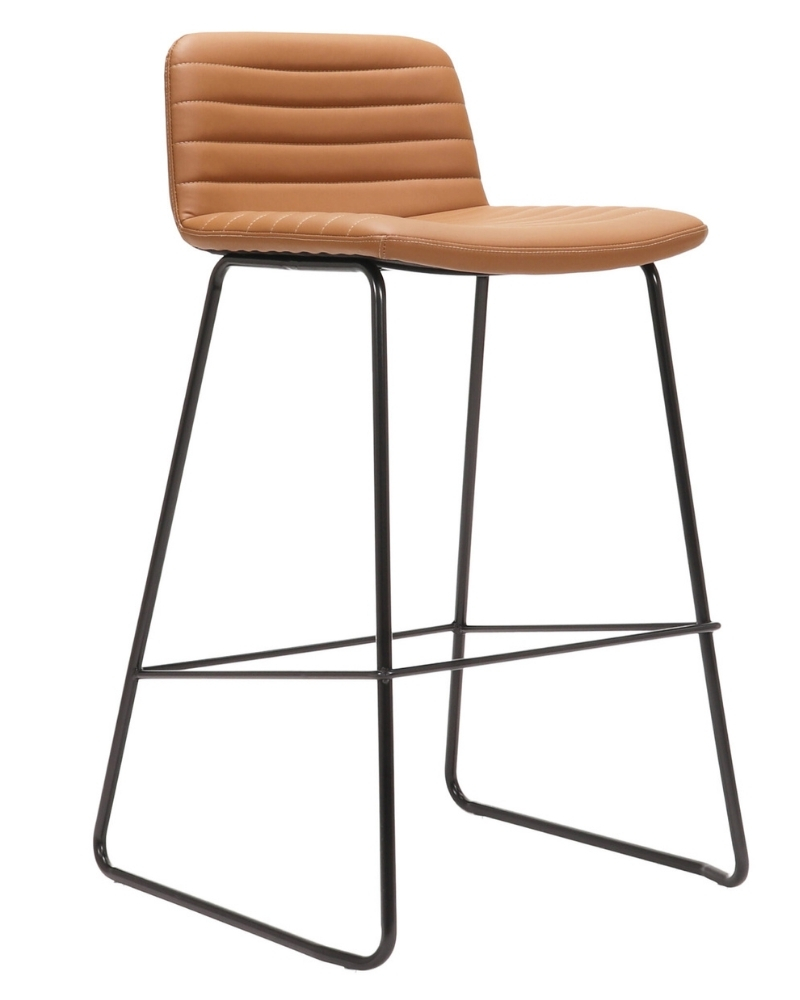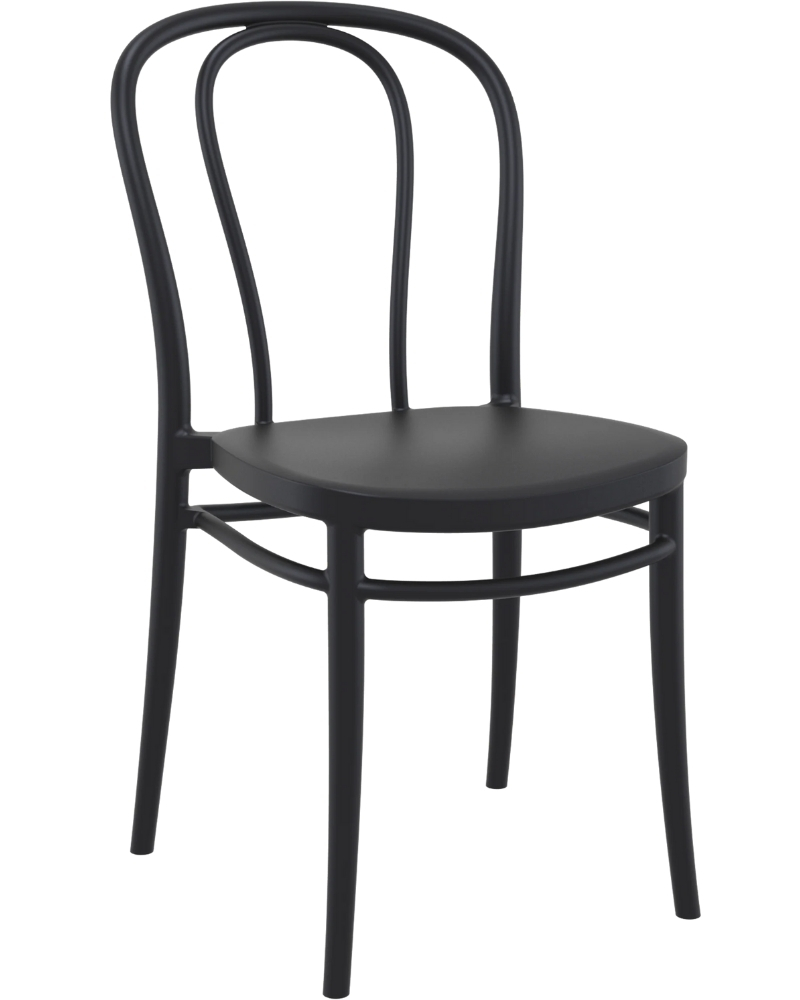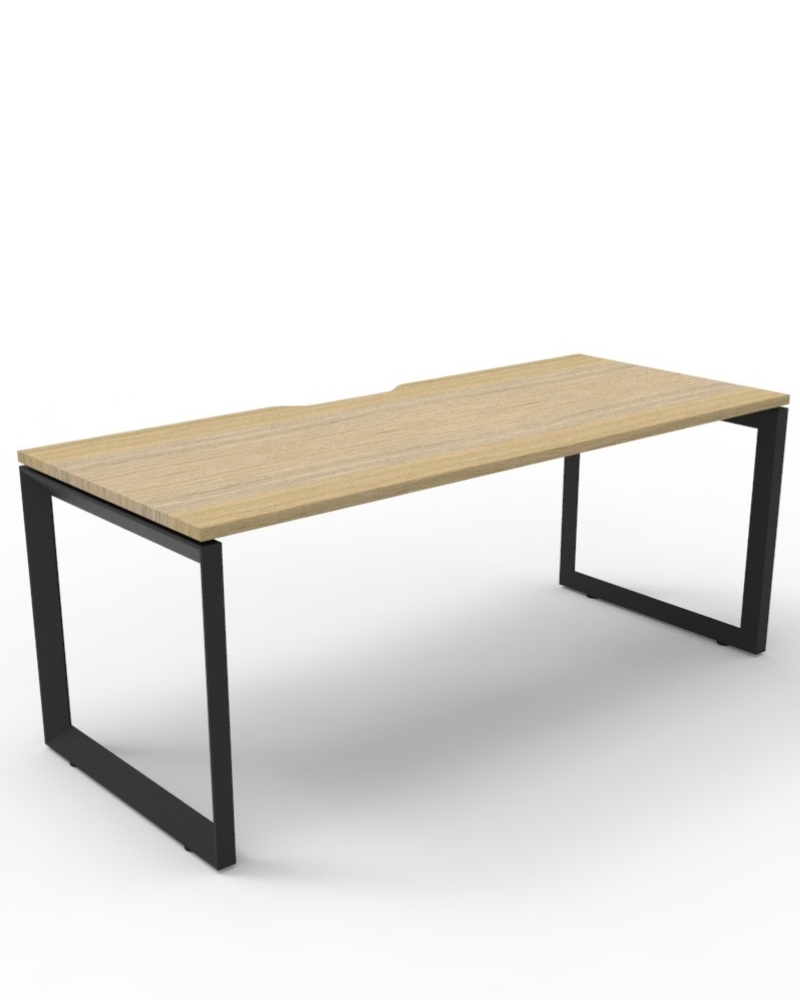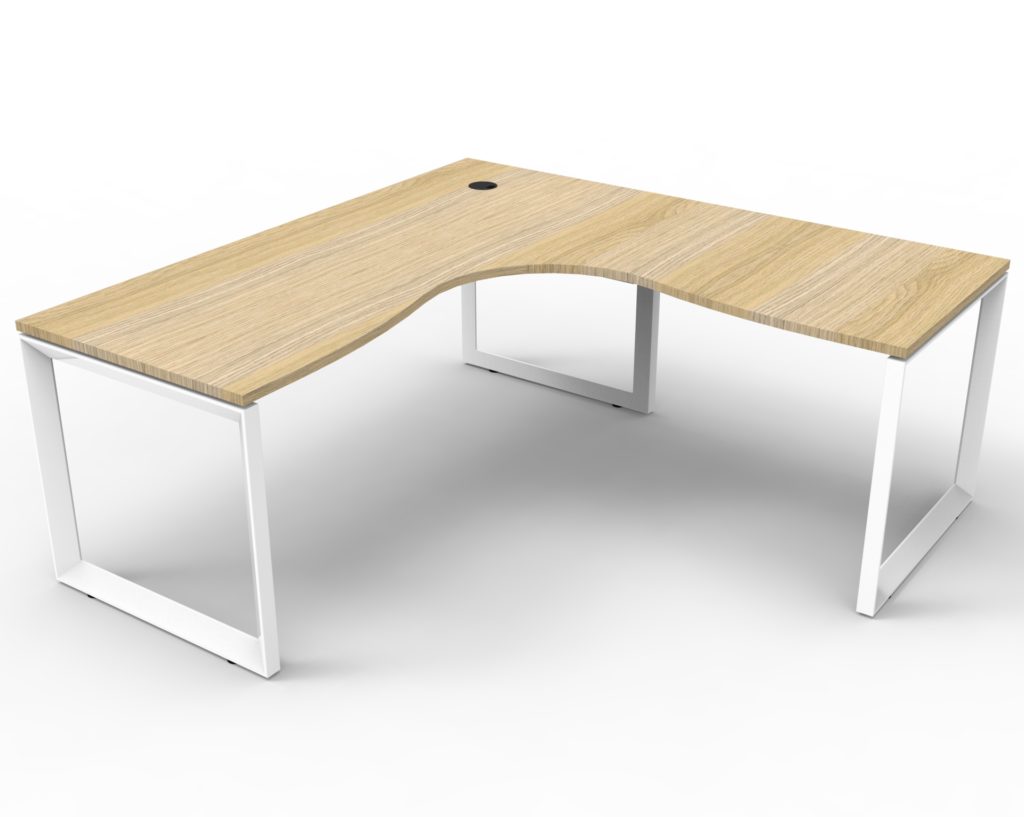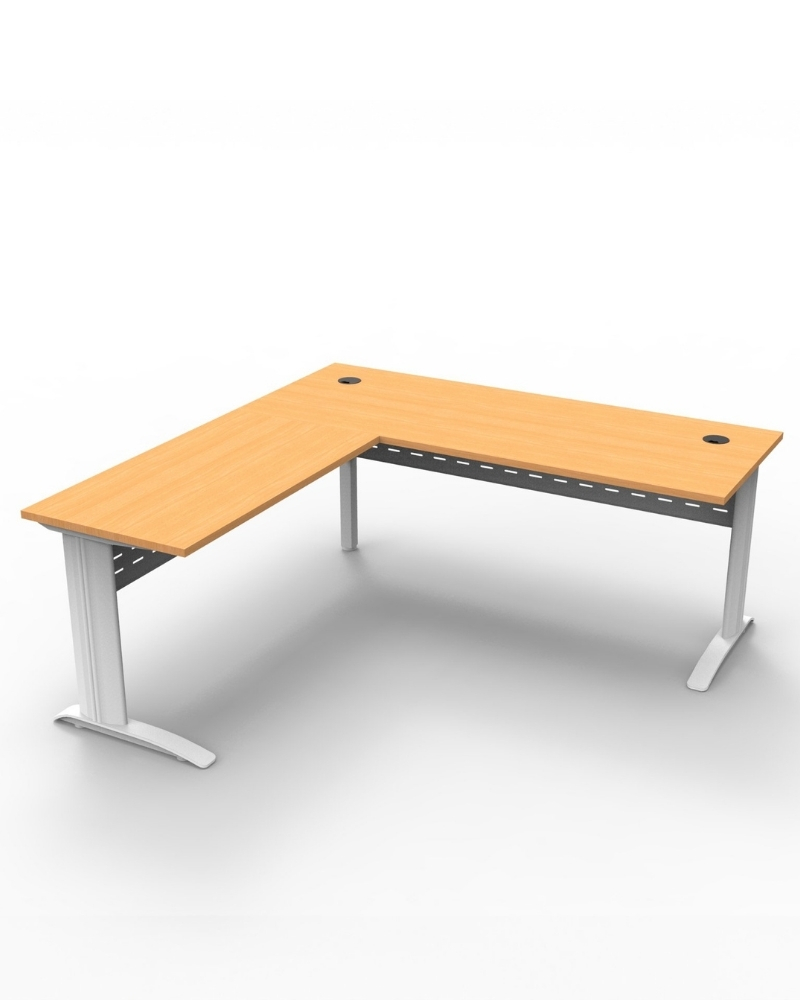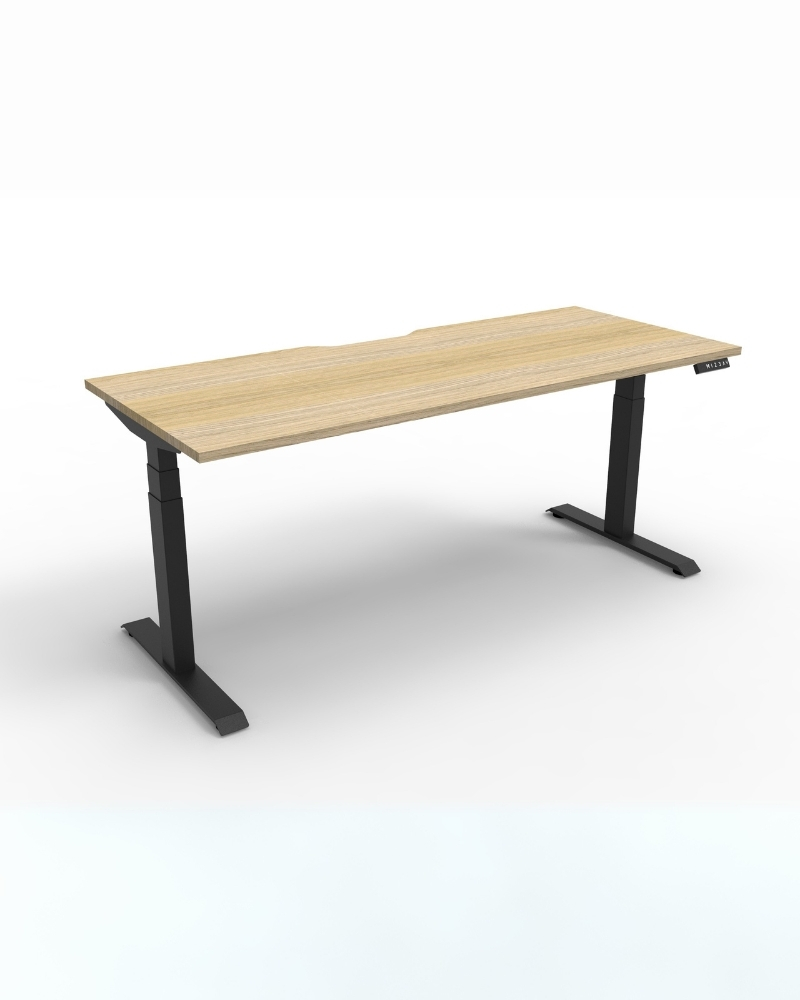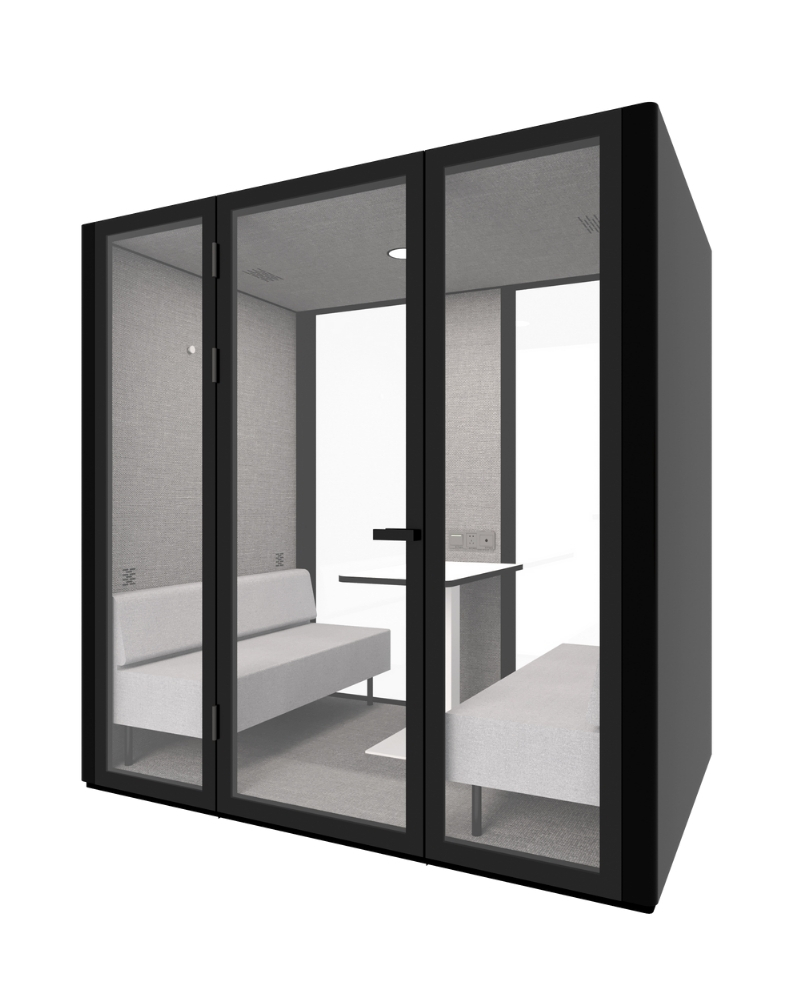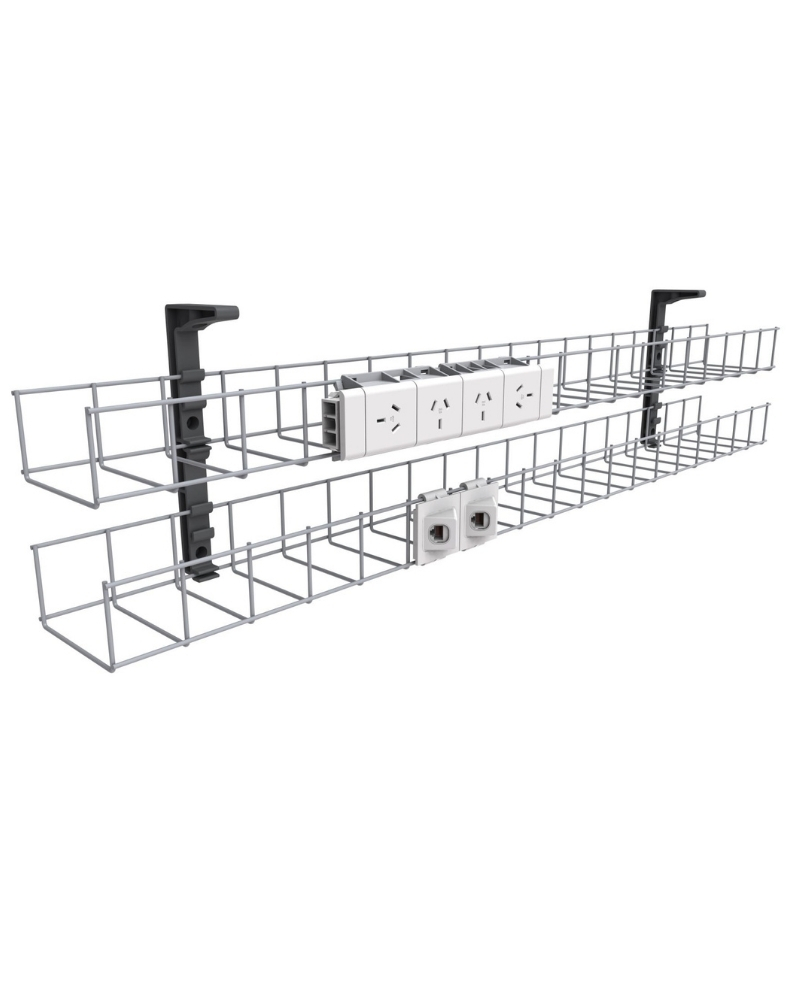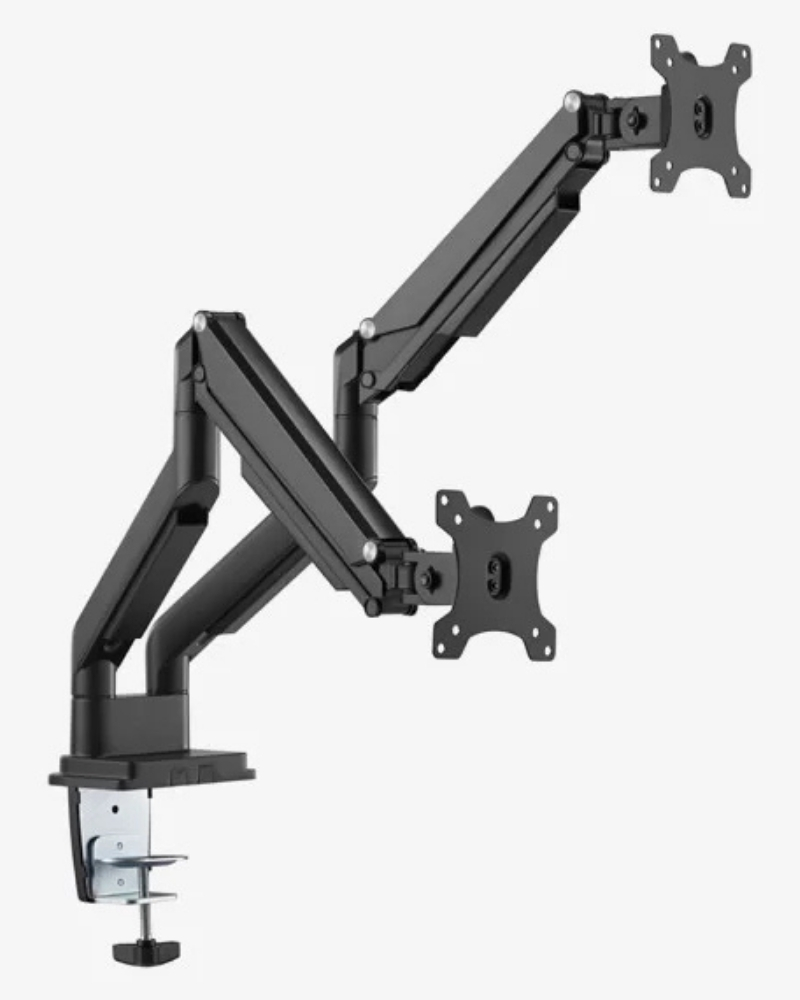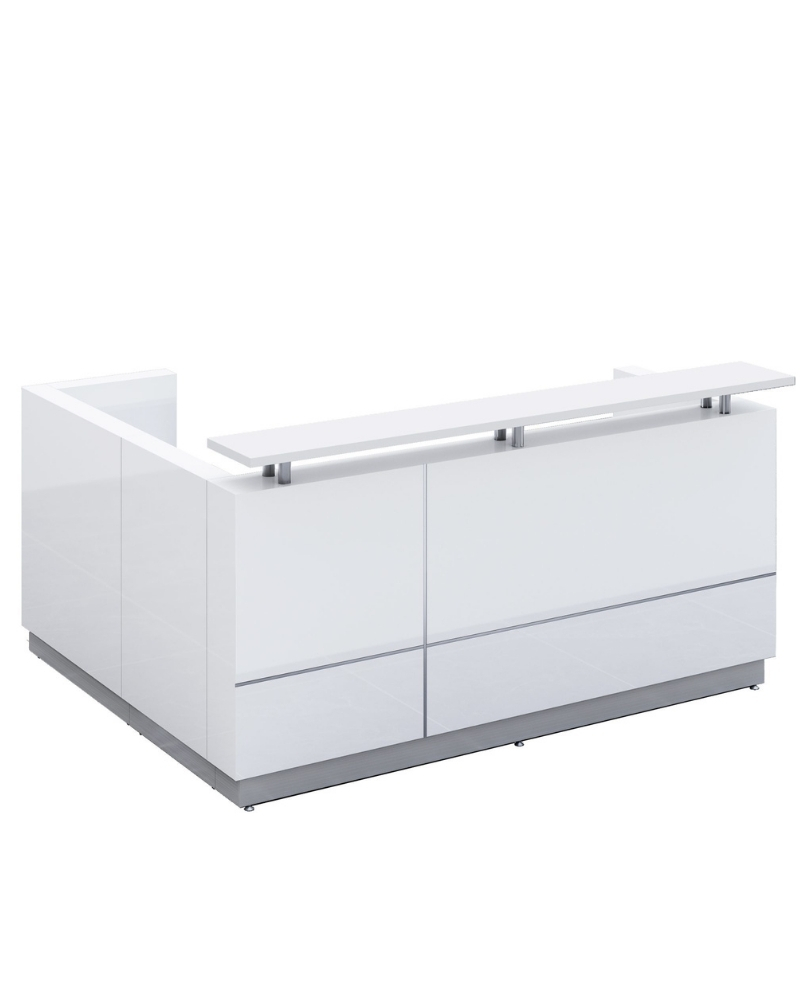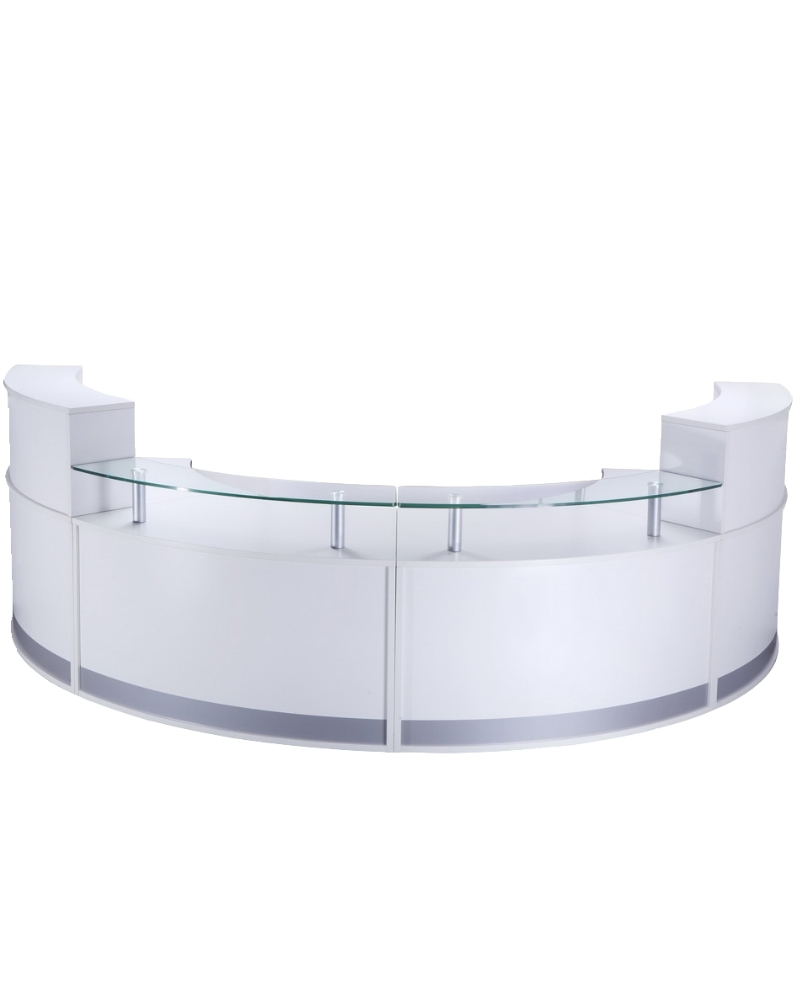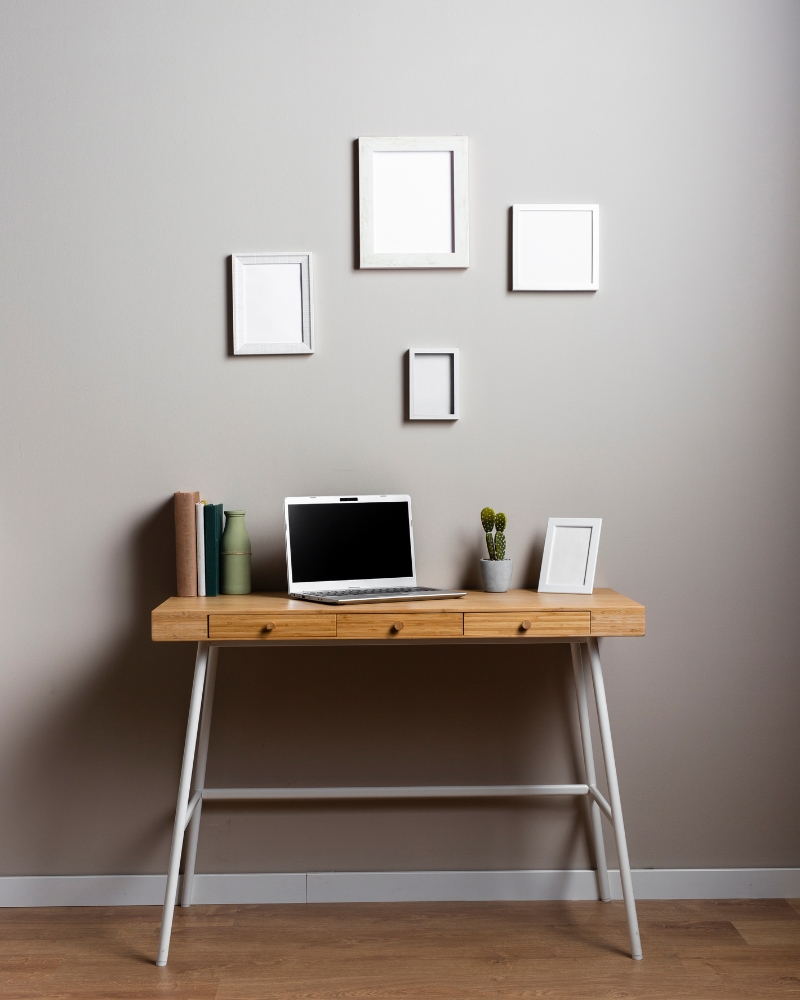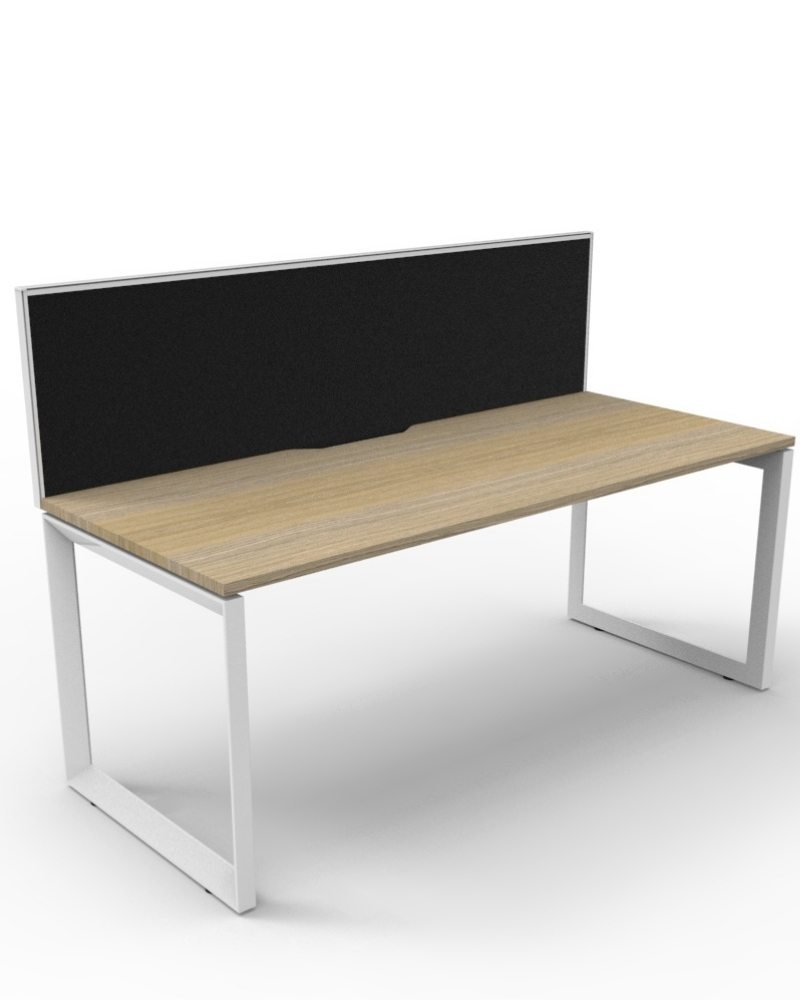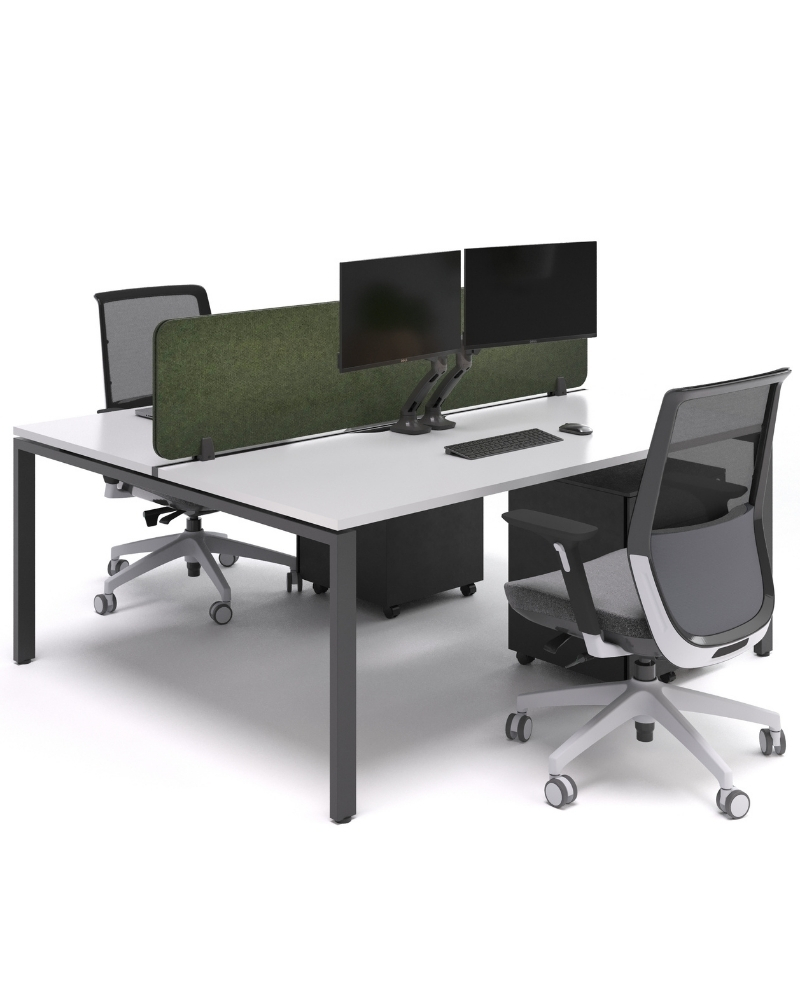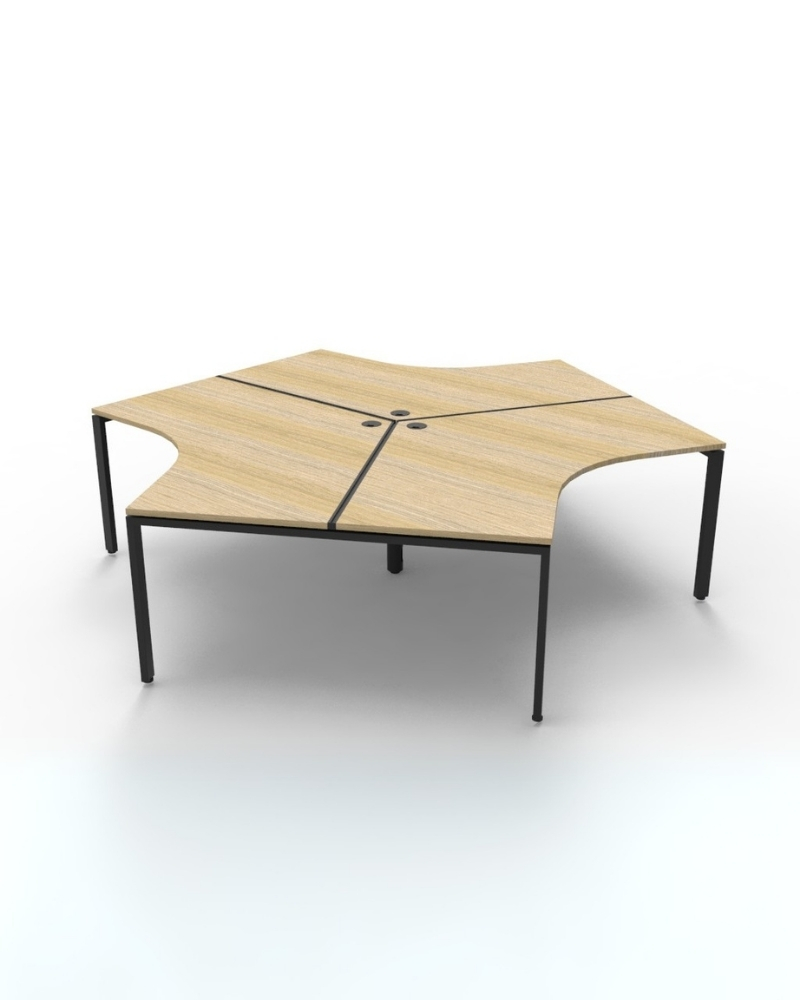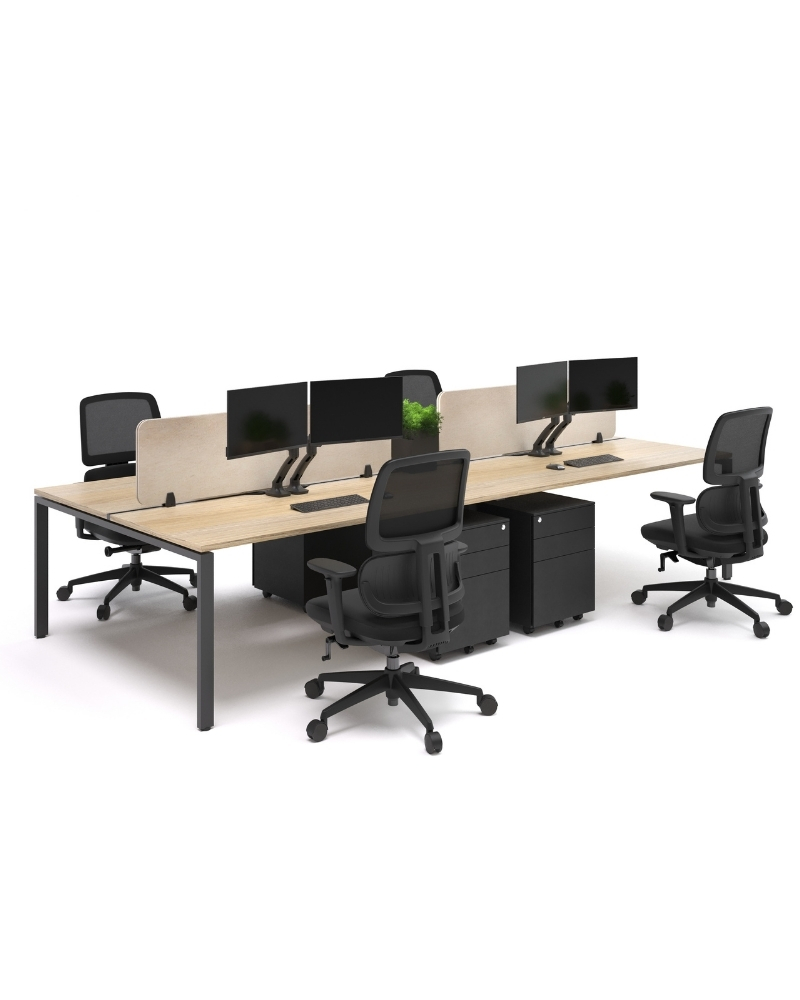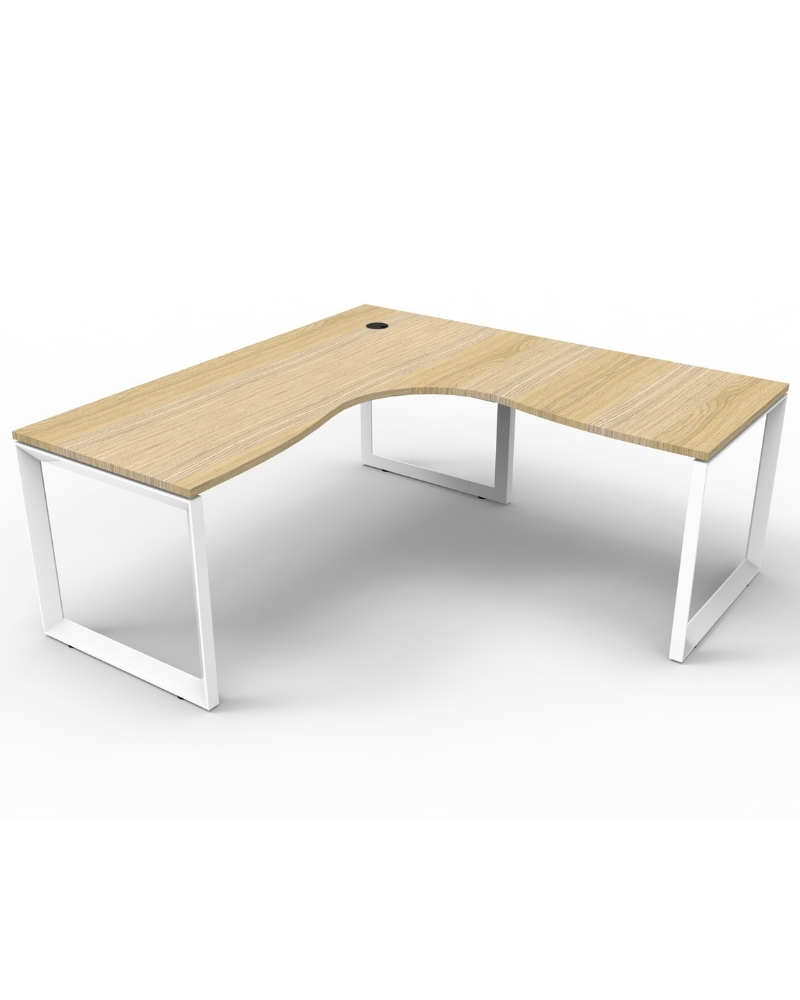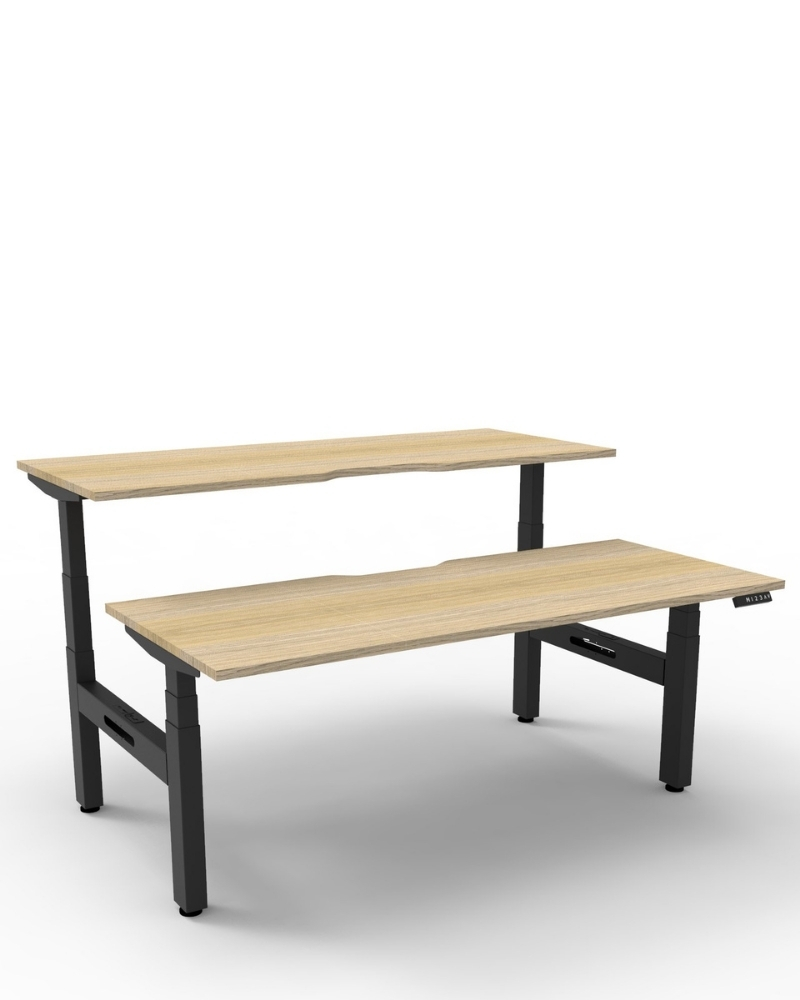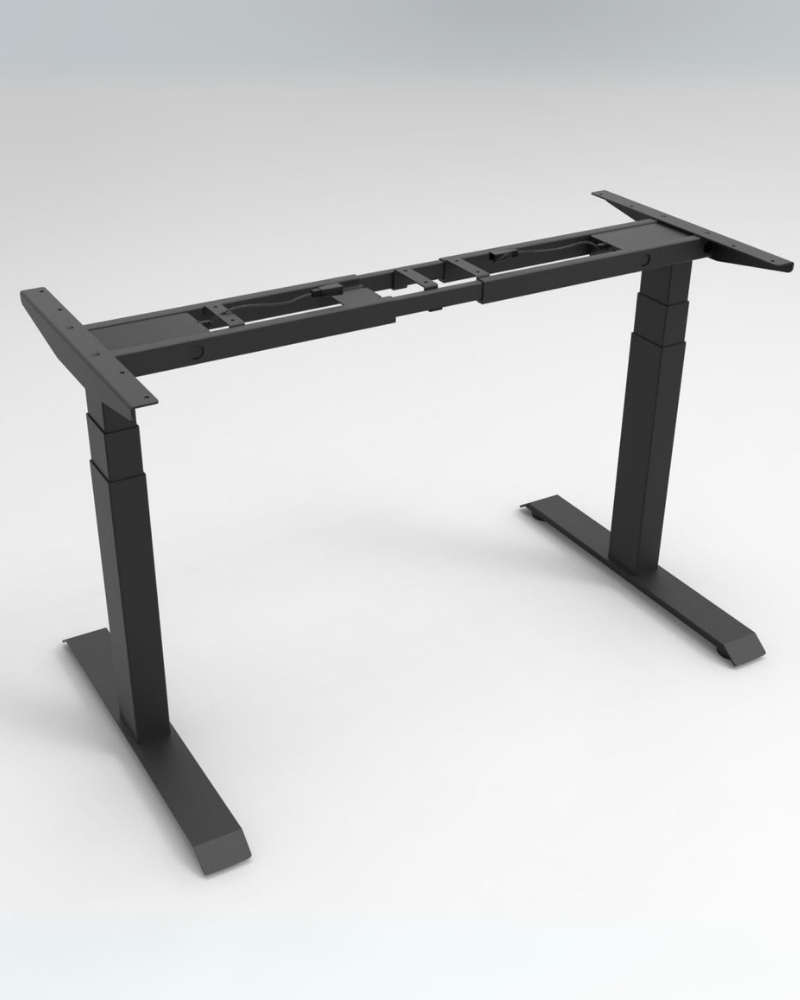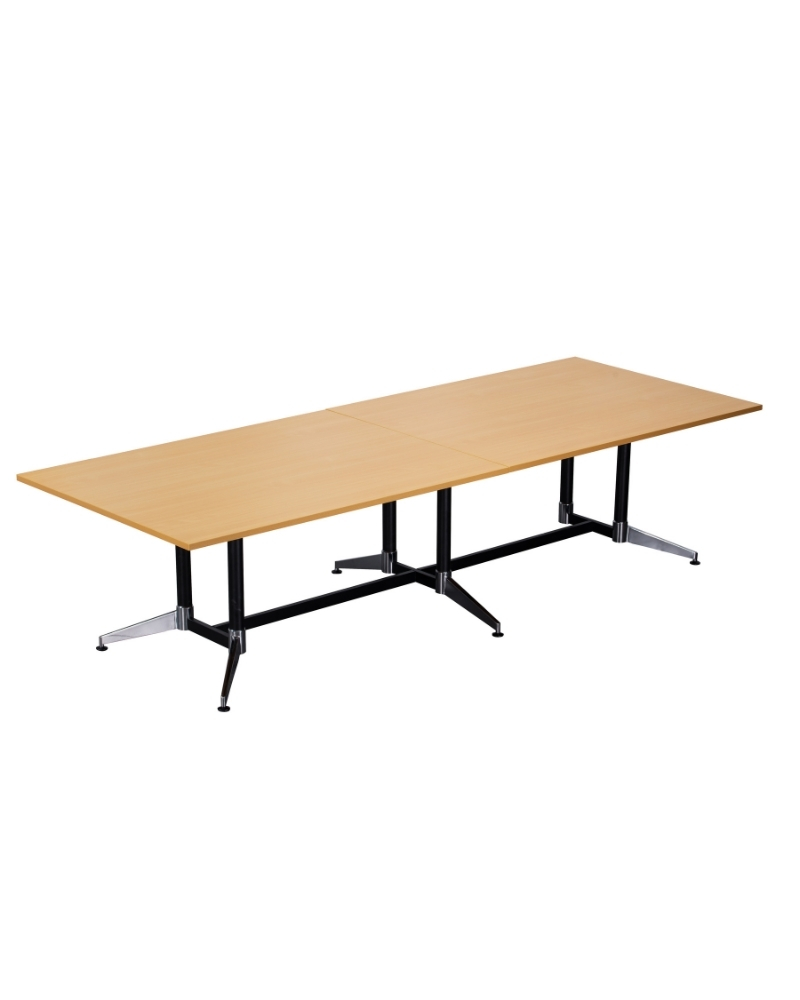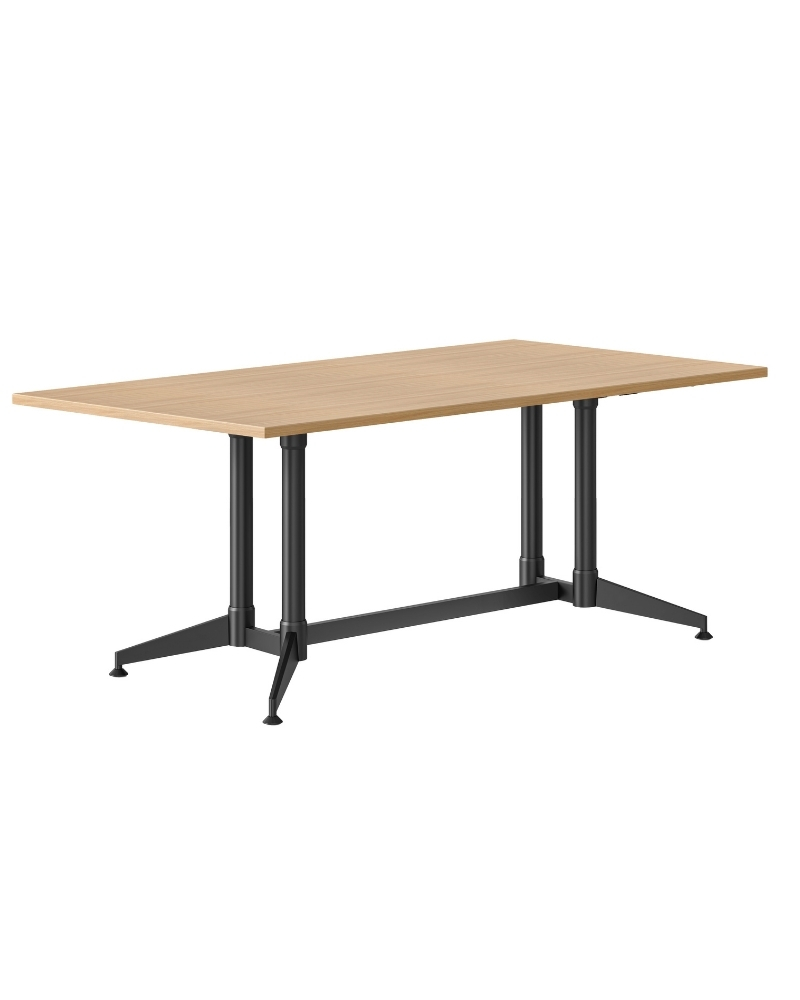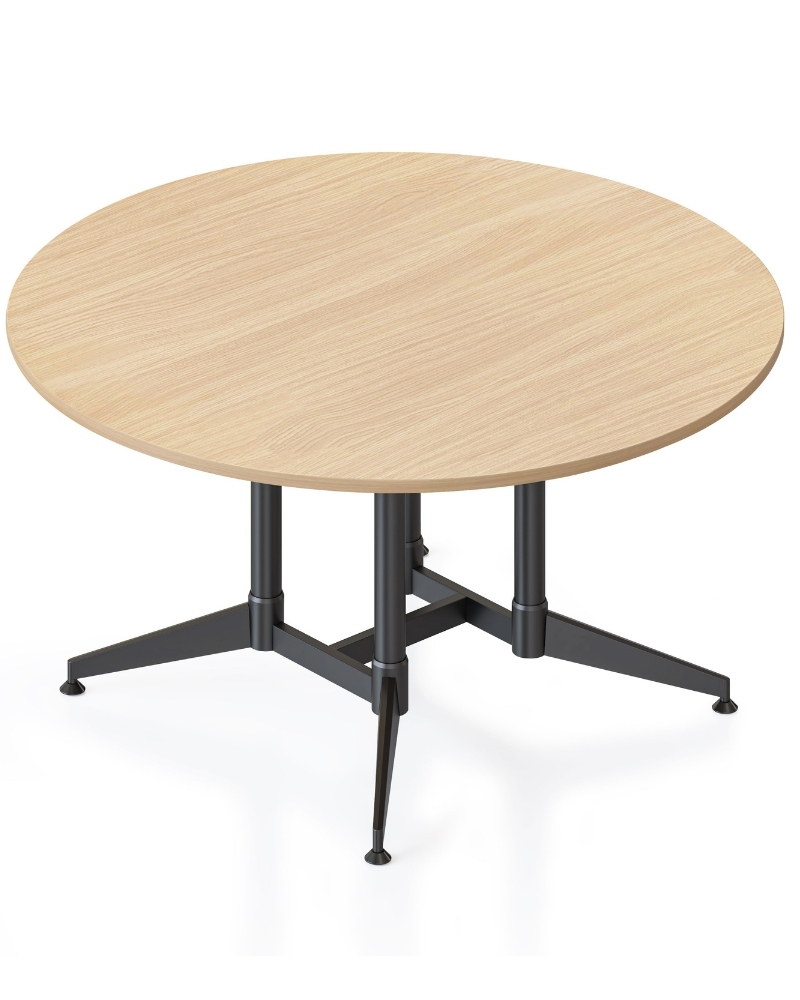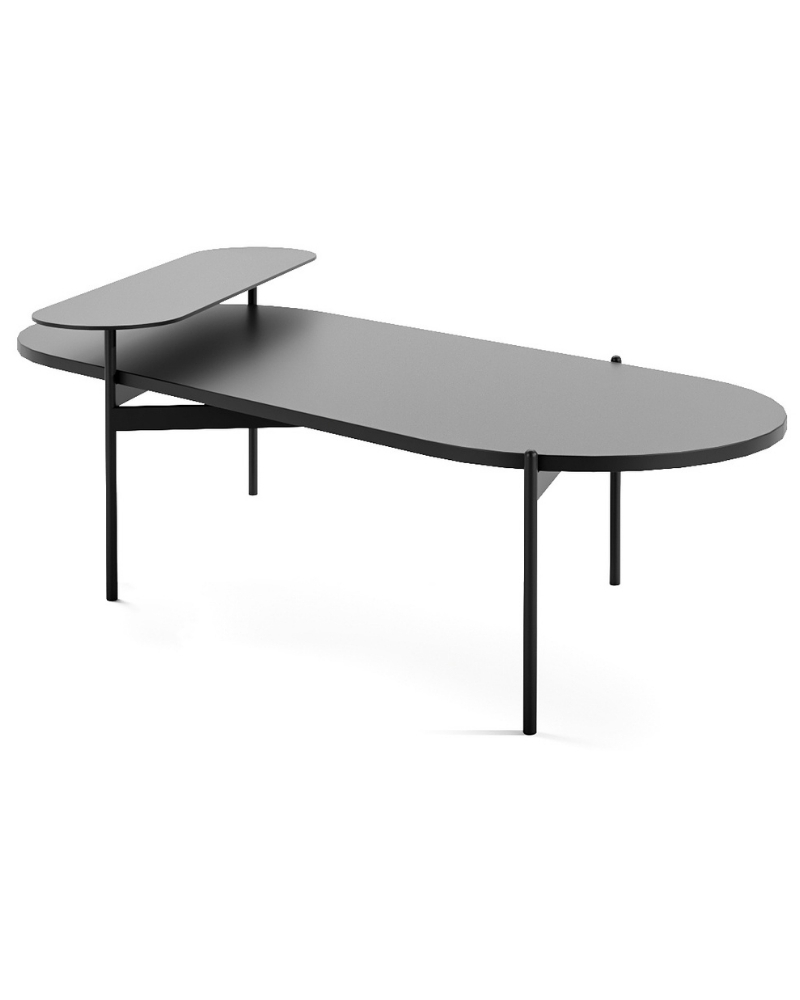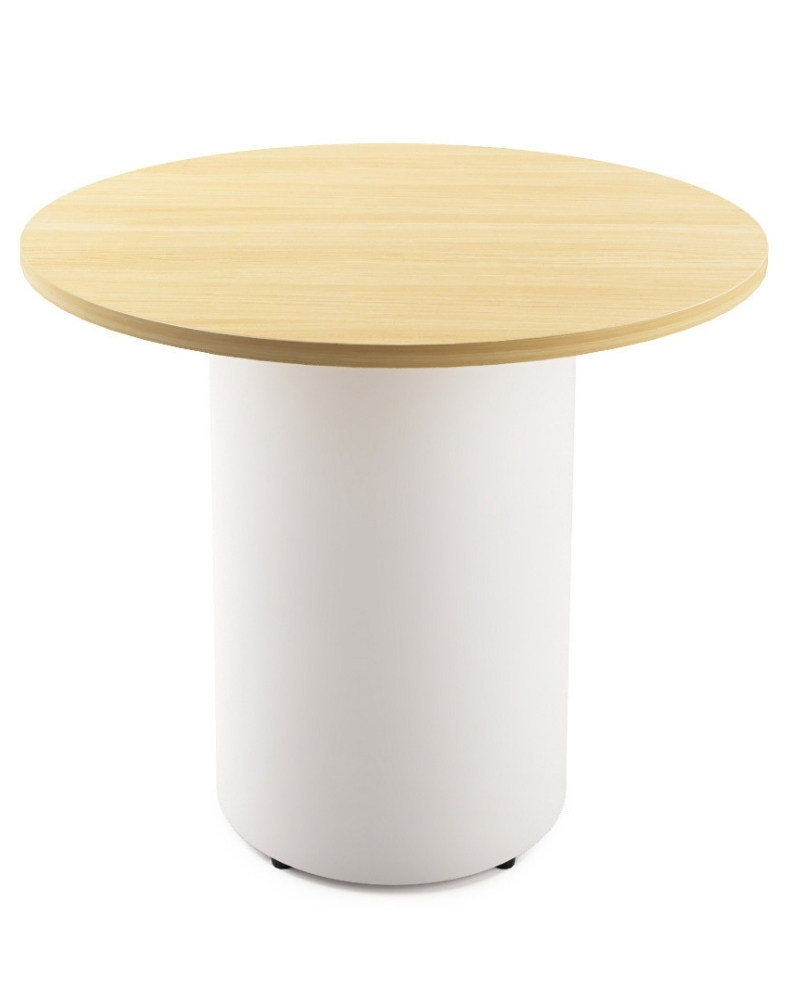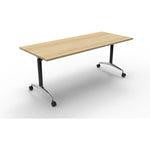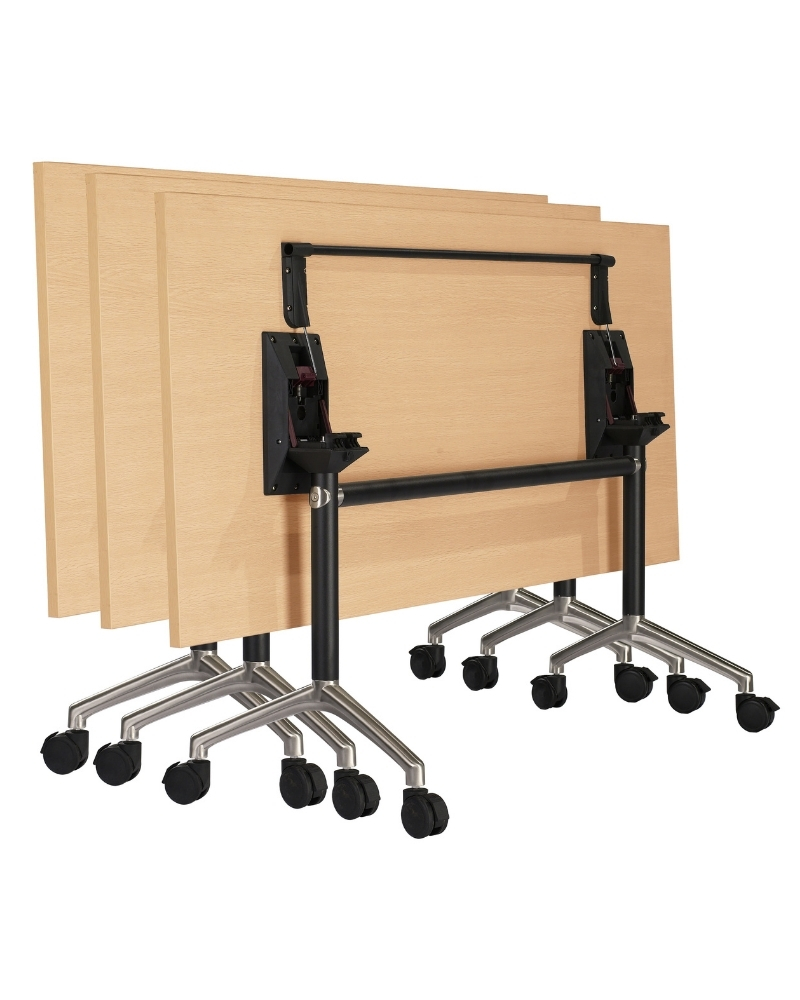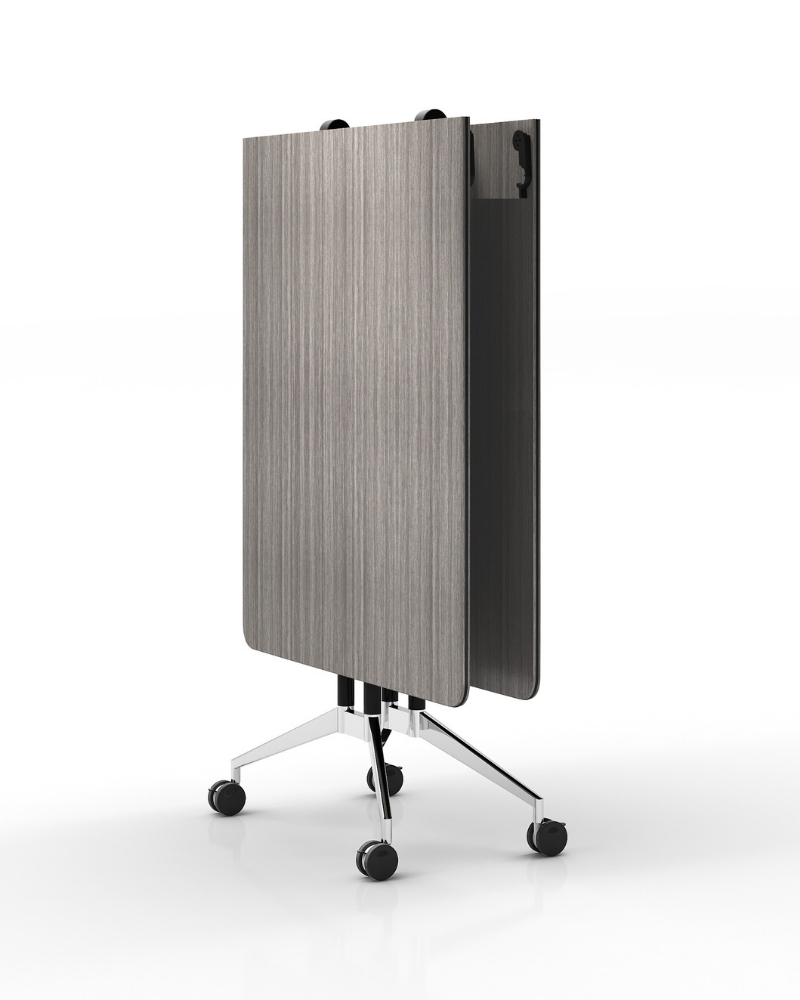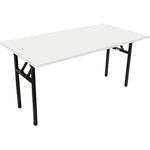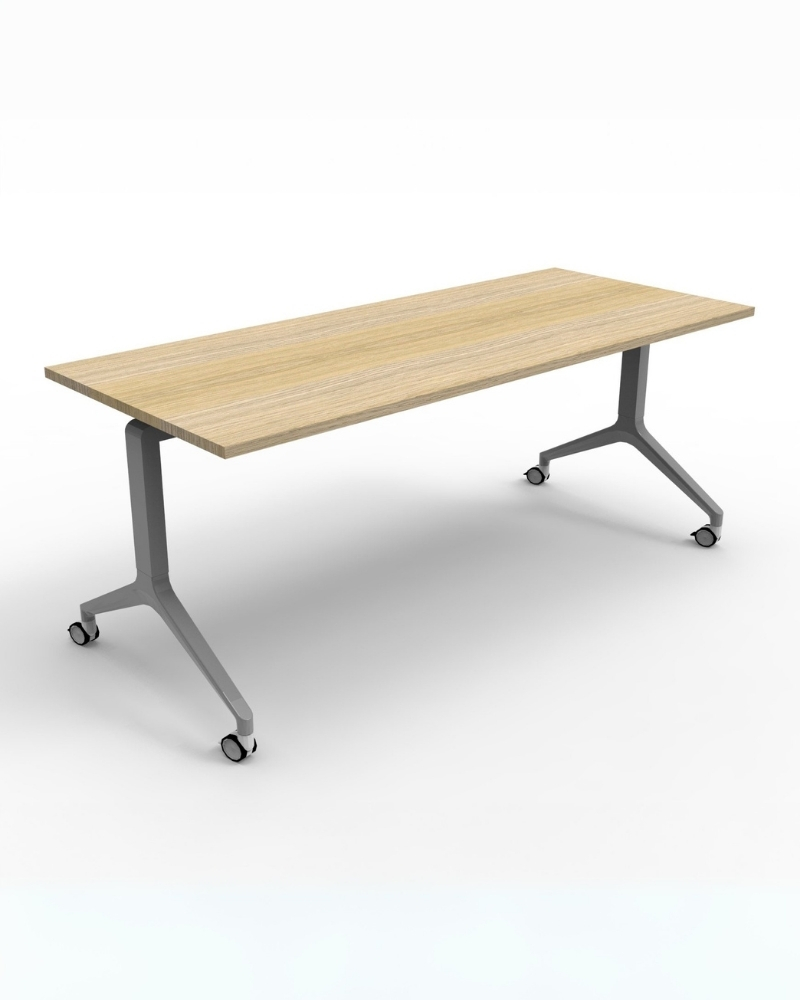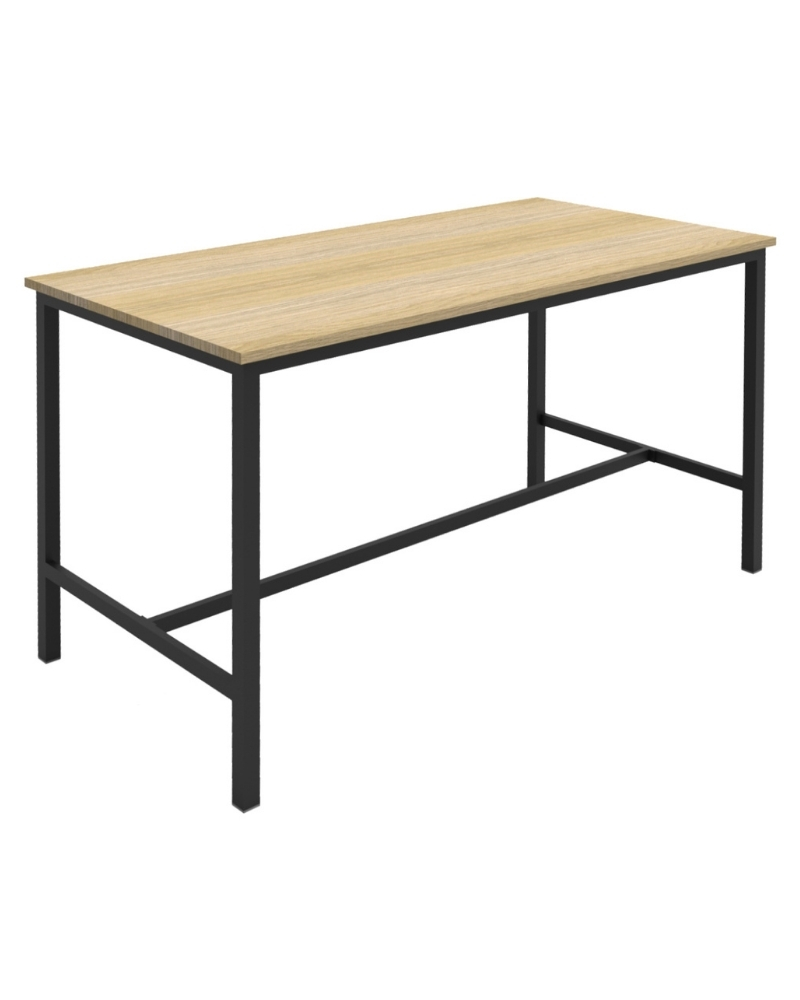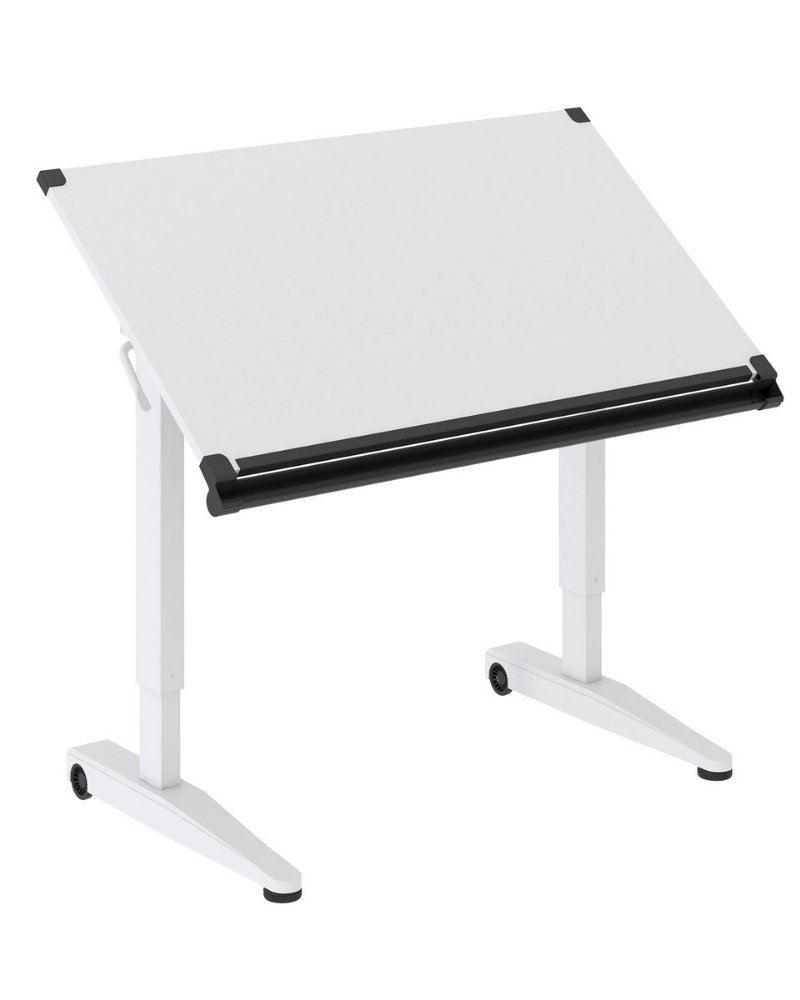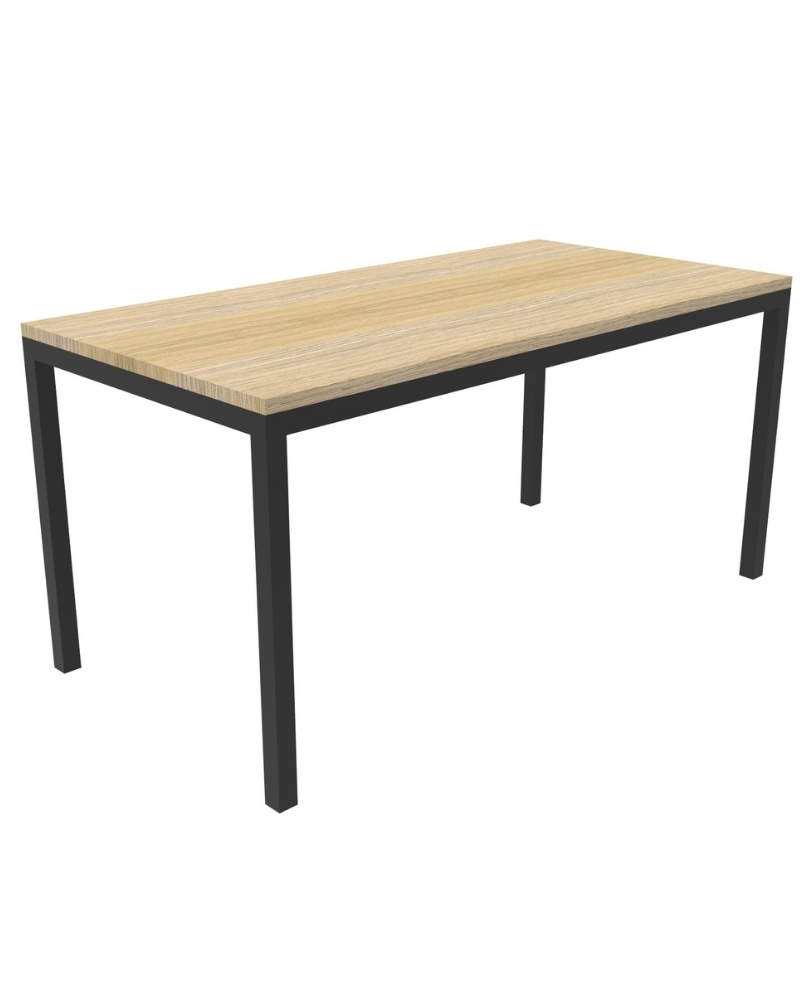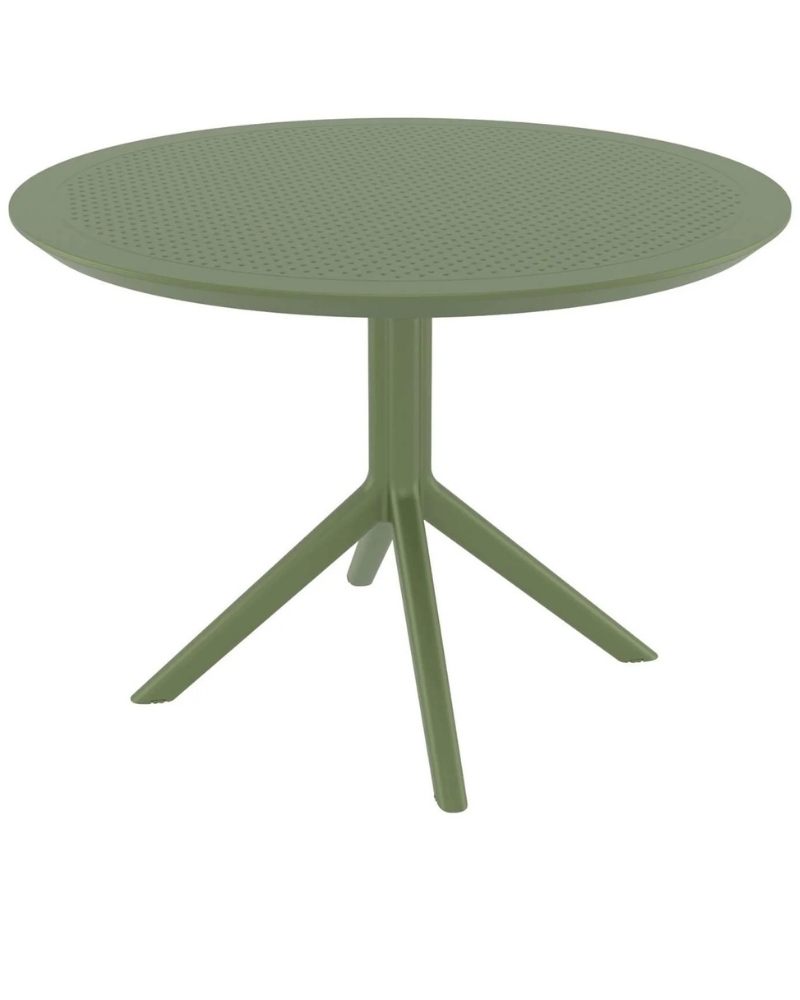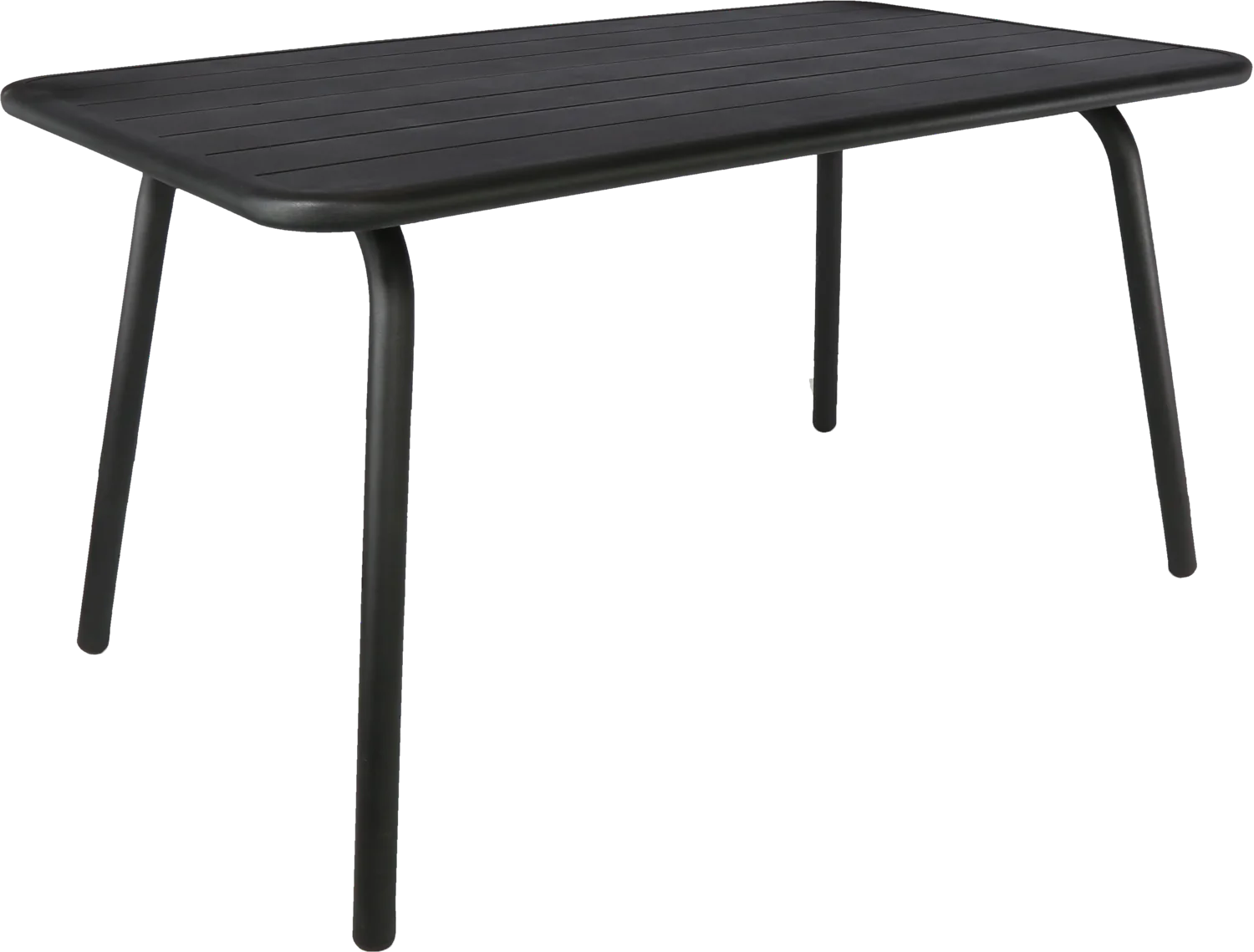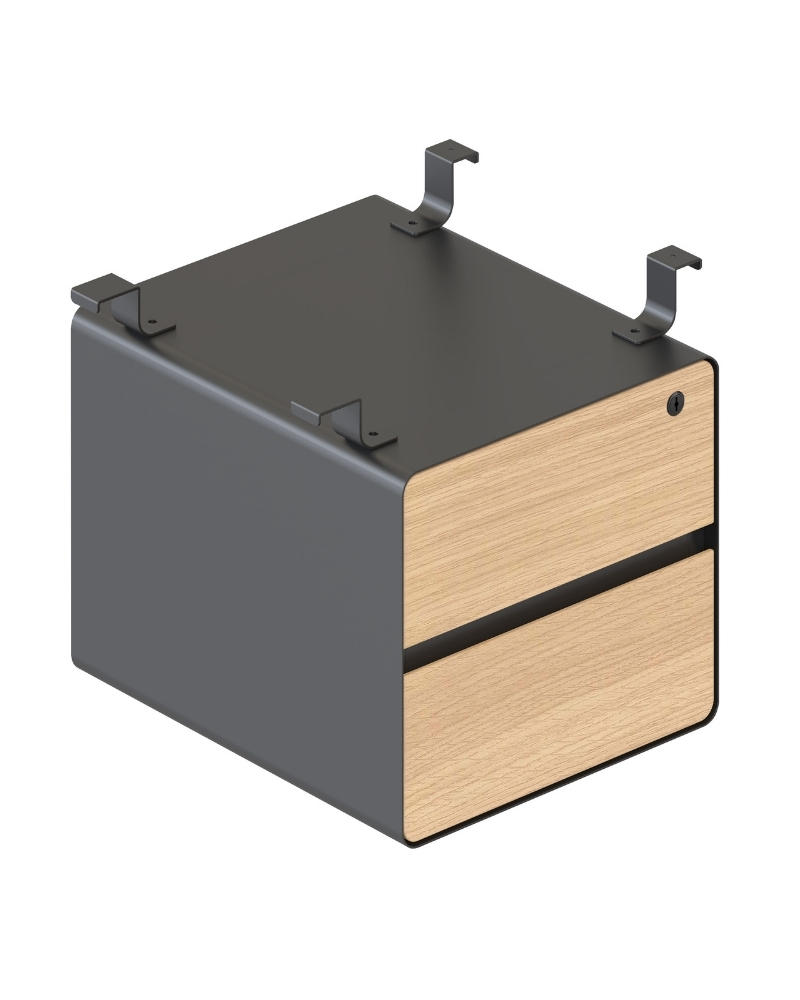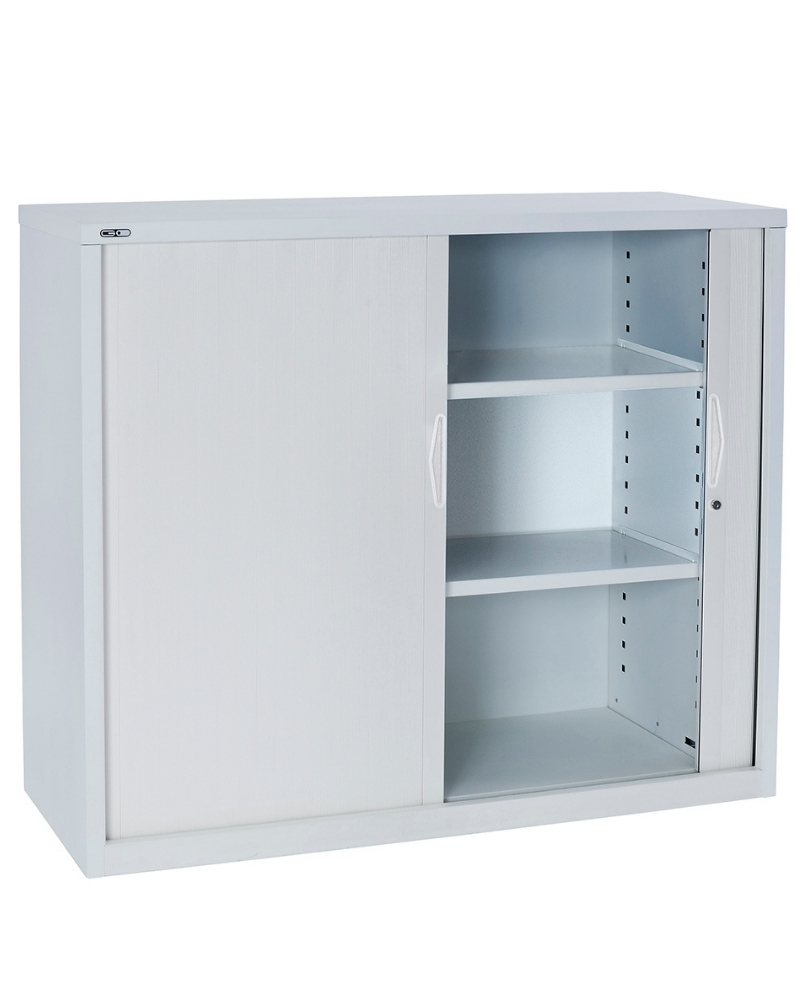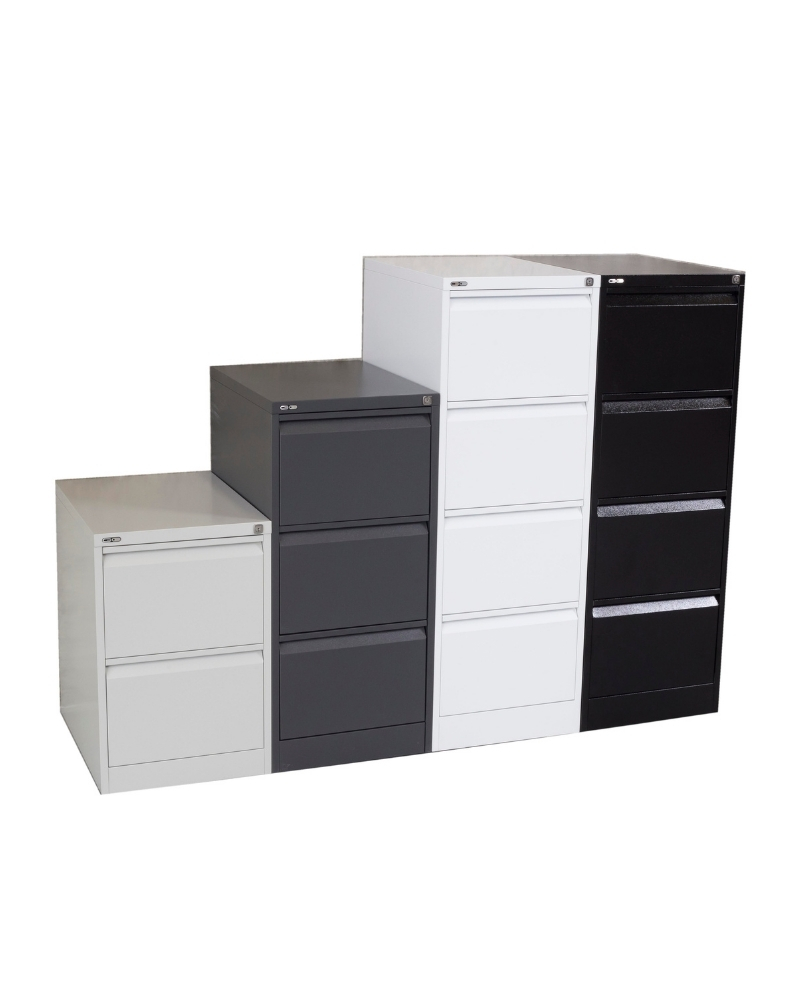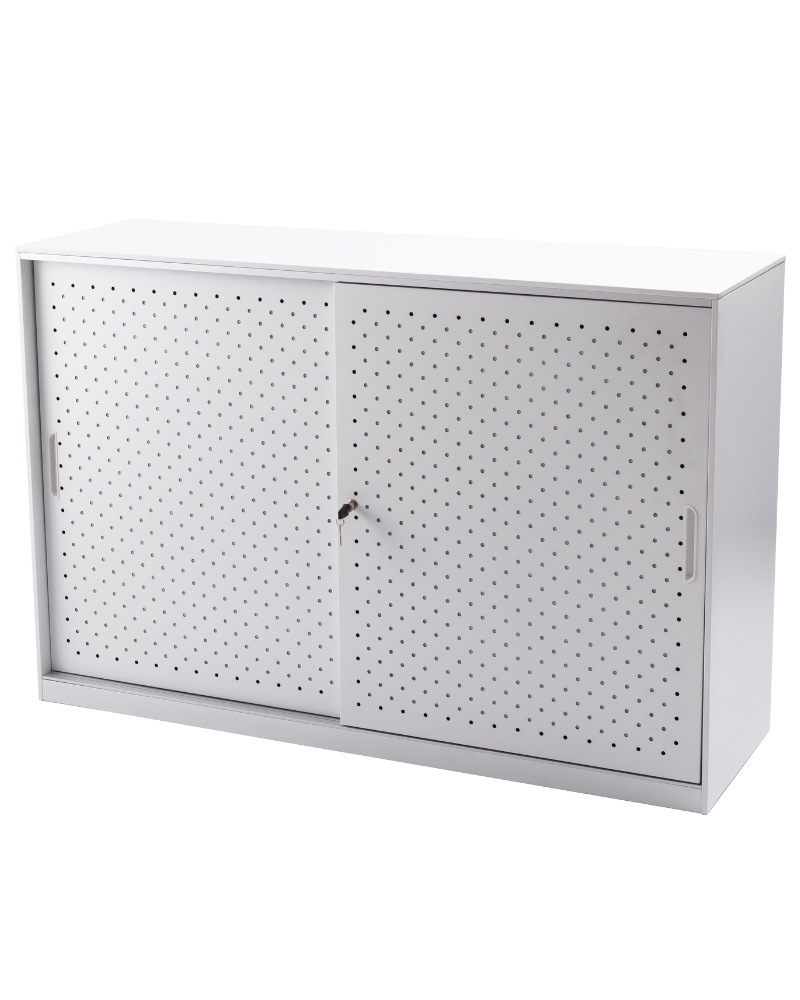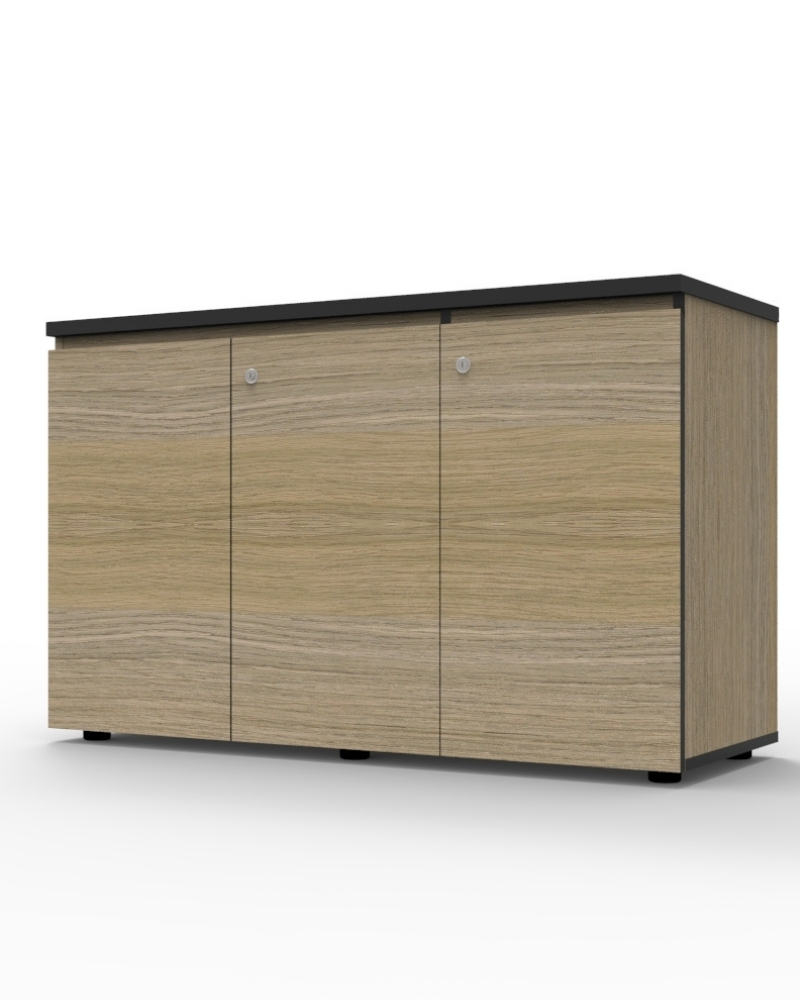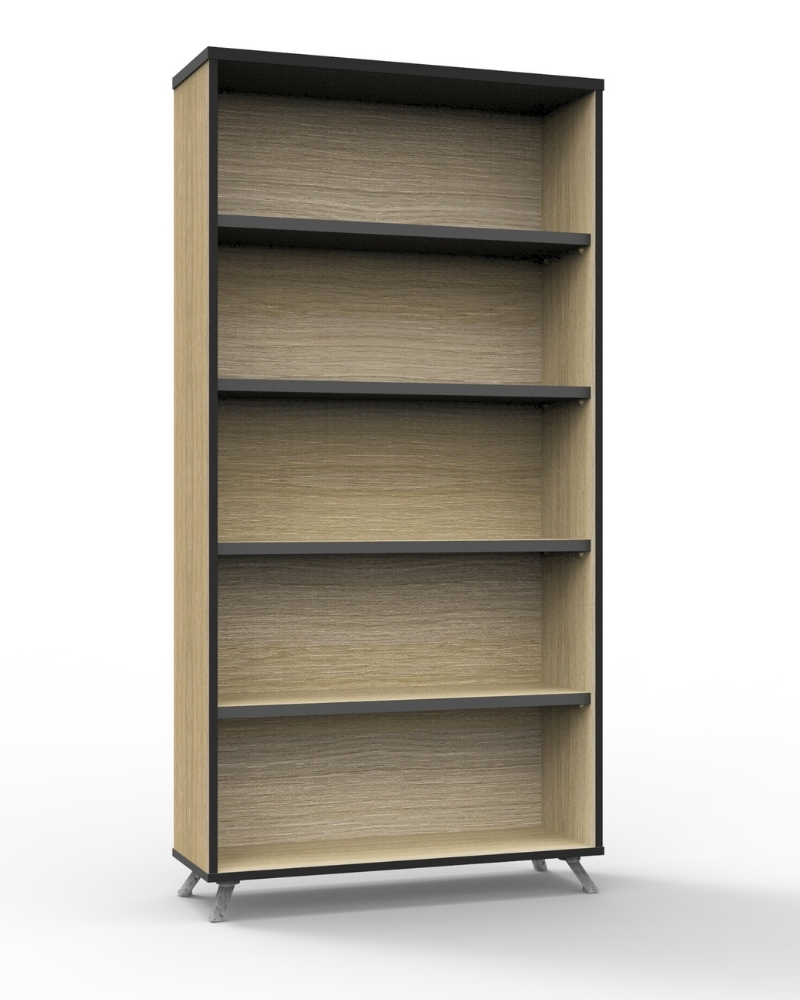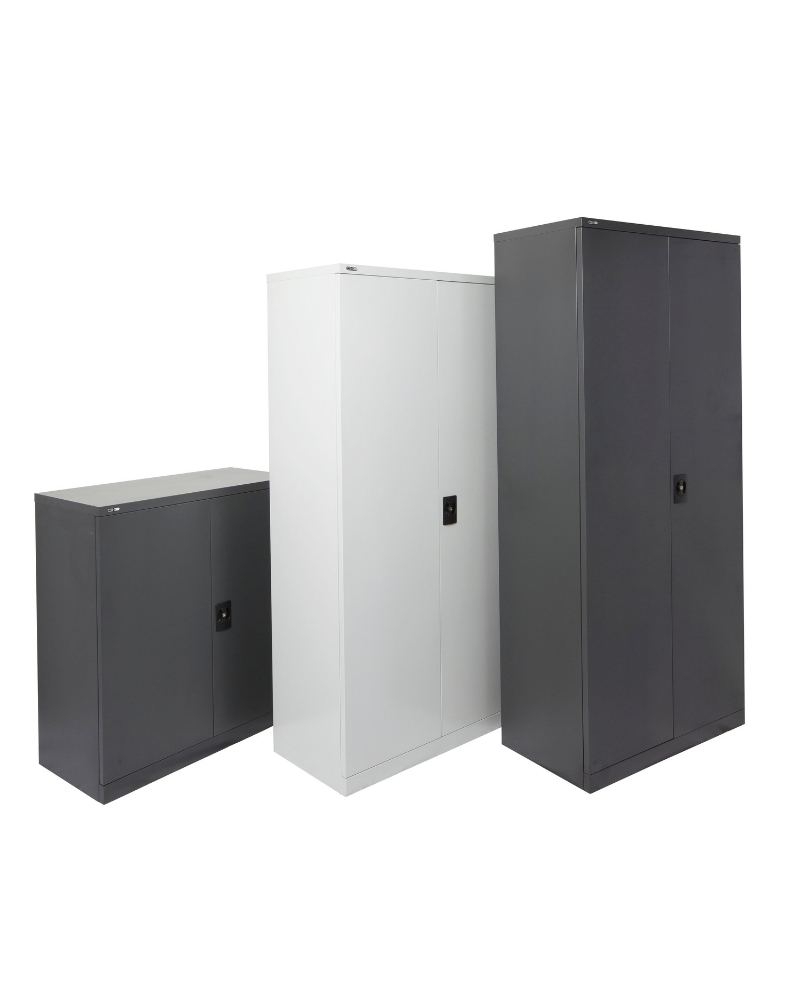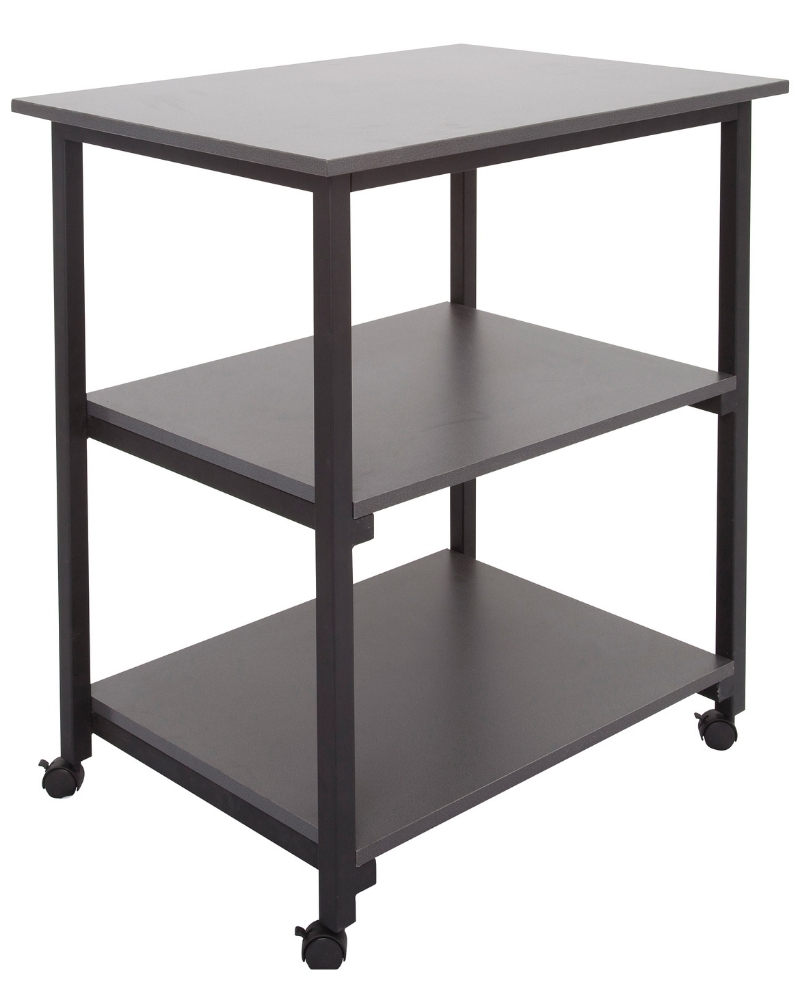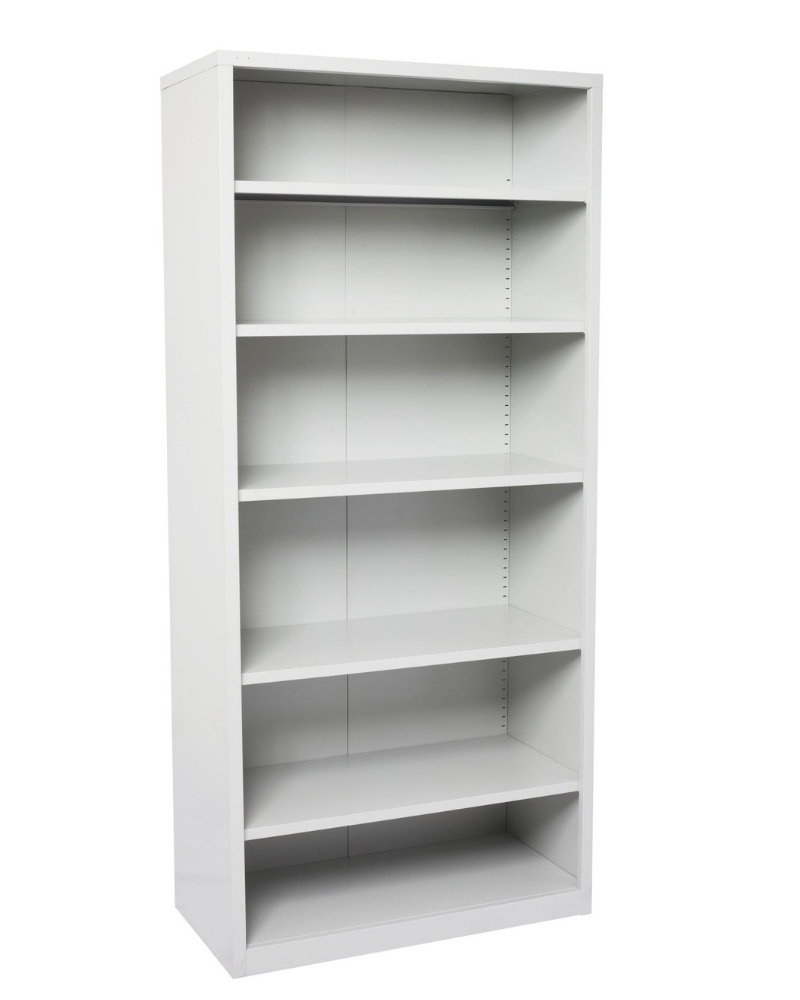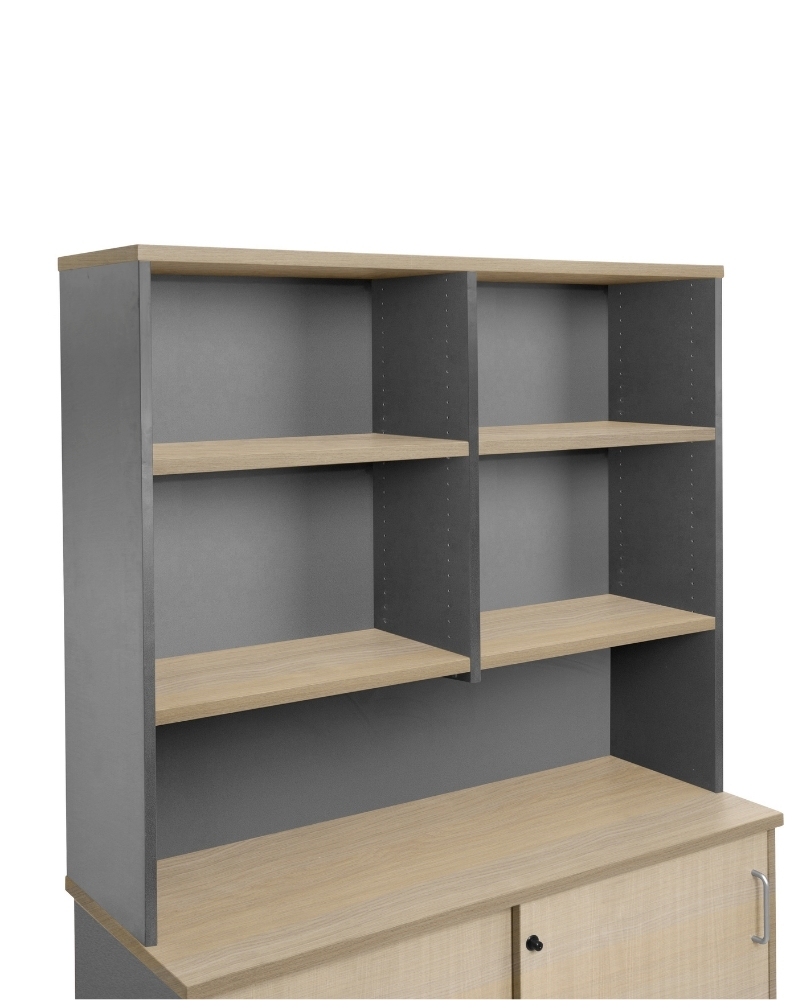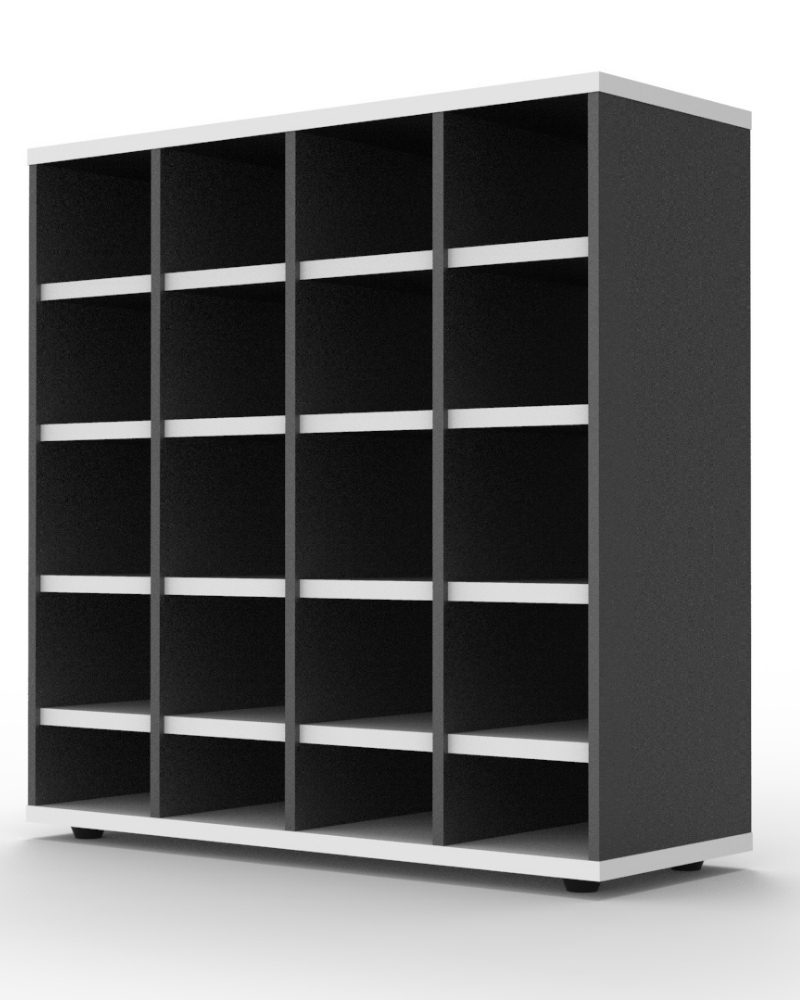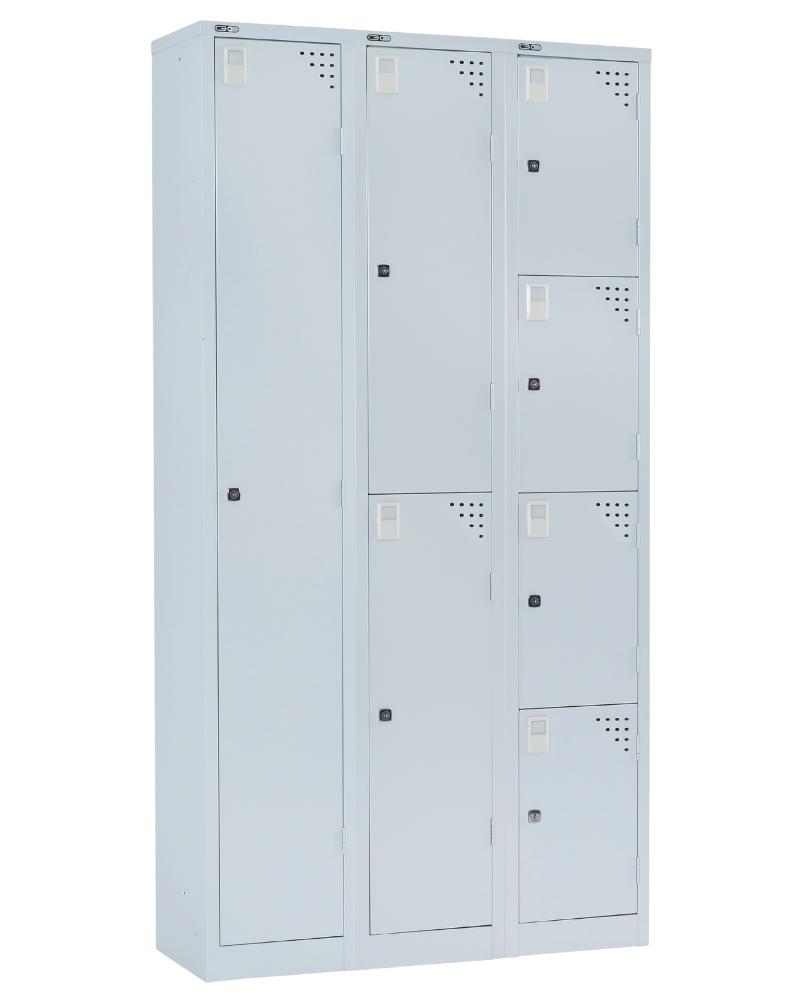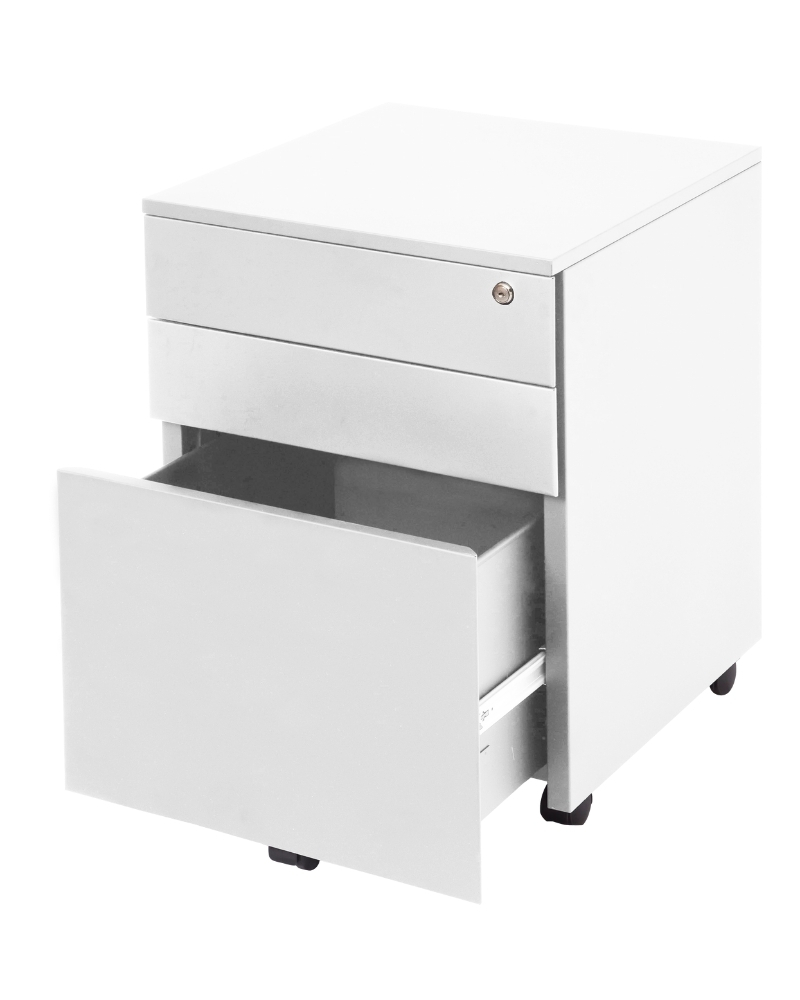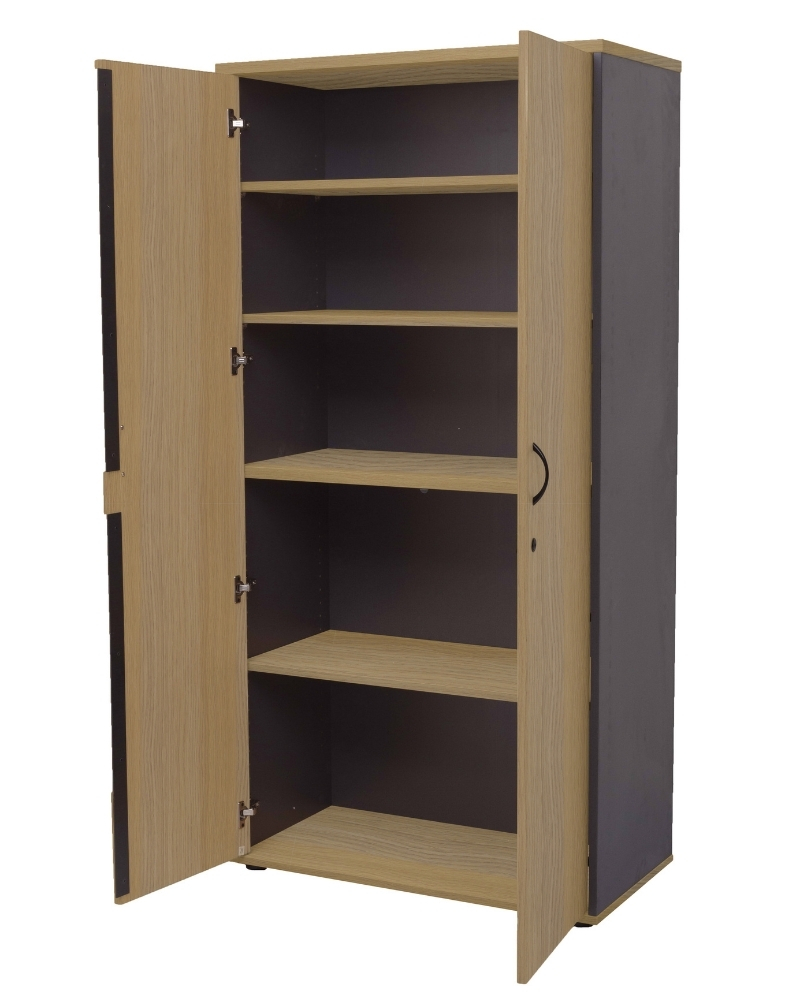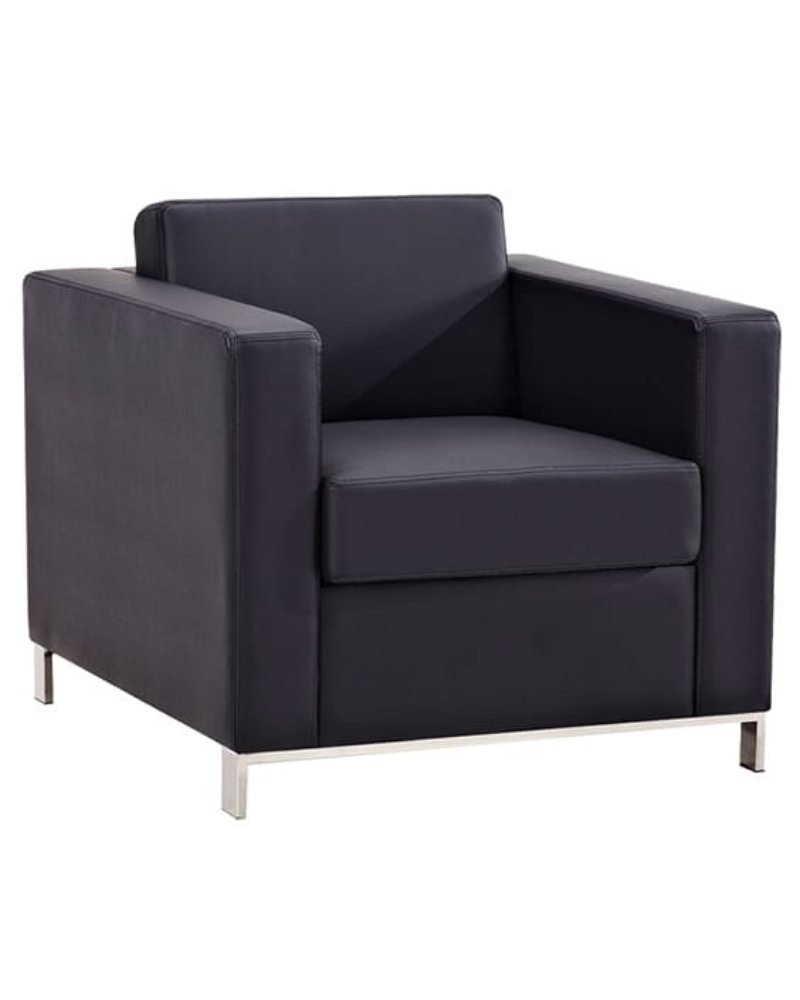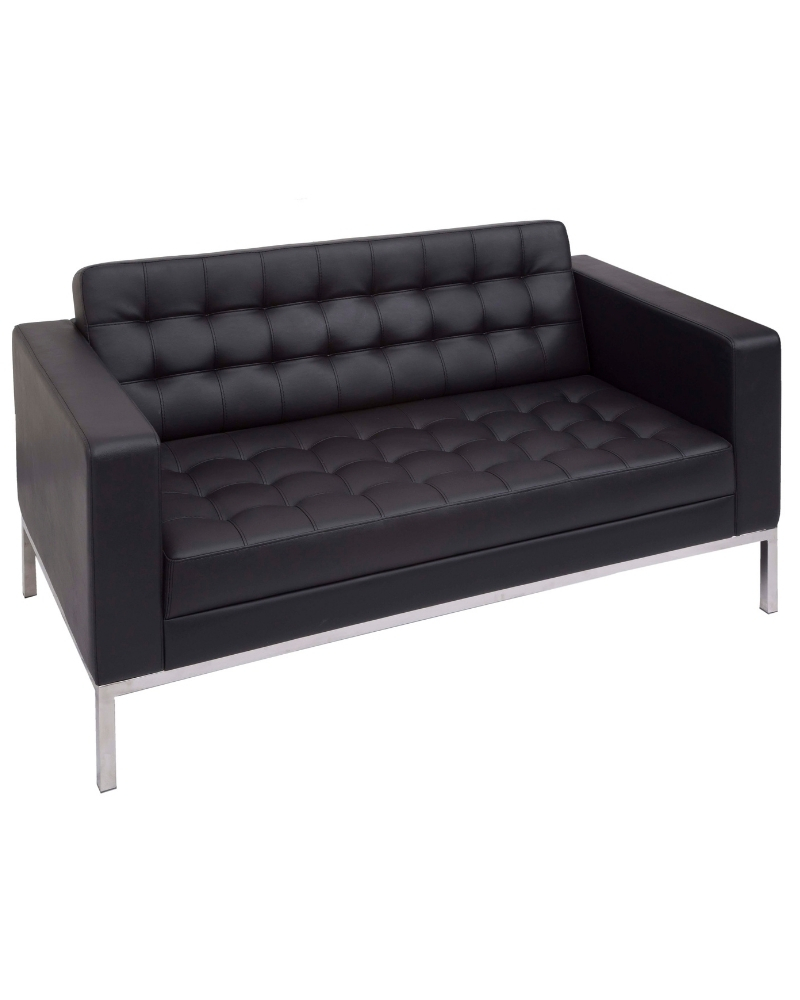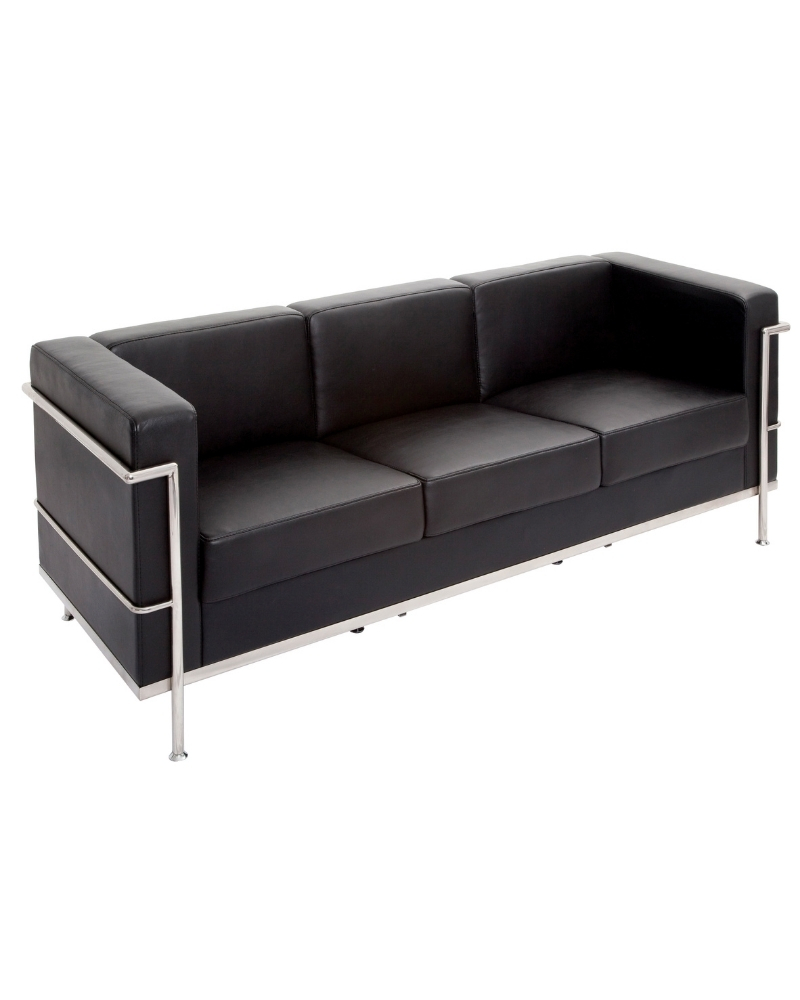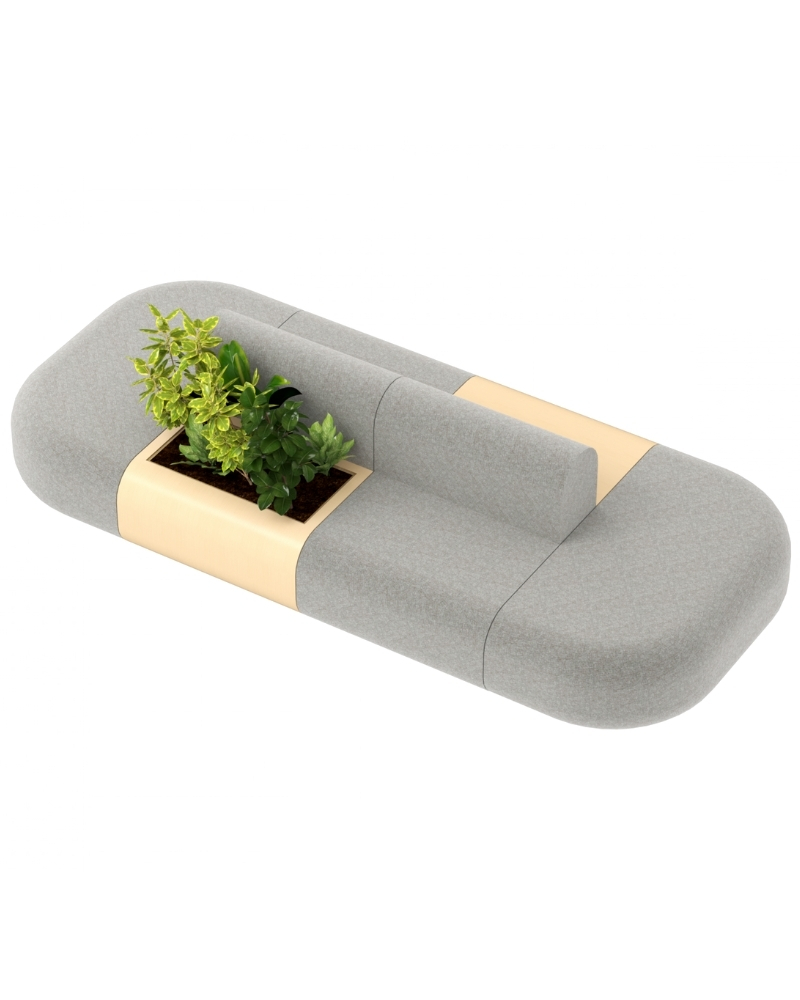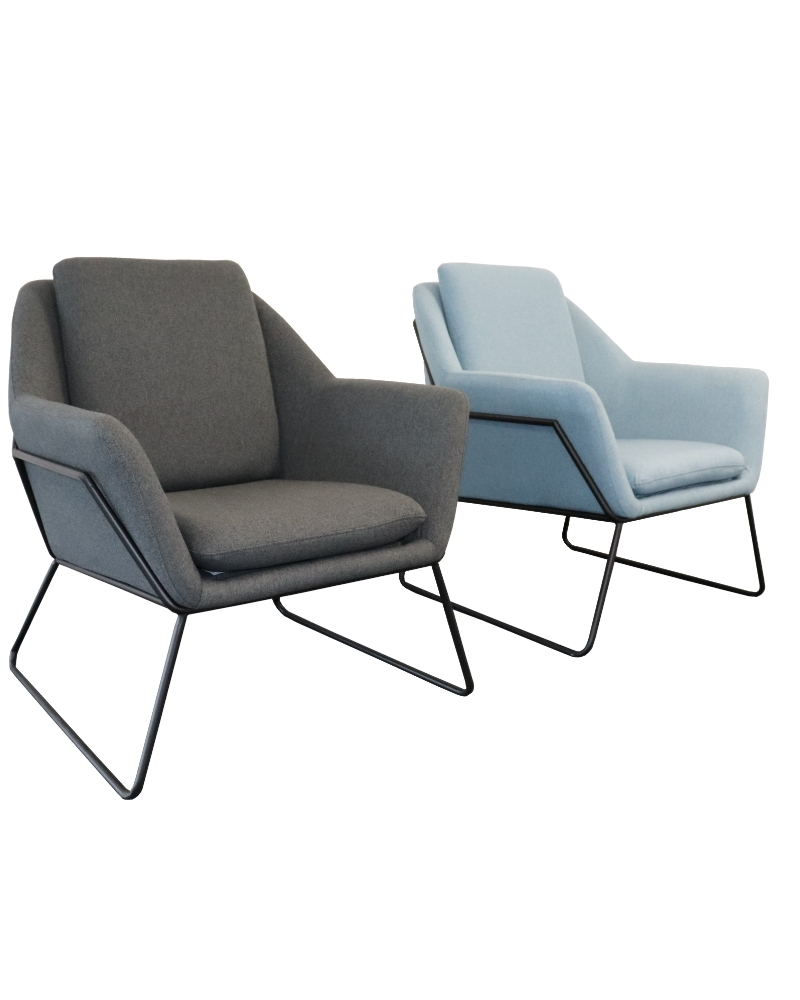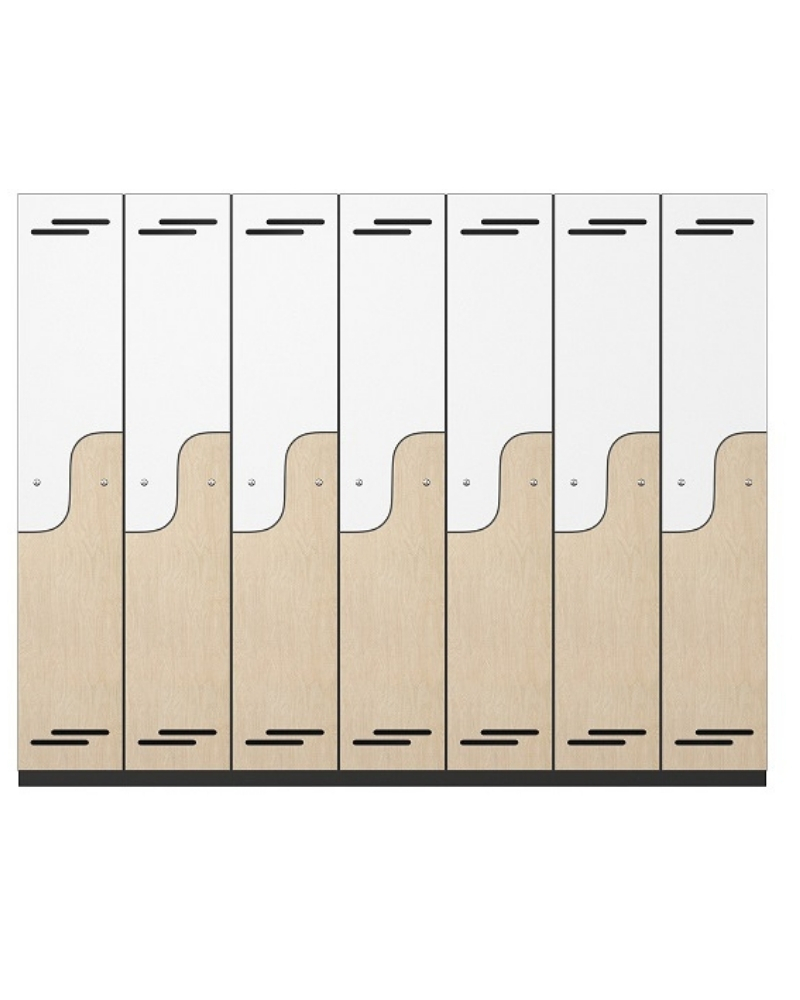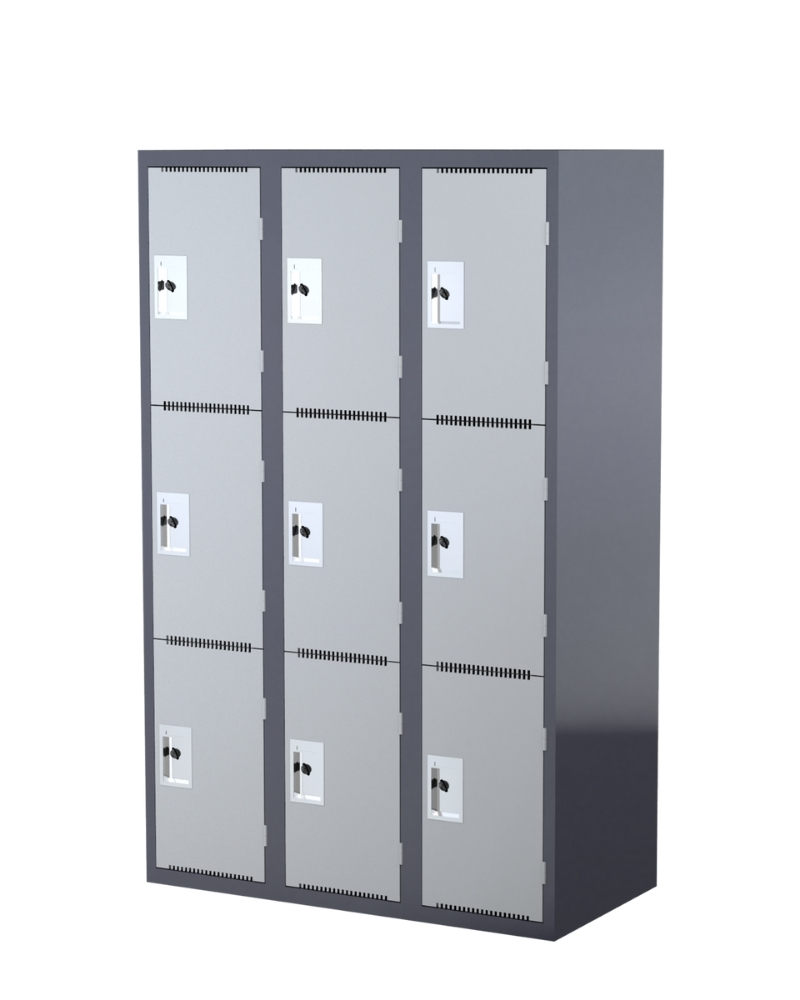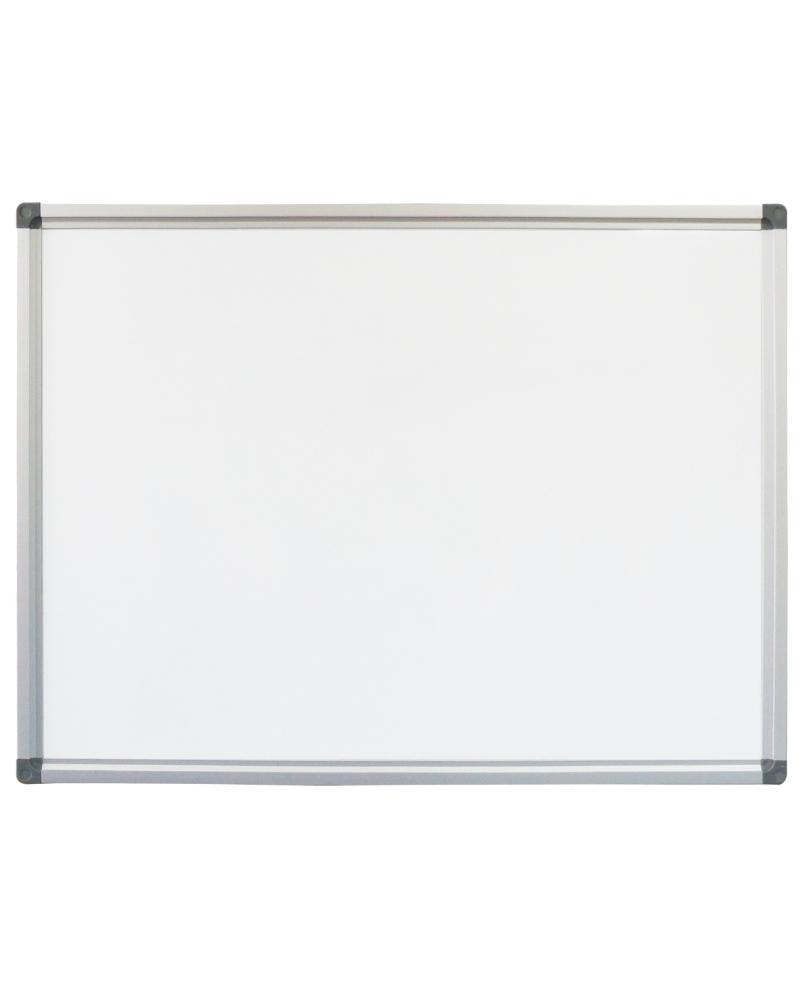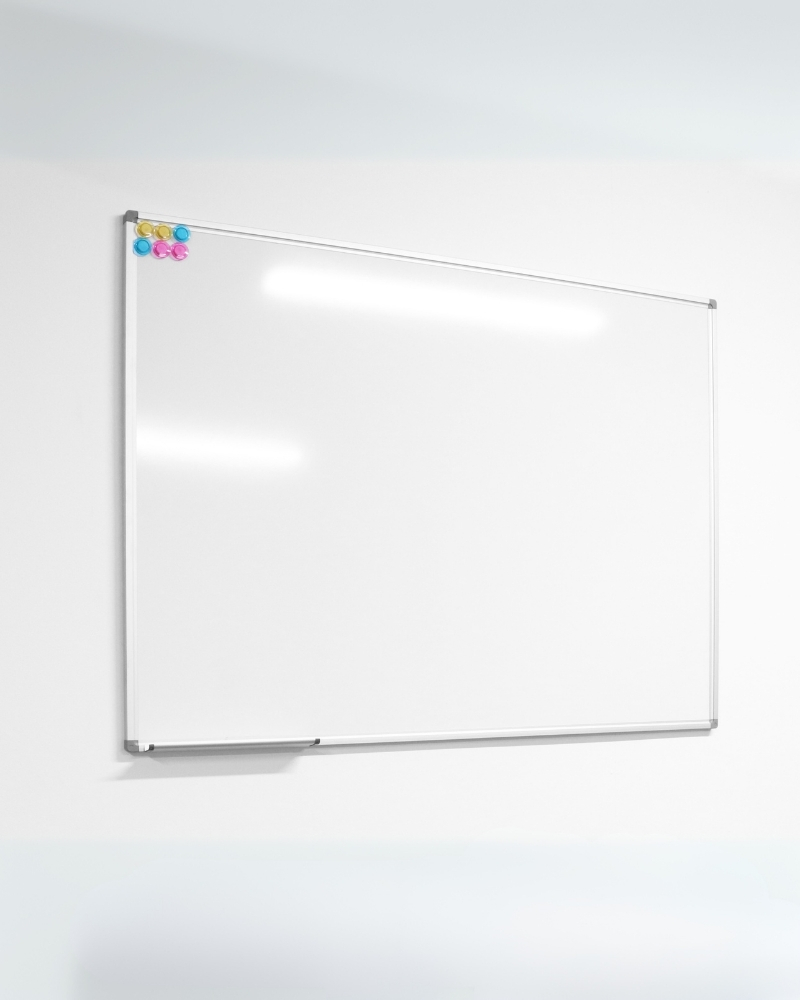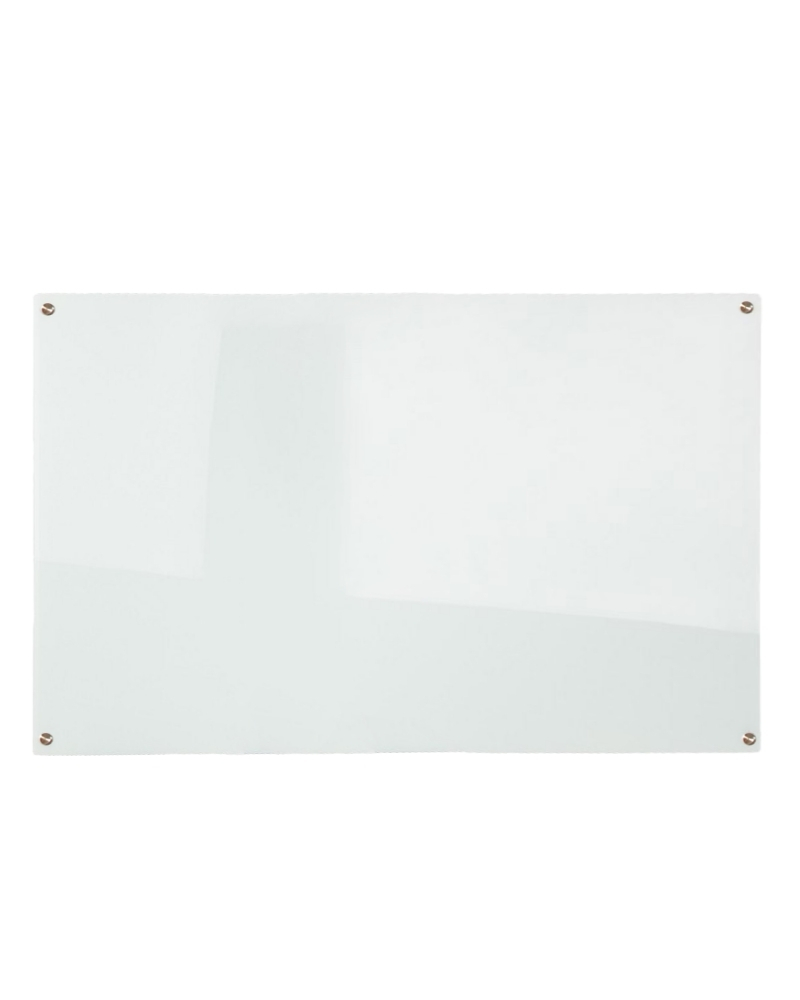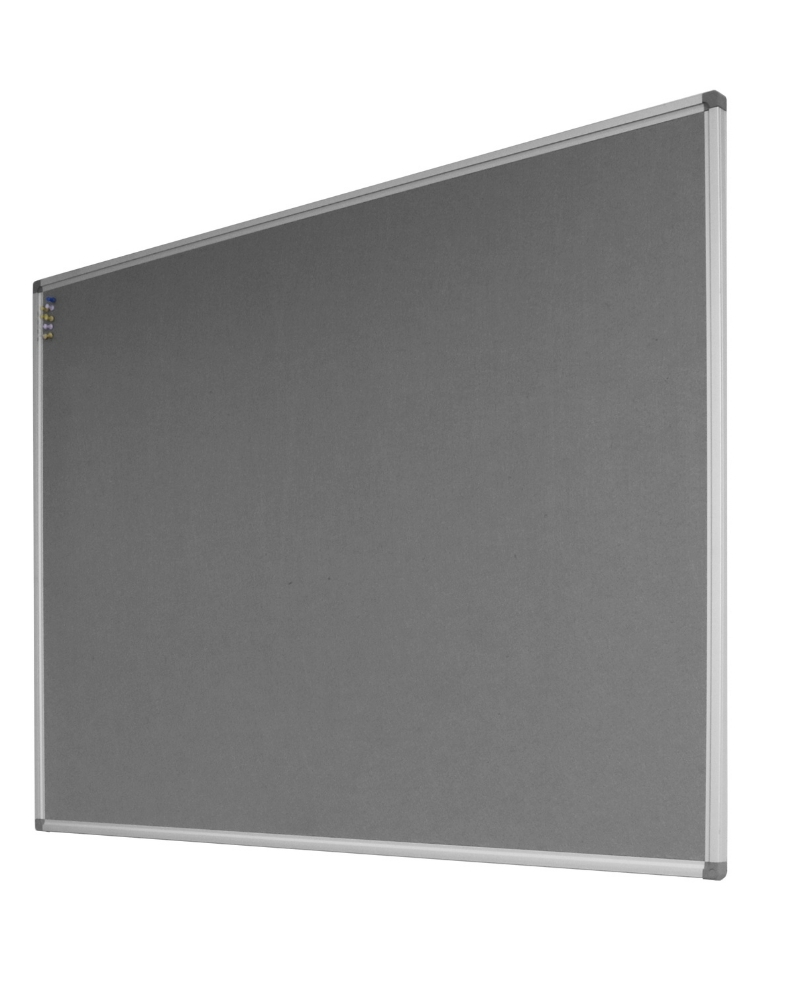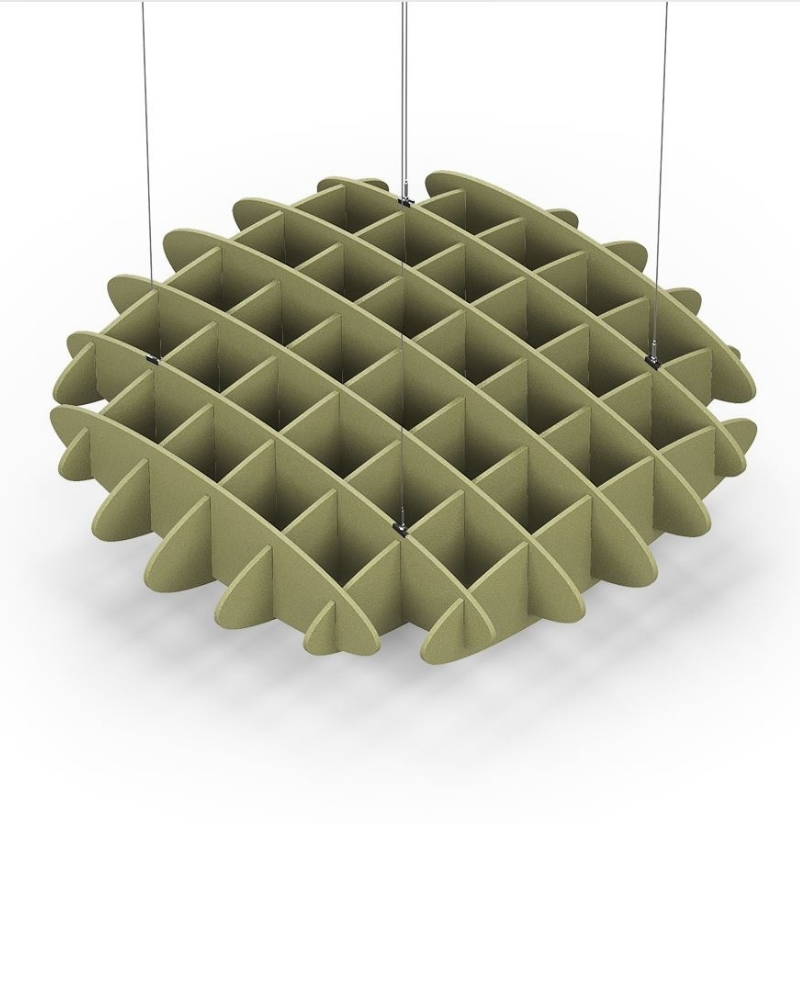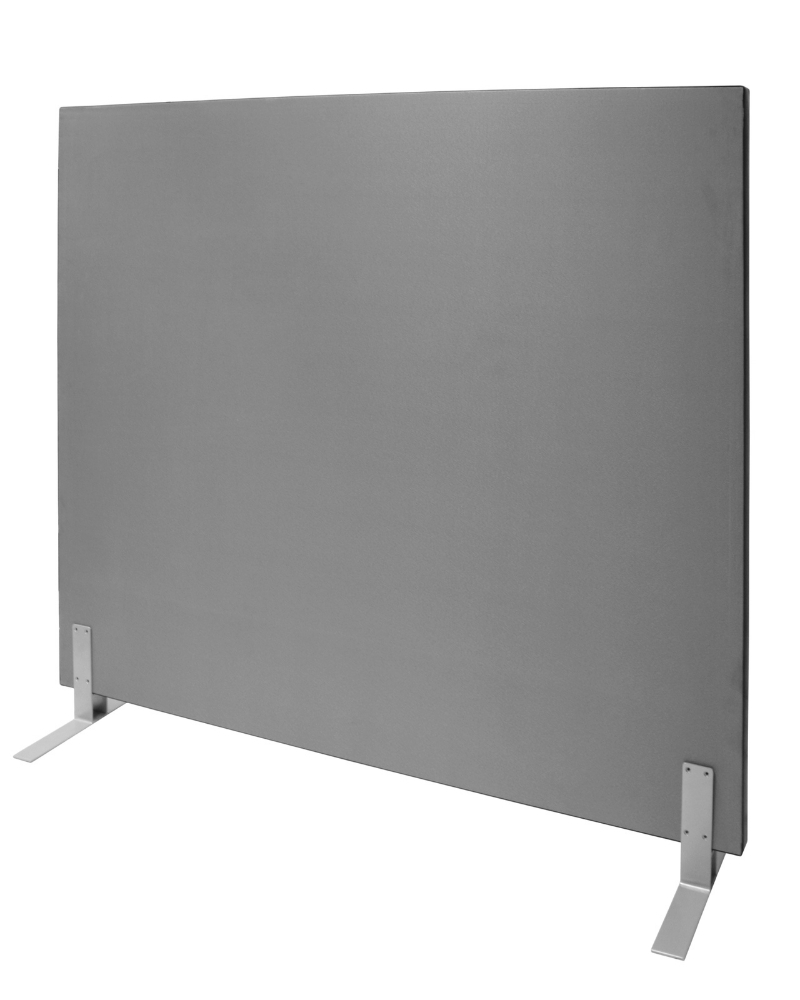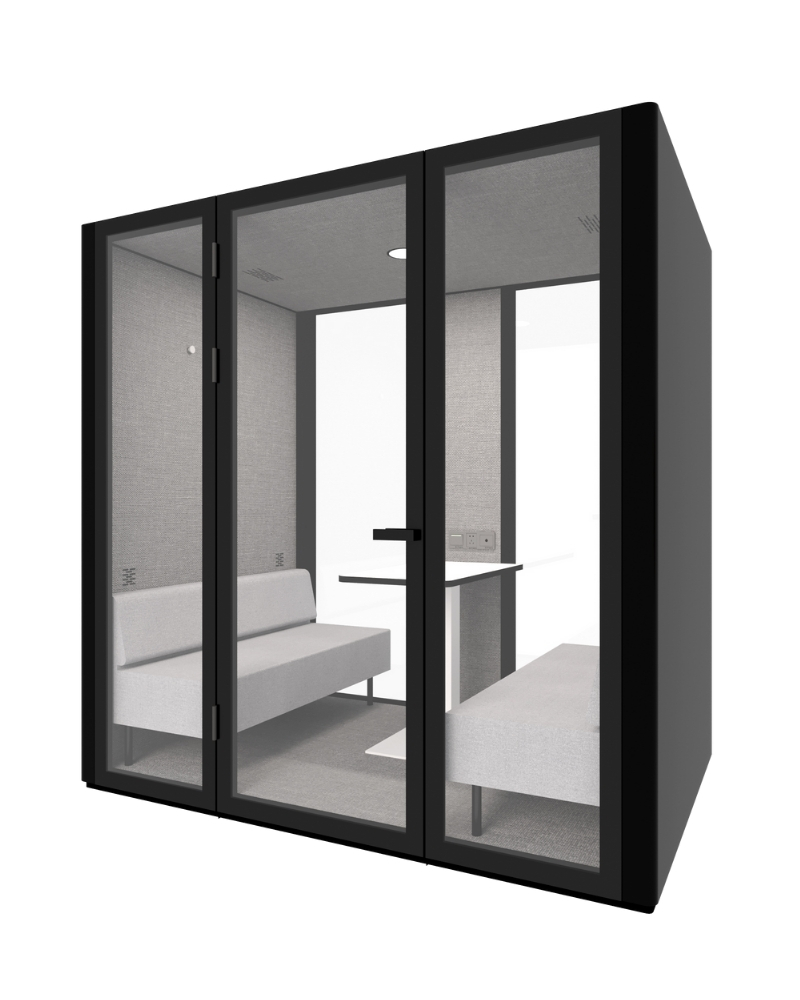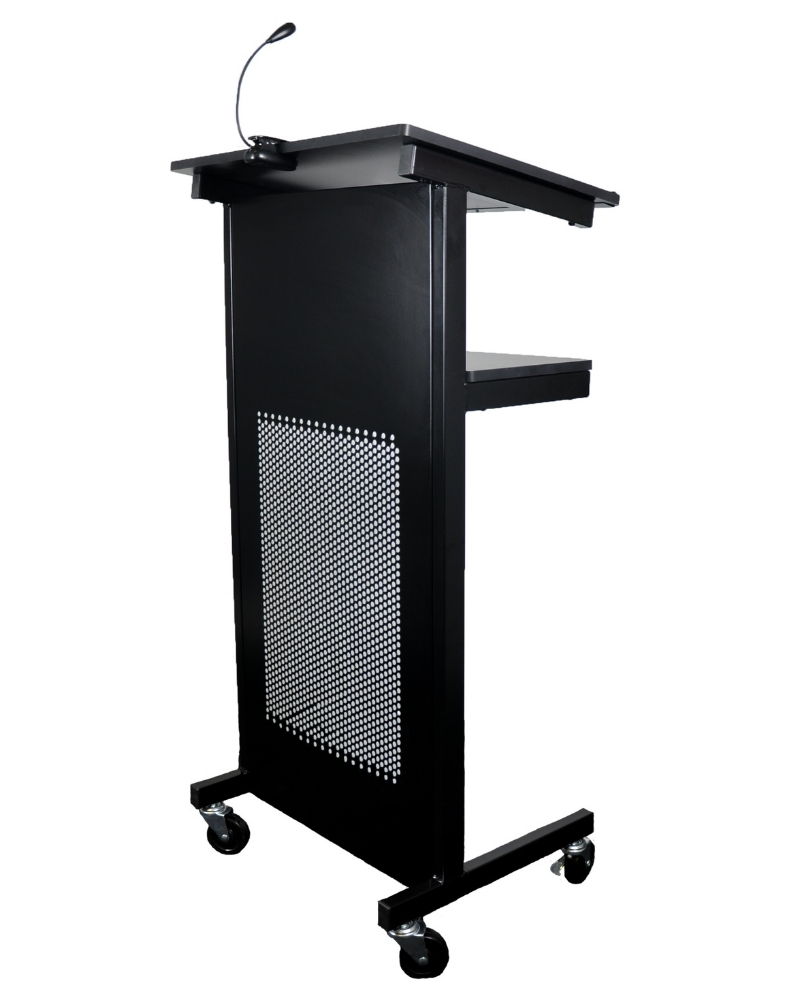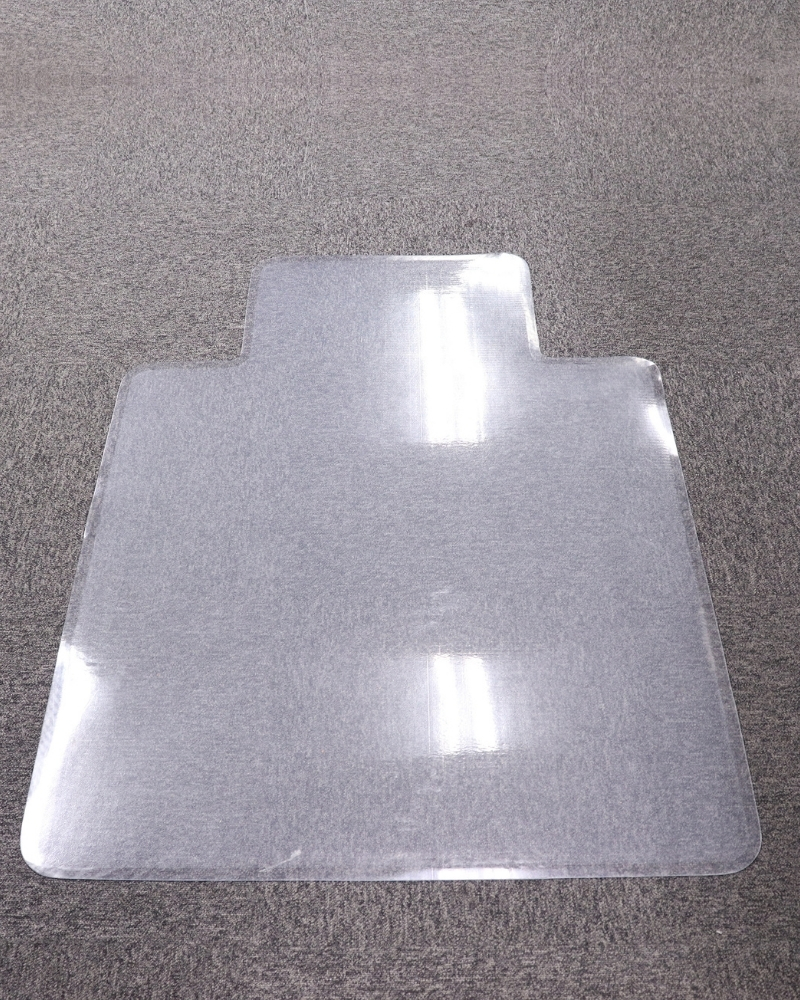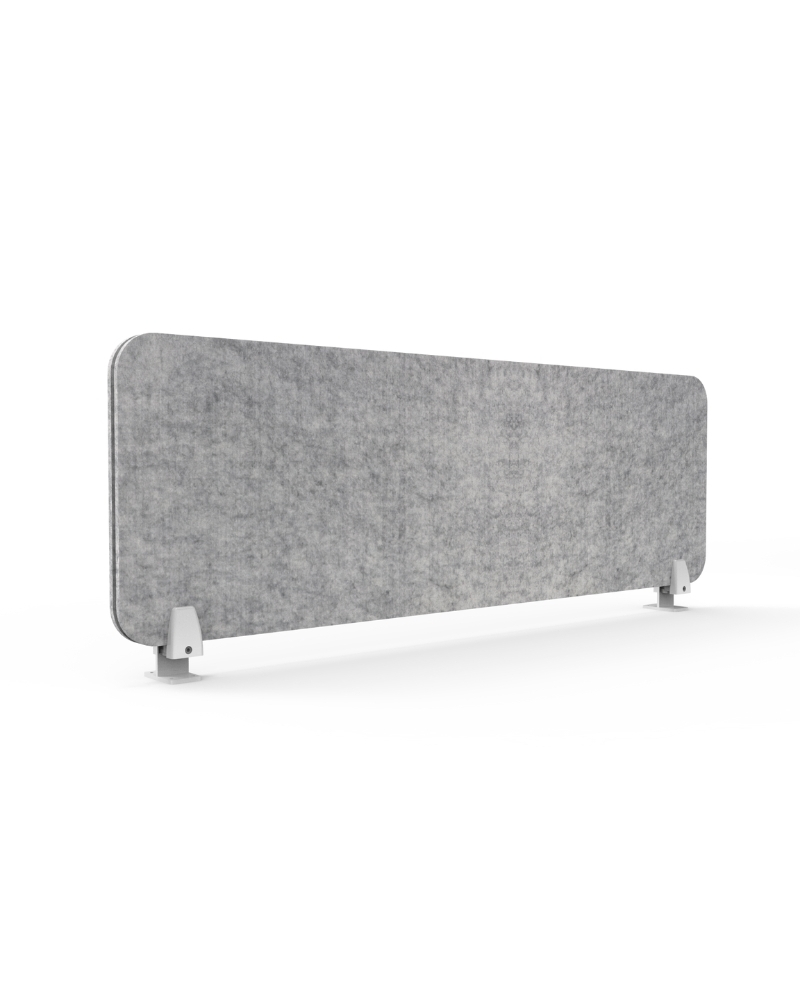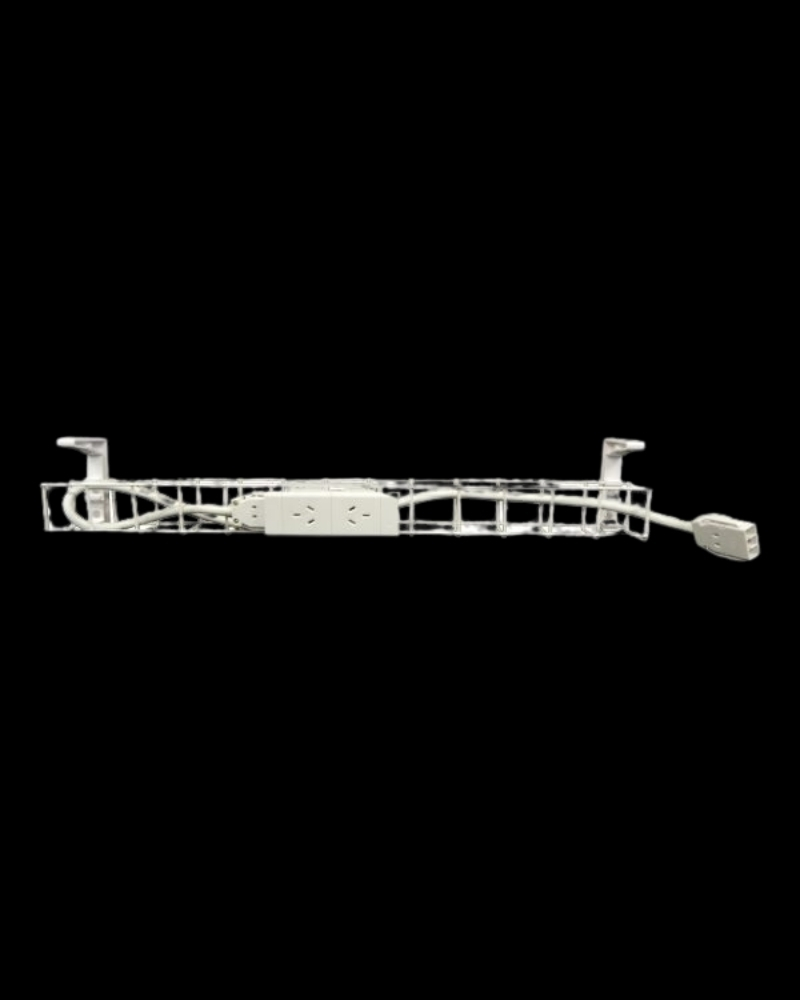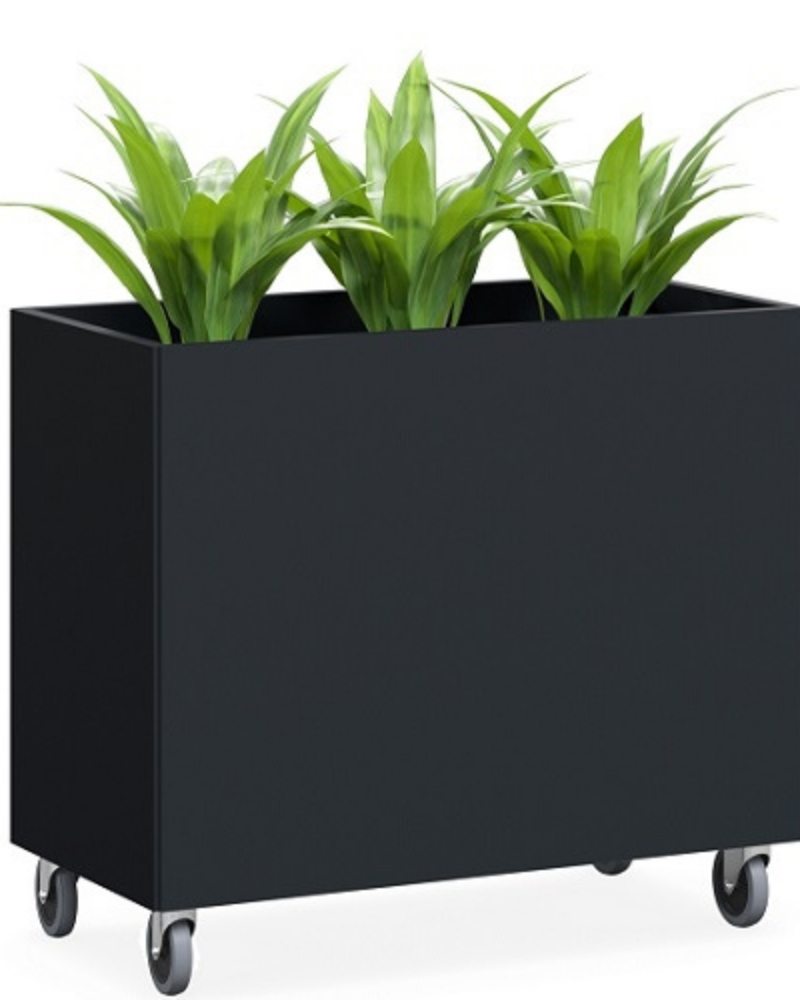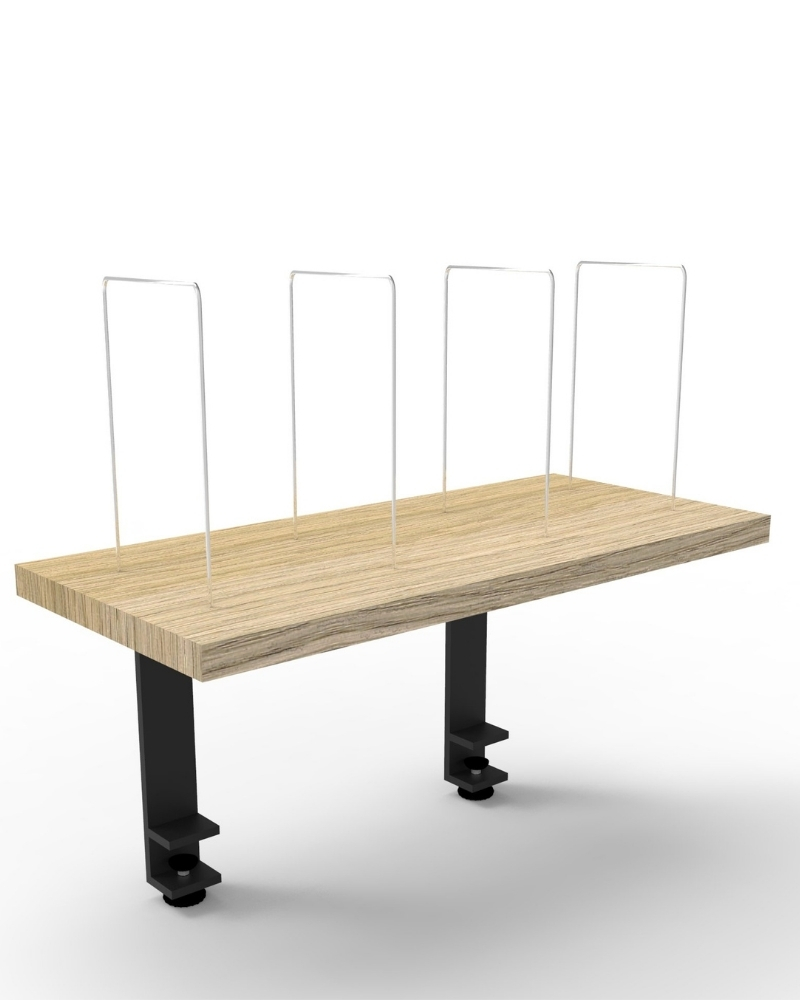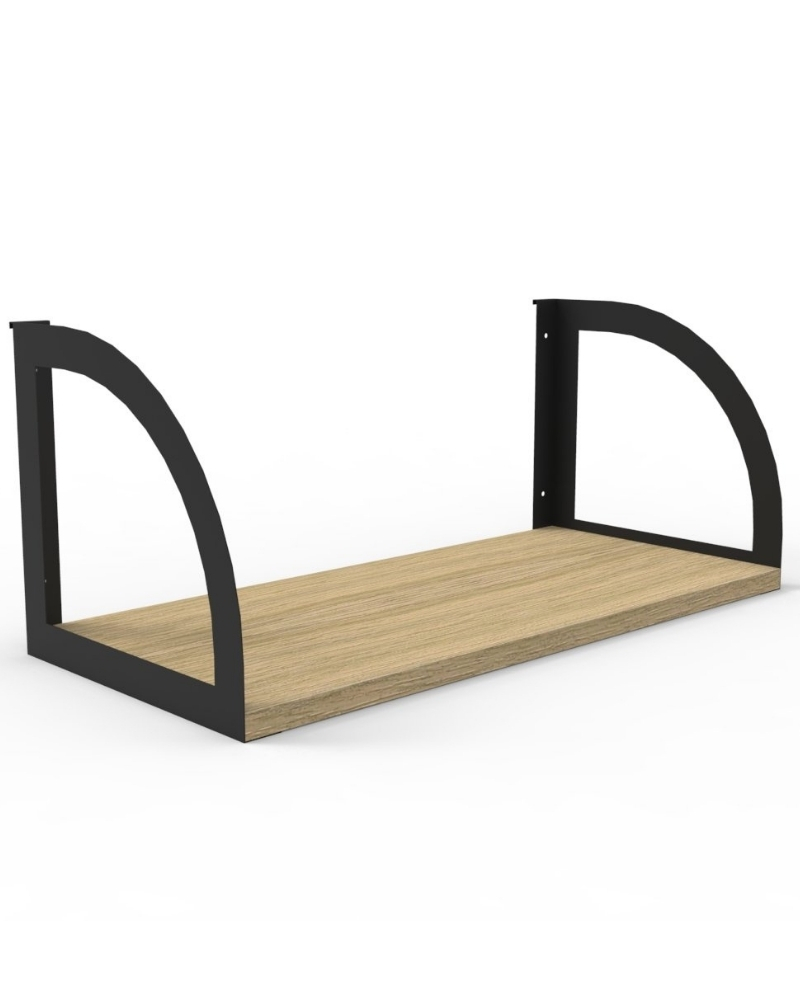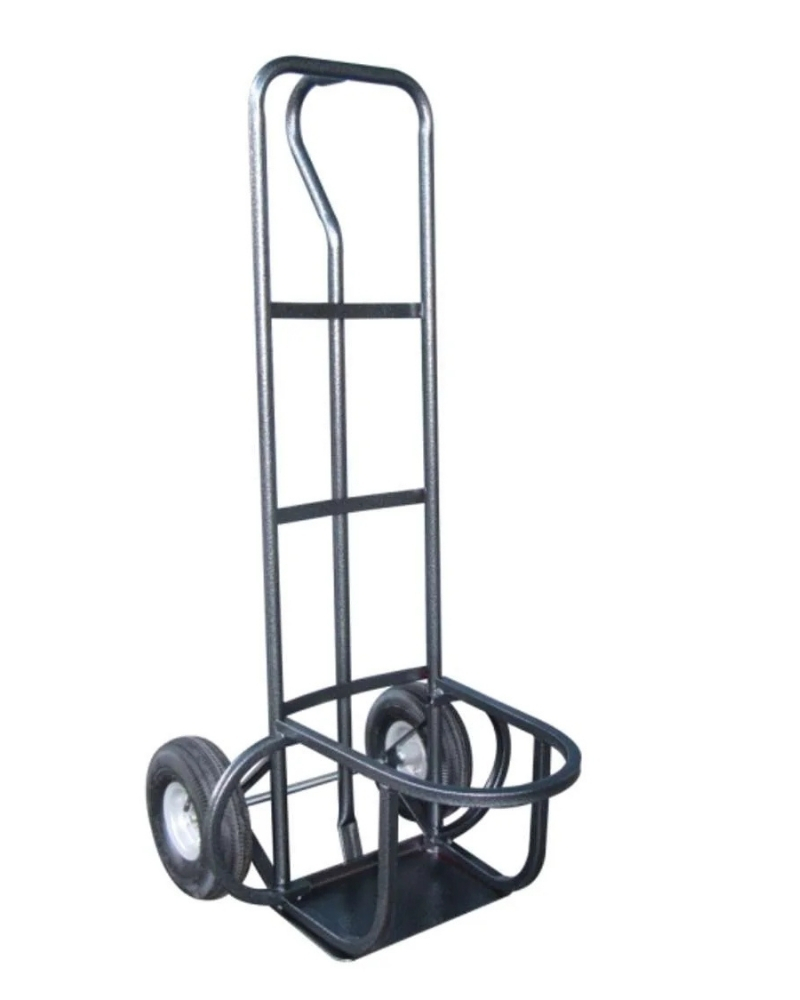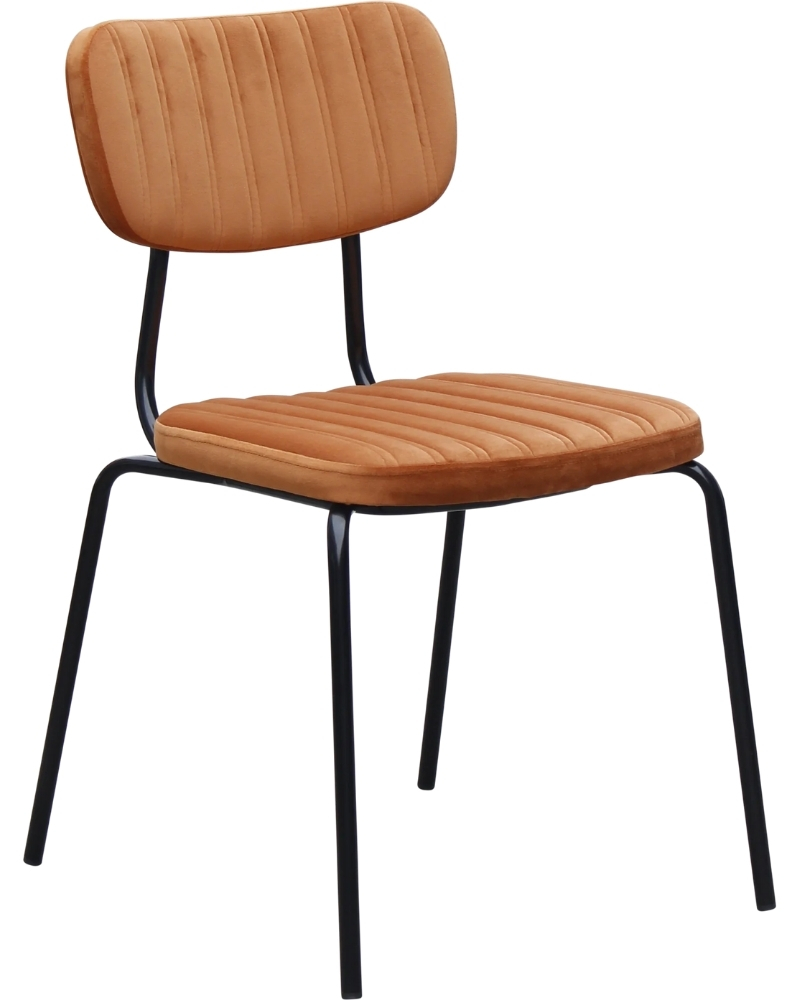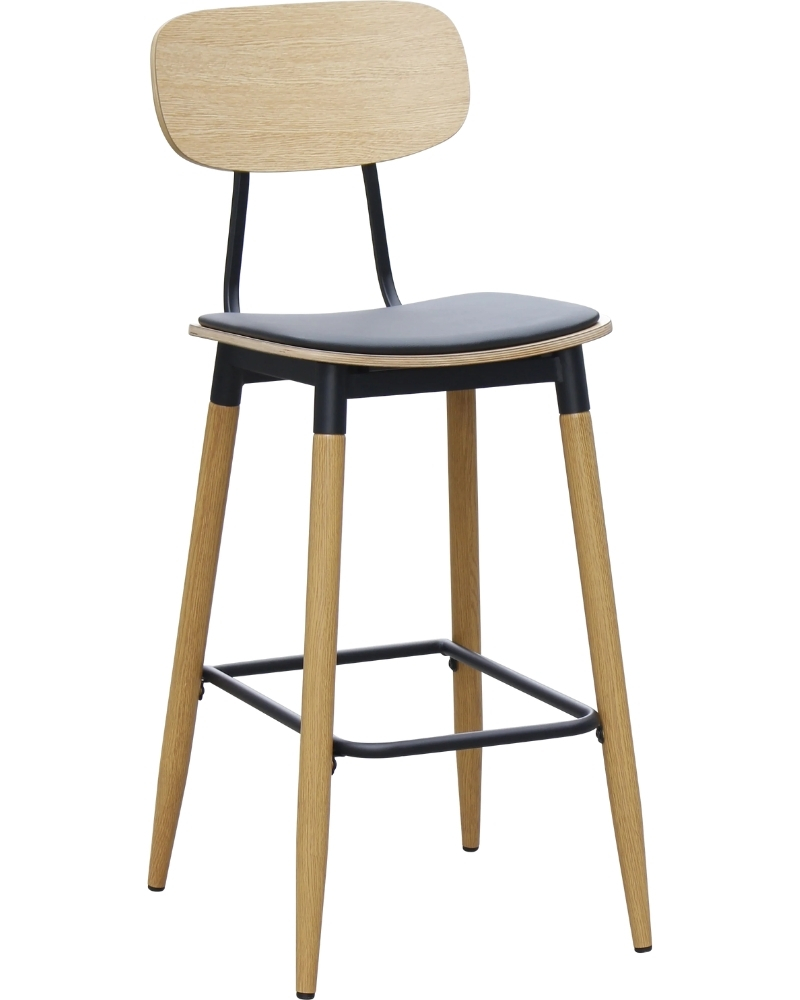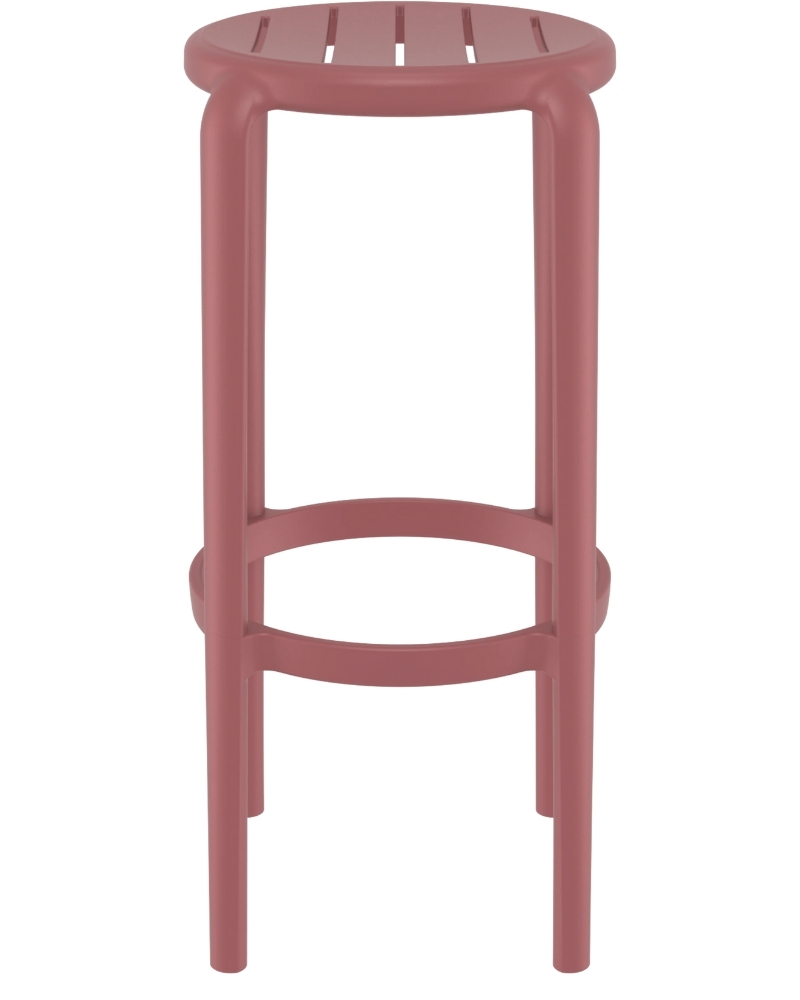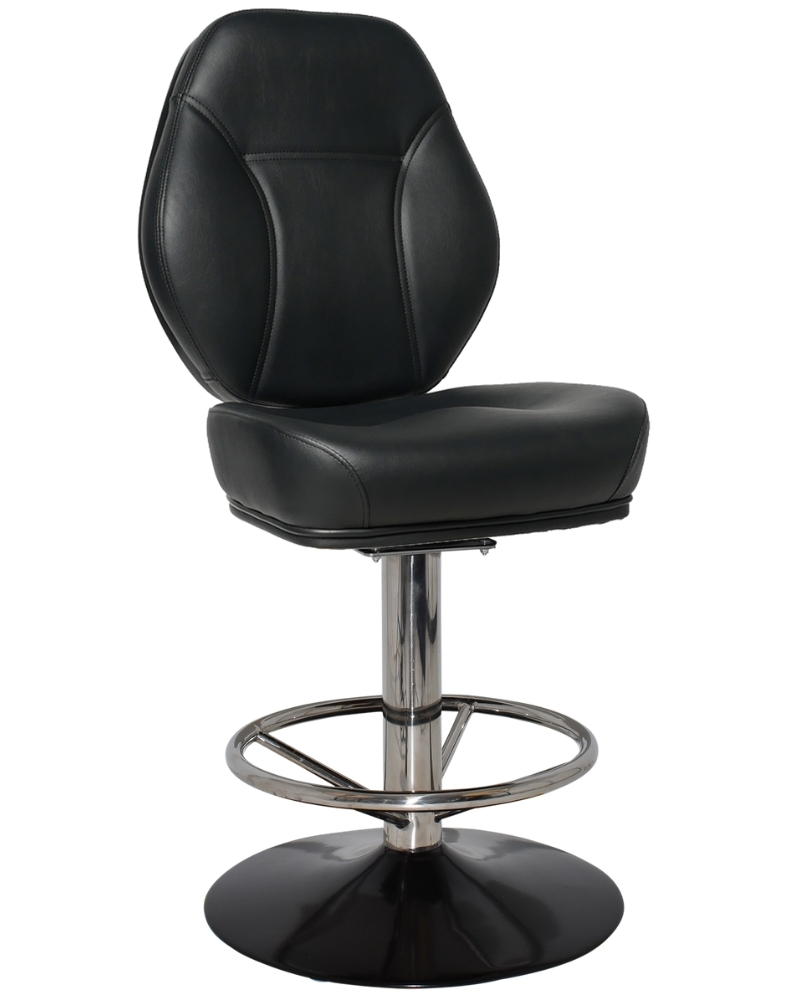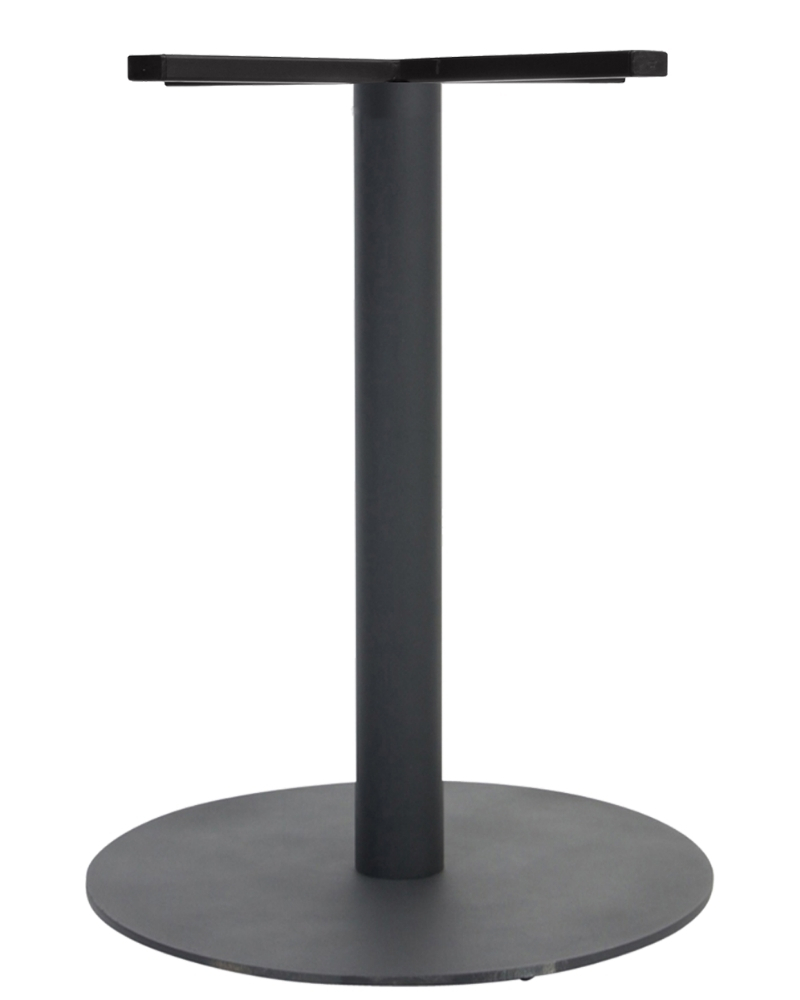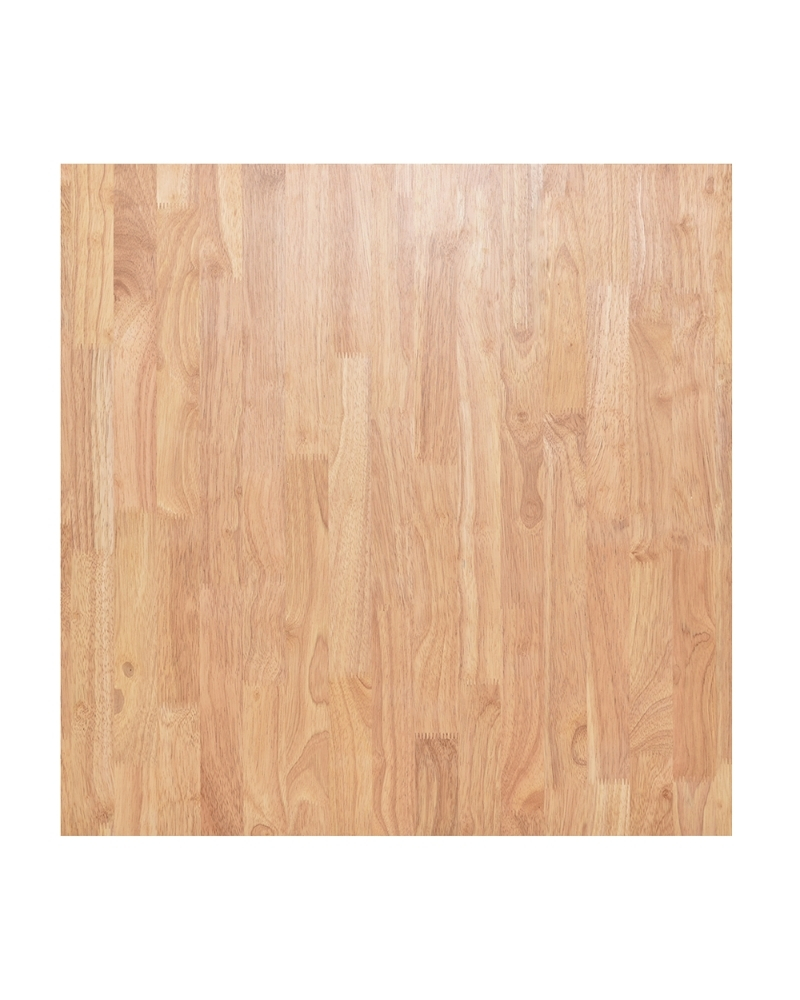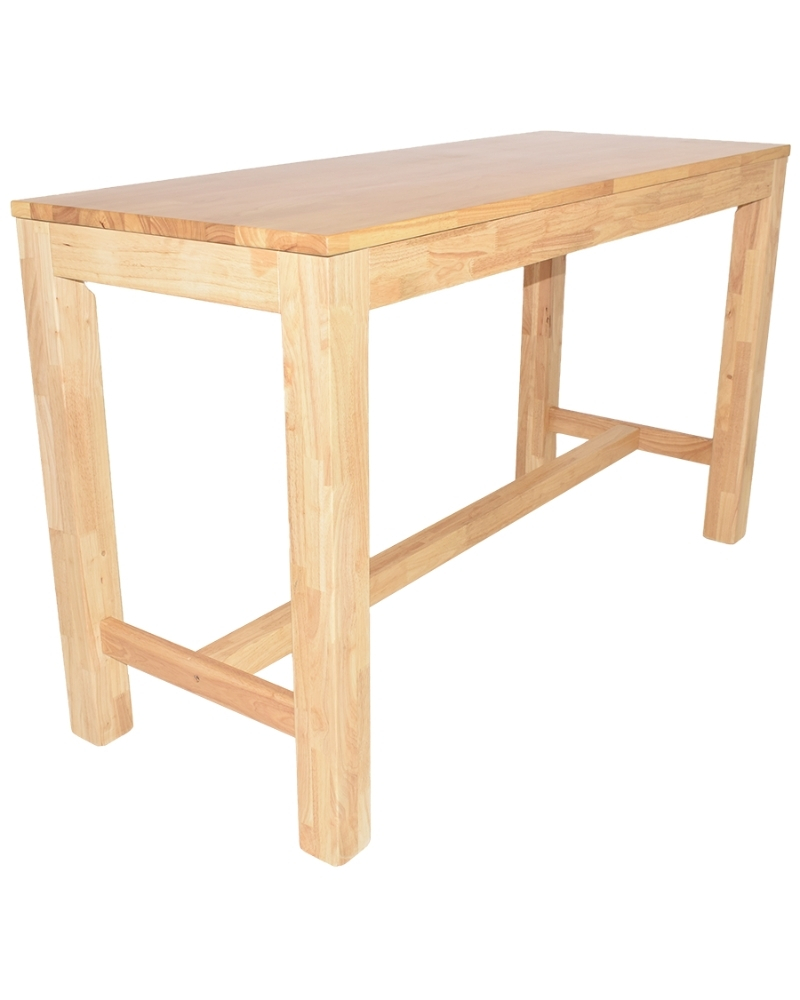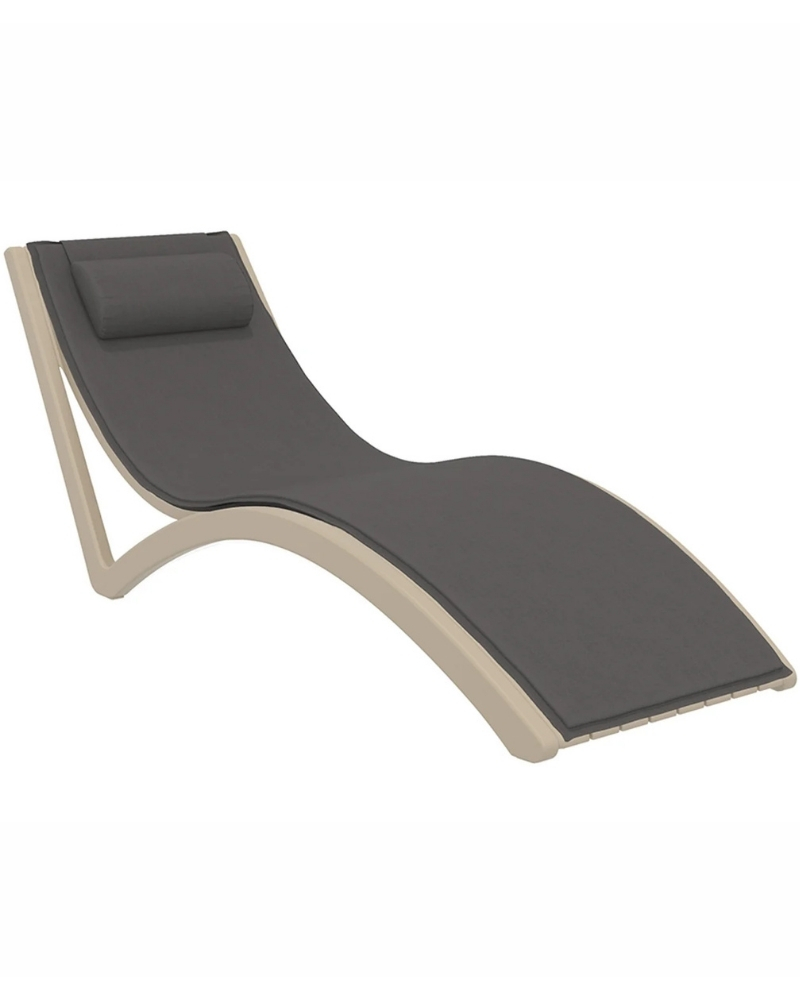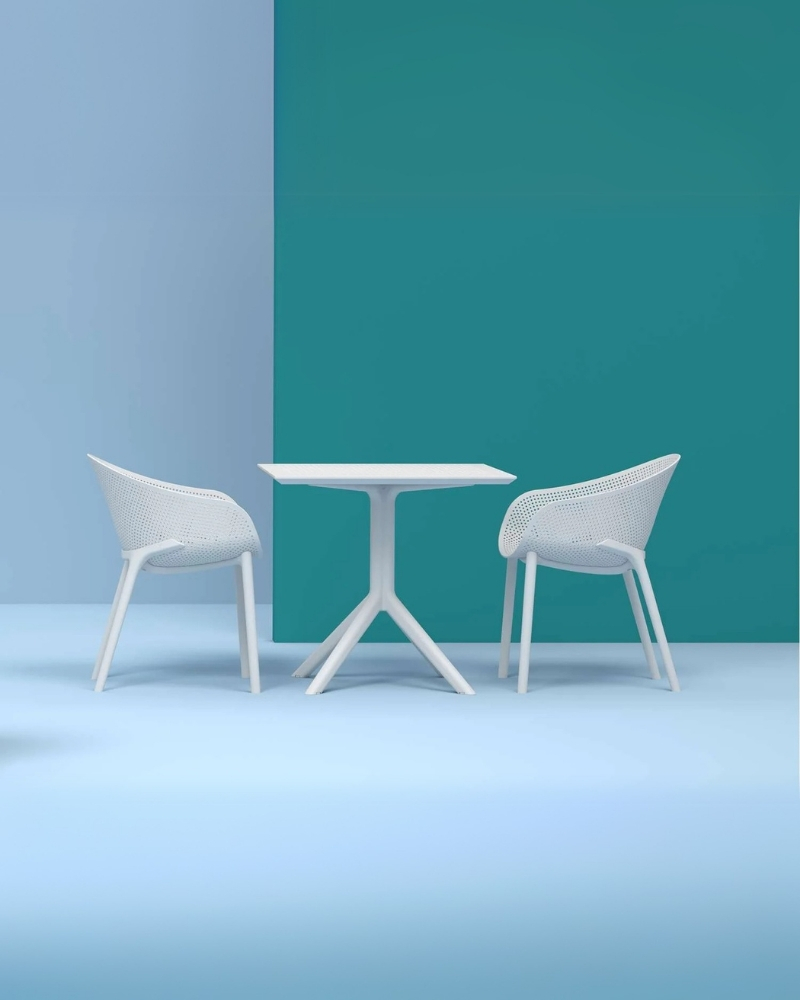Pricing Guide
5 Proven Ergonomic Furniture Benefits for Australian Workplaces
Comfort, clarity, and capability start with the chair under you and the desk in front of you.
Ergonomic furniture isn’t just a trend or a fancy add-on. It’s practical infrastructure that directly supports how people work, think, and feel on the job. Whether it’s an office in the Melbourne CBD, a busy café in Brisbane, or a staffroom in a Western Sydney school, the right furniture setup sets the tone for everything that follows — from productivity to wellbeing to turnover rates.
So what exactly makes furniture “ergonomic”?
Ergonomic furniture is designed to support the natural postures, movements, and tasks of the human body during work. It adapts to the user — not the other way around. The goal is to prevent physical strain, reduce unnecessary muscle effort, and create stable, long-term comfort through proper alignment and access. This includes adjustable chairs that support the spine, desks that accommodate different heights and postures, and workstations that allow for movement and flexibility throughout the day.
In short, ergonomic furniture makes work less physically taxing and far more sustainable over time.
Why Australian workplaces can’t afford to overlook ergonomics
Across Australia, every industry faces unique physical demands. Corporate offices juggle desk-bound employees bracing through long meetings. Hospitality venues push teams through fast-paced shifts on their feet. Schools and government departments need durable, user-friendly furniture for staff and students to stay attentive through hours of learning and administration.
What unites these environments is the undeniable link between workspace conditions and effectiveness. Staff morale, cognitive focus, injury rates, absenteeism, and operational consistency all trace back to how well the space supports the people in it. Poor-fitting chairs, improper monitor heights, and lack of physical comfort are more than annoyances — they’re productivity drains waiting to snowball.
Comfort leads to consistency. Alignment leads to energy. And better furniture leads to better work.
When employees, staff, and guests feel physically supported, mental clarity follows. Energy lasts longer. Repetitive strain injuries decrease. Fatigue delays less work. People start and end each day in a better state — sharper, steadier, and more willing to engage with their tasks (and each other).
This is why businesses and institutions in Australia are shifting focus. Ergonomics isn’t a bonus or luxury anymore. It’s a requirement to keep up with the expectations of a modern workforce and a competitive service environment.
For Australian business owners, hospitality operators, school administrators, and office managers, ergonomic furniture matters because the people behind your operation matter.
No matter how strong the roster or advanced the processes, if the physical setting causes unwanted strain, everything else unravels slowly. On the flip side, environments optimised for human health and task efficiency can dramatically improve performance consistency, reduce downtime, and help retain good people over time.
Comfort isn’t a soft benefit — it’s operational support.
And in 2025, it’s time more Australian organisations started treating it that way.
Understanding the Needs of Different Australian Work Environments
Different industries have different demands. That’s why one-size-fits-all furniture sets rarely work.
From tech startups with open-plan offices in Sydney to aged care administration teams in regional NSW, the expectations placed on furnishings vary widely. What people use, how frequently they use it, and under what physical conditions all play a role in determining which ergonomic solutions will actually hold up — and help — over time.
To deliver meaningful support, ergonomic furniture needs to match real-world use. Here’s what that means across the most common Australian sectors.
High-Quality, Durable Ergonomic Furniture for Offices and Startups
In office environments, especially among startups and fast-growing businesses, pace and pressure are often high. Staff may spend long hours seated, shifting between meetings, screen time, and collaborative tasks. The wrong chair setup here won’t just bruise your back; it chips away at clarity, morale, and stamina every day.
- Adjustable seating with lumbar support to accommodate individual body sizes and reduce long-term posture issues.
- Sit-stand desks that allow movement throughout the day, breaking up sedentary routines and improving circulation.
- Integrated cable management and functional work surfaces to eliminate clutter and streamline device access.
Durability also matters. Startups often scale fast, and replacing broken chairs or warped desks mid-growth phase distracts from core operations. Look for furniture that handles everyday wear without wobbling, scuffing, or needing constant adjustments. A solid ergonomic workstation pays off daily by keeping your people engaged and free from distraction.
Stylish and Heavy-Use Ergonomic Furniture for Hospitality Venues
In cafés, bars, and event spaces, furniture has to do two jobs at once. It needs to blend with the venue’s aesthetic, and it has to stand up to constant foot traffic, weight shifts, and repositioning by guests and staff.
- Chairs and stools with supportive seat curvature that maintain comfort during long sessions without looking clinical.
- Tables with appropriate height and stability to accommodate various sitting or standing arrangements without tipping or shifting.
- Materials that balance visual appeal with real durability, standing up to spills, frequent moving, and high turnover.
Ergonomics in hospitality isn’t just about the back of house. It influences how long guests stay, how comfortable they feel, and how your staff physically manages their long shifts. A waitress carrying plates across the floor benefits from well-mapped furniture spacing, appropriate table heights, and uncluttered walkways created through smart furniture choices.
Reliable, Budget-Friendly Ergonomic Options for Government and Educational Institutions
Public sector workplaces often manage larger numbers of people across longer timeframes, all under tight budget constraints. Schools, councils, and healthcare admin buildings need furniture that won’t crack under the daily churn of staff, students, or the public passing through.
- Ergonomic chairs and desks suitable for different age groups and staff roles, with built-in adjustability for shared use.
- Modular furniture layouts that support multipurpose spaces, from classrooms to break rooms to admin clusters.
- Economical options that meet safety and compliance standards without sacrificing core ergonomic support.
Functionality is paramount. Whether you’re equipping a Year 10 science lab or the meeting room of a state department, staff and users need to be physically supported across long periods of attention and interaction. That doesn’t mean choosing the cheapest option on the shelf. It means selecting smart, durable designs that reduce postural strain and help people stay engaged — especially when the workload is steady and the room is expected to last across financial years.
Different Environments, One Common Need: Proper Support
People work better when their bodies aren’t working against them.
That simple truth drives every effective ergonomic setup. Whether you’re buying ten desks for a new Sydney tech office, 50 stools for a refurbished bar in Perth, or outfitting a government training facility in Brisbane, the right furniture choice is always rooted in how a space is used, by whom, and for how long.
Ergonomics isn’t only about compliance or aesthetics. It’s about matching comfort and function to real-world demands — and making sure your team, guests, or students can perform their roles without added physical stress.
Don’t just buy what looks good or fits the budget. Choose what fits the people who’ll use it — and choose it well.
How Ergonomic Furniture Enhances Physical Comfort and Reduces Fatigue
When furniture supports the body, the body supports the work.
Every task—from answering emails at a desk to standing behind a reception counter—demands physical presence. The moment that presence begins to strain, the mind follows. Burning shoulders, stiff hips, a pinched lower back. These aren’t small annoyances. They’re signals that the setup is failing the user. And they build into fatigue faster than most teams can compensate for.
That’s why ergonomic furniture exists—to reduce the physical toll of work before exhaustion sets in.
Posture Support Where It Counts
Good ergonomic design starts with human alignment. People sit, stand, bend, and shift in different ways, so furniture needs to meet bodies where they are. Ergonomic chairs that offer lumbar support and adjustable seat height allow the spine to rest naturally, not slouch or twist. Armrests that match the desk surface reduce shoulder tension. Headrests and back panels ease upright posture through long meetings and even longer shifts.
Desks play their part too. A mismatched desk height forces people into hunched or stretched postures that lead to neck and wrist strain. Height-adjustable desks offer flexibility, letting users change position throughout the day. That variability helps improve circulation and keeps muscle load balanced, reducing the “static fatigue” that builds up during prolonged sitting or standing.
Supportive posture reduces the risk of long-term physical issues—and keeps daily work lighter on the body.
Reducing Repetitive Strain and Physical Fatigue
From typing and clicking to lifting and leaning, repetitive tasks stack up fast. Without the right ergonomic setup, these motions cause strain over time. Keyboard trays that position hands at a neutral angle. Monitor arms that place screens at eye level. Chair mechanisms that swivel and tilt easily to follow natural movement. These elements matter because they reduce cumulative wear.
In hospitality settings, this can look like stools that promote upright sitting without pinching the lower back. In a school admin office, it might be a clerical workstation that keeps everything within arm’s reach, so no one is twisting constantly to grab folders. Small adjustments like these reduce muscle tension and joint fatigue, helping staff maintain energy longer—without pushing through pain.
Fatigue happens more from friction than from effort. You can’t do much about busy seasons or full workloads—but you can choose furniture that doesn’t make them harder than they need to be.
Energy Holds Longer in a Comfort-First Setup
Physical discomfort doesn’t just affect the body—it drags down energy and focus. That drop shows up in longer breaks, slower responses, more mistakes, and lower morale. When your environment demands constant stress compensation, the brain never quite gets to rest.
But when people are well-supported, they don’t waste mental energy shifting around to get comfortable. They don’t come home with shoulders locked up or legs sore from standing on unyielding floors. Instead, they can focus on the task, the customer, or the problem-solving that drives progress.
The payoff isn’t just physical ease—it’s the mental clarity that only shows up when the body isn’t battling discomfort.
Daily Comfort Builds Long-Term Sustainability
Comfort isn’t a sign of laziness or luxury—it’s the baseline for longevity. When staff members routinely finish the day drained, the ripple effects go beyond the next morning’s mood. You see it in sick leave, disengagement, and even turnover. Bodies that hurt don’t stick around. And turnover costs far more than a supportive chair ever will.
For business owners, hospitality operators, and institution leaders, this is where ergonomic furniture shifts from “nice to have” to “hard asset.” The initial investment returns value daily, not just through immediate performance but through long-term retention and reliability.
The Right Features for Physical Support
To reduce fatigue and enhance comfort, look for these core ergonomic features in workstations and seating:
- Adjustable seat height and backrests to support diverse body types and seating postures.
- Lumbar support to maintain the natural S-curve of the spine, especially during long periods of sitting.
- Contoured seat pans and waterfall edges to reduce pressure on legs and improve circulation.
- Sit-stand desks or height-adjustable work surfaces to allow positioning changes throughout the day.
- Workstations designed for tool and task access to reduce repetitive twisting, reaching, and bending.
Whether you’re outfitting an open-plan office, redesigning a hospitality service area, or upgrading academic admin spaces, these features form the foundation of a workspace that supports people. Not just today, but five days a week, across the calendar, year after year.
If your team is tired before lunch, start with the chairs, not their to-do list.
Improving Concentration and Mental Wellbeing Through Ergonomics
Physical discomfort doesn’t just stay in the body — it climbs into the mind.
When an office chair cuts off circulation, or a desk forces a forward hunch, it gets harder to focus. It doesn’t matter whether you’re refining a client proposal, revising a lesson plan, or prepping cocktails behind the bar. If you’re distracted by pain or discomfort, full concentration is nearly impossible. Nagging aches break attention into small, scattered chunks. Mild physical strain turns into mental friction. And productivity takes the hit — steadily and silently.
That’s where ergonomic furniture steps in. It clears away the distractions caused by poor fit, bad posture, and strained positioning. When the body rests in alignment and effort is reduced, attention becomes available again. Suddenly, you’re not fighting through the task. You’re solving it, guiding it, completing it — with clarity instead of clench.
The Direct Link Between Comfort and Focus
Comfort isn’t optional for focus. It’s the starting line.
Whether you’re managing a bustling hotel kitchen or overseeing a school’s digital learning hub, the mental load of work can be hefty. Small physical interruptions — shifting in your chair, adjusting your screen every ten minutes — chip away at deep thinking. Over time, they train the brain to expect disruption.
Ergonomic furniture reduces those micro-distractions. Adjustable chairs keep hips and back in alignment, so there’s no need to fidget. Monitors at the correct height reduce neck strain, which in turn clears up tension that leads to mental fatigue. Even consistent lighting at desk workstations — enabled through thoughtful furniture placement — supports eye comfort, which keeps students, staff, and service teams engaged for longer stretches.
The fewer the interruptions, the stronger the flow. And that flow is where meaningful work happens.
Lower Physical Stress Means Lower Mental Stress
Ask most office workers what stress feels like, and posture comes up quickly. Tight jaw. Round shoulders. Neck pain that mimics tension headaches. Physical stress builds quietly — then compounds into mood dips, snappier responses, and zoned-out meetings. It happens in hospitality shifts too: tight corners behind counters, uneven table spacing, rigid stools. Stress reactions aren’t just emotional; they start with the body’s inability to relax into its environment.
A well-designed ergonomic setup gives the body somewhere to land safely. Feet rest flat. Arms align naturally. Backs stay upright without force. That foundation of stability reduces the constant low-level tension that sucks up mental energy.
Less strain equals less overwhelm. And that opens the door to clearer thinking and better mood regulation.
Creating an Environment That Supports Sustained Attention
Focus doesn’t survive in discomfort. But it thrives in stable, well-structured environments.
Educational environments especially benefit from this. Teachers, admin staff, and students rely on long periods of attention to teach, manage, and absorb information. Workspace interruptions — clunky chairs, desks too tall for typing, chaotic room layouts — make that attention harder to hold. By contrast, ergonomic furniture allows for seating positions that promote alertness without demanding extra effort.
Same goes for open-plan offices, where environmental stimulus is already high. Reducing distractions through design — such as partitioned desks or acoustic-friendly materials — supports mental quiet that fuels concentration. Even cafes or fast-paced venues can benefit by offering consistent height seating and back support that encourages guests to stay, not fidget or move on early.
Designing for sustained focus isn’t just about removing pain. It’s about building peace into how people interact with the objects around them.
A Clearer Mind Builds Better Interactions
The best workplaces and venues aren’t just efficient — they’re collaborative. Teams work better together when they’re mentally present, emotionally steady, and not physically distracted. An ergonomic layout supports this by reducing the irritants that often go unspoken but shape how people engage: a squeaky chair, a narrow bench, an awkward desk cluster that forces people to twist awkwardly to talk.
Improved posture and reduced strain contribute directly to mood and presence. Those qualities show up in customer service tone. In how fast a response email gets written. In how well people listen in meetings. These might sound like soft metrics, but they directly influence daily output, team cohesion, and even retention.
When people feel better, they interact better. And every business or institution built around people needs that to function at its highest level.
Signs It’s Time to Rethink the Setup
Wondering if your workspace is quietly draining focus? Look for these red flags:
- Staff shifting or fidgeting more than necessary during sit-down work
- Increased reports of headaches, eye strain, or tiredness by midday
- Shorter-than-usual attention spans or difficulty staying on one task
- Reliance on long or frequent breaks to offset discomfort
- Grumbling about chairs or furniture that “just isn’t right”
If any of these are familiar, it’s not about discipline or motivation. It’s about friction. And friction has solutions — through seating that supports, desks that align, and layouts that respect both the body and the task.
Concentration requires calm. Ergonomics helps build it — in every seat, at every table, all across your floorplan.
Boosting Efficiency and Workflow with Functional Ergonomic Design
The right furniture does more than support your body — it supports how the work gets done.
Efficiency isn’t accidental. It comes from systems, tools, and physical spaces designed to carry people through tasks with as little friction as possible. This is where ergonomic furniture moves from a comfort feature to a functional performance tool. Whether you’re running a team in a regional council office, managing a restaurant floor in Adelaide, or coordinating admin flow in a primary school, the design of your work environment impacts speed, sequencing, and task completion.
Ergonomic design fuels workflow by making movement smoother, access easier, and interruptions fewer.
Adjustability: One Size Rarely Fits All
People aren’t built the same — and their workstations shouldn’t be either. Adjustable ergonomic furniture adapts to different users and different tasks without needing a full redesign every time someone new logs in or sits down.
When chairs, desks, and monitor arms shift to meet the user (instead of forcing the user to make do), workplace tasks get faster and more fluid. Arms line up with keyboards. Eyes meet screens without craning. Temporary discomfort doesn’t slow someone down three hours in.
- Height-adjustable desks let users alternate between sitting and standing during longer sessions.
- Swivel chairs with seat depth and backrest controls allow fast adaptation for shared-use spaces like hot-desking banks or rotating reception desks.
- Desks with adjustable monitor mounts or cable ports help improve sightlines and reduce manual repositioning when gear changes.
In government or educational settings where multiple users rely on shared workstations, these adjustable features also reduce the need for IT or facilities intervention. Fewer staff complaints, fewer disruptions, and more seamless transitions between users.
Mobility: Moving Furniture, Not Moving Mountains
In fast-paced venues like cafés and event spaces, rigid furniture makes for a rigid floorplan. You might have a packed lunch service one hour and a private function the next — and layouts need to keep up without eating into service time or dragging down staff energy.
Furniture with built-in mobility keeps things dynamic. Lightweight but balanced chairs, tables with lockable caster wheels, and modular lounge pieces let floor managers reconfigure the space fast and with minimal fuss. In educational and training spaces, this same principle applies when classrooms shift from seminar mode to workshop mode within a day.
Moveable, ergonomic furniture supports workflow by making space react to demand — rather than forcing the work to fit the room.
- Caster-equipped desks and tables to simplify reorientation or teamwork setups
- Foldable chairs and nesting solutions for venues or schools needing temporary seats without permanent clutter
- Stackable stools or light resin designs that offer comfort without logistical drag
No one wants to lift a bulky chair just to make space for a pram or reset a classroom group. Mobility helps keep staff focused on service and delivery — not stuck making the room workable.
Accessibility: Reaching What You Need Without Breaking Focus
Every time a person leaves their task environment to grab a tool, shift posture, or walk further than necessary, they break flow.
That break is costly — not just in time, but in attention. Ergonomic layouts put what’s needed within ergonomic reach. This might mean adjustable shelving that fits both seated and standing staff, or desks with built-in drawers that open without harsh bending. In hospitality, access means enough space between booths for servers to pass quickly and without awkward sidestepping.
In offices and schools, poorly placed printers, stacked paperwork, or crowded desk clusters all create micro-disruptions that chip away at task flow. By rethinking position, layout, and spatial relationships, ergonomic planning reduces travel, delay, and cognitive reset times.
- Workstations with cable routing and power integration so devices stay on desk — not snaking off it
- Chairs and desks combo mapped for arm’s-length access to desktop tools, avoiding overreaching
- Proper chair clearance and pathway widths for trolleys, prams, and mobility support — especially in public sector buildings and F&B venues
Accessibility isn’t only about compliance. It’s about keeping hands on task, eyes on the work, and brains inside the problem — not outside it chasing extra pieces that should’ve been easier to reach.
Integrated Layouts: Workflow Starts with the Floorplan
Furniture choice matters — but so does placement. Tucking ergonomic furniture into a clunky floorplan won’t deliver the performance it’s capable of. To boost workflow, the layout must support logical sequencing of action: where someone arrives, where they sit, where they pick up their equipment, how they shift between talk zones and focus zones.
This layout planning prevents congestion, reduces backtracking, and increases access without clutter. In educational settings, for example, an ergonomic lab bench with stool seating does little good if placed against a wall that forces turnarounds between each component. In a commercial office, standing pods lose value if they’re directly facing distracting walkways.
Well-considered ergonomic layouts reduce internal friction — both in the body, and in the run of the day.
One Choice, Countless Gains
Efficiency means getting more done with less resistance.
That might mean a receptionist hitting their customer service targets because their lower back isn’t screaming. Or a teacher facilitating group projects without stopping to rearrange half the room. It could be a chef flowing through their prep station without pausing to dodge a poorly placed barstool. All that movement adds up — for better or worse, depending on the design of your workspace.
Want smoother workflow? Start with the furniture. Then let the results follow.
Durability and Quality: Long-Term Benefits of Investing in Ergonomic Furniture
Short-term buys won’t hold up to long-term demands.
The real value of ergonomic furniture isn’t just in the posture support or flexibility. It’s in how well the furniture lasts under pressure — day after day, shift after shift, year after year. Whether you’re managing a fast-paced restaurant in Perth, a local government building in regional Victoria, or a growing business space in inner Sydney, durability isn’t a preference. It’s a requirement. Without it, any ergonomic gain gets buried under the cost of breakdowns, replacements, and disrupted operations.
Why Build Quality Isn’t Optional
Body support means nothing if the chair breaks under daily use.
Ergonomic furniture without durability is just a temporary fix. Wobbly joints, peeling upholstery, stuck mechanisms — once these issues creep in, they compromise everything the design is meant to support. Suddenly, users can’t adjust their chair properly. A sit-stand desk grinds to a halt. A table leg loses balance, forcing makeshift repairs. When this happens, the workspace turns chaotic fast.
Durable ergonomic furniture is designed for high-frequency tasks and high-volume contact. Materials like metal frames, high-resilience foams, reinforced stitching, and wear-tested surface finishes mean users can rely on support that’s consistent and safe — not support that slowly degrades until it’s invisible.
Longevity isn’t a nice-to-have. It’s what gives ergonomic features space and time to deliver their benefit.
Fewer Replacements, Fewer Disruptions
Replace a chair five times in three years — or buy one reliable unit that lasts through staff churn, shift overlaps, and layout changes.
When furniture fails early, the first cost is financial. Buying new items, scheduling delivery, reconfiguring layouts — even on a small scale — steals resources that should be used on core operations. But the real loss shows up in time, distraction, and staff inconsistency. A creaking chair doesn’t just annoy the user. It signals a setup that’s being patched together instead of maintained for high output.
By contrast, investing in high-quality ergonomic furniture leads to fewer maintenance tickets, fewer workarounds, and less frustration across the board. When a chair supports properly every day without breaking down, the team doesn’t think about it. That’s the goal — furniture that works so consistently well it fades into the background and lets the people do their job.
Materials That Match the Sector
Durability isn’t universal. It’s contextual. What’s tough enough for a corporate office might fail in a school or bar.
The best investment considers your environment’s specific wear points. In hospitality, that means moisture-resistant seat finishes, stain-resistant fabrics, and frames that won’t warp under shifting loads. In educational settings, it means anti-scuff materials, secure joinery for frequent movement, and chairs that won’t tip under restless weight shifts. Office environments demand materials that can withstand long use without fraying, dulling, or collapsing under steady pressure.
By choosing ergonomic furniture made from purpose-fit materials — not simply the most aesthetically pleasing offer — Australian workplace leaders sidestep premature breakdowns and delays. More importantly, they signal to employees and users that the space is set up for the long term, not thrown together for short-term optics.
Lower Total Cost Over Time
The cheapest option often ends up the costliest after three months of squeaks and complaints.
Low-cost ergonomic furniture can look fine early on. It might even function well for the first weeks. But poor-quality internal parts, low-grade upholstery, or misaligned mechanisms reveal themselves quickly under real use. Suddenly, you’re dealing with equipment that can’t maintain alignment, chairs that sink unexpectedly, or desks with jammed height-adjustment cranks.
Every repair ticket, user complaint, and unplanned replacement adds up. Not just in hard dollars, but in lost momentum and growing staff dissatisfaction. By choosing ergonomic furniture designed for endurance, Australian institutions avoid that hidden drag on morale, performance, and maintenance staffing.
Longevity costs less in the long run — and keeps productivity where it belongs: uninterrupted.
Trust in Tools Means Trust in the Workspace
People notice when furniture starts to fail. More importantly, they notice when their tools stay strong.
Reliable support isn’t just mechanical. It’s psychological. A stable, well-functioning chair tells the user they matter. A desk that adjusts smoothly says the same. When the basics work, teams focus better. Guests stay longer. Staff don’t worry that the stool will lean or the drawer will stick mid-shift. This sense of trust supports confidence and consistency — even if no one says it out loud.
And when departments or venue managers don’t need to constantly problem-solve around broken gear, they can spend that mental bandwidth on actual progress. That’s the quiet compound gain of durable ergonomic furniture: it frees people to focus on the work itself instead of the surroundings that should support it without question.
If your workspace is held together by duct tape or luck, it’s time to rethink the investment.
Checklist for Long-Term Ergonomic Value
When evaluating new ergonomic furniture options, use these criteria to find durable, high-impact solutions built for Australian workplaces:
- Tested load capacities that match the real-world user set, not just default specs
- Mechanisms rated for daily adjustment, including tilt, height, and recline switches that resist wearing out
- Frames made of steel, reinforced hardwood, or equivalent strength-rated material
- Upholstery that resists tearing, staining, and fading under lights, spills, or daily contact
- Warranty terms and service agreements that demonstrate the manufacturer’s confidence in long-term performance
Choose once, choose well — and let every day’s work benefit from that decision.
In productivity, reliability is strength. And strength starts with the structure under your team.
Creating a Positive Workplace or Venue Culture with Ergonomic Investments
Morale doesn’t improve with words alone. It improves with choices your team can feel in their body.
Ergonomic furniture sends a message before anyone even sits down. It says, “We designed this space with you in mind.” For businesses, hospitality venues, and educational institutions across Australia, that message matters. It shapes how employees and staff show up, how they engage with their environment, and how they feel about the organisation that invested in their wellbeing.
When leadership prioritises physical support through thoughtful furniture choices, culture improves from the ground up — not just as a set of values on a poster, but as a practical, daily experience.
Support Signals Respect
Standing on a warped mat. Sitting on a stool that wobbles. Working from a chair that pinches the hips by 11 a.m. These small discomforts add up — and not just physically. They carry deeper messages about your organisation’s commitment to the people inside it. If furniture is outdated, unsupportive, or unfit for purpose, the unspoken takeaway is clear: comfort isn’t a priority here. And that erodes morale, one sore shift at a time.
The reverse is also true. A chair with proper lumbar support. A workstation that adjusts quickly to different users. Breakout spaces where staff can reset without adding strain. These send a direct signal: we value your time, your output, and your physical wellbeing. That level of care builds long-term goodwill — and places culture on much more stable ground.
Comfort Translates to Satisfaction
Happy teams don’t just have pizza lunches. They have spaces that don’t work against them. Physical discomfort undermines even the best workplace perks. An espresso machine in the breakroom doesn’t mean much if sitting through a standard shift means enduring back pain or poor posture.
Ergonomic investments improve satisfaction by directly improving the experience of work itself. From the height of countertops in a bar area, to foot support under standing desks in admin offices, small design tweaks lead to big gains in day-to-day comfort. And when people aren’t gritting their teeth through the shift, they engage more, contribute more, and stay longer.
Better comfort = better moods = better performance. It’s a loop worth reinforcing.
Shared Trust Across Roles
Nothing builds resentment like unequal treatment — and nothing levels the field like shared ergonomic support.
Equipping only top-level staff or front-facing roles with high-quality furniture creates divides. When finance has adjustable chairs but logistics gets the budget bin seating, even the best intentions fall flat. Strong culture requires consistency — and ergonomic readiness should extend to every staff area, from guest-facing zones to back office setups. That includes:
- Shared-use furniture with wide adjustability ranges
- Staff lounges and rest zones with comfortable, supportive seating
- Meeting spaces with ergonomic chairs for all participants, not just executives
These upgrades don’t just improve comfort. They improve unity. Everyone gets equal access to the physical tools that make performance — and recovery — possible.
Culture Starts Where People Sit
Whether it’s a casual team run-through in a creative start-up or a parent-teacher conference in a school staffroom, where people sit changes how they think, feel, and connect. Spacious, thoughtful layouts say “we want you to collaborate.” Isolating, uncomfortable arrangements do the opposite. Ergonomic furniture allows for intentional placement. That leads to setups that support not just tasks, but communication, morale, and shared ownership of the space.
This applies just as much in hospitality. A back-of-house bench that doesn’t destroy legs after long service hours means less turnover and reduced burnout. Venue staff supported physically tend to reflect that stability in their tone and approach — even during peak hours. Guests notice the undercurrent, even if they don’t name it. That’s culture, made tangible.
Retention Rooted in Respect
People stay where they feel seen — and physical support is one of the most direct forms of recognition you can offer.
You can craft the best onboarding, host monthly all-hands meetings, and offer development programs — but none of that lands fully if employees leave work sore, exhausted, or dismissed. Comfort removes stressors. Comfort validates daily effort. Comfort reinforces stability. And stability helps prevent the kind of churn that destabilises teams and drains long-term capability.
For managers and business owners in Australia who are tired of repeated staff turnover or worn-down morale, start by walking through the space: sit in the break area. Look at the seating provided in each zone. Ask if what’s there supports the people who use it — or if it’s just filling a budget slot. The answer to that question points you to the health of your culture more accurately than many staff surveys ever will.
Checklist: Culture-Supporting Ergonomic Investments
- Consistent ergonomic furniture quality across departments and zones to avoid creating visual or physical hierarchies
- Breakrooms and lounges with actual comfort seating, not just token chairs
- Accessible, comfortable meeting spaces that don’t prioritise formality over support
- Staff input on furniture choices to ensure what’s chosen solves actual daily pain points
- Well-designed layouts that let teams connect organically without physical frustration
Physical fatigue doesn’t build pride. Support does. Ergonomic decisions won’t solve every culture issue. But without them, every other initiative starts on unstable footing.
Want loyalty? Want better engagement? Then choose comfort that proves you mean it.
Selecting the Right Ergonomic Furniture for Your Australian Business or Institution
The right furniture starts with the right questions.
Not every ergonomic chair or desk fits every purpose. What works well in a quiet open-plan office may fall apart in a high-traffic bar. A sit-stand workstation that improves one school administrator’s posture might be wasted in a shared-use breakroom with no height flexibility requirements. Choosing ergonomic furniture means making practical decisions about comfort, durability, budget, design, and the actual demands of day-to-day use. And for offices, hospitality venues, and educational facilities across Australia, those demands vary widely.
Start with Use: Who’s Sitting Where, and Why
Before looking at styles, prices, or specs, look at your environment. Who uses the furniture? How long are they sitting or standing? What types of tasks are involved? This allows you to match products to purpose instead of guessing based on general recommendations.
- In offices: Focus on adjustable seating with lumbar support, sit-stand capacity, and streamlined work surfaces suitable for computer-based workflows.
- In hospitality venues: Prioritise sturdy seating for high rotation, ergonomic stools for bar seating, and guest chairs that blend comfort with design.
- In educational or government settings: Choose versatile, budget-conscious furniture suited for shared use, daily reconfiguration, and long sessions of sitting or facilitated activity.
Ask: What activities happen here? How often do users switch places? How long does each session last? These questions guide you toward what’s genuinely ergonomic for your setup — not just what’s labelled that way in a catalogue.
Match Features to Comfort and Flexibility
Good ergonomic furniture supports the user’s posture and adapts as needs evolve. But some features matter more in particular sectors. Here’s where to focus:
- Seat height and backrest adjustments for individual tailoring in office and administration settings
- Depth and curvature in stools or chairs to maintain healthy alignment in fast-turnover areas like dining floors or exam halls
- Durable surface materials that resist sweat, spills, and constant clean-downs common in hospitality and school environments
Look for control mechanisms that are intuitive — levers and switches easily understood by any staff member or visitor. If it takes a manual or a technician to make small adjustments, it won’t get used. And if it doesn’t get used, it’s not a practical ergonomic tool.
Balance Aesthetics with Demands of Daily Use
Style matters — but not more than structure.
Australian companies love a polished workspace or venue. But looks must hold up to function. A sleek café chair that collapses after three months of foot traffic isn’t supporting anyone. A minimalist office desk that hides cable ports or anchors the monitor at neck-stretching height breaks focus instead of helping it.
Make sure each furniture selection serves both form and function:
- Venues: Select finishes that echo your brand while standing up to movement, heat, cleaning agents, or outdoor transitions
- Offices: Find clean, modern styles with under-desk clearance for multiple monitor setups and tidy cable management
- Education/government spaces: Choose neutral but hardwearing pieces — not just showroom whiteboards, but the chairs that face them for hours
Style doesn’t work if it leads to discomfort. Practical design fuels both visual standards and functional sustainability.
Consider Longevity and Change Readiness
The best ergonomic furniture doesn’t just fit the need — it adapts with it.
If you’re outfitting a space that may grow, rotate users, or serve multiple functions, go modular. Flexible configurations, stackable parts, and shared ergonomic adjustability mean one investment can serve many future arrangements.
- For government departments: Procure seating that accommodates broad user spans, from student visitors to long-time administrators
- For fast-scaling startups: Spend on versatile ergonomic chairs and workstations that can move as teams grow or restructure
- For hospitality builds: Choose elements that allow fast refresh without replacing every piece — swappable cushions, changeable finishes, or mix-and-match seating curves
If the environment changes, the furniture should still feel like it belongs.
Set Your Budget According to Usage Tier
Ergonomics doesn’t mean buying the most expensive piece you find. It means strategic placement of ergonomic features where they matter most.
Use high-adjustability chairs for desks used daily and by the same people. Use adjustable-lite or standard ergonomic seating in shared meeting zones with shorter dwell times. In hospitality, reserve more supportive ergonomics for prolonged guest seating or high-demand prep areas — and use simpler styles in low-use placements like waiting corners.
That way, you can:
- Spend more where performance matters most
- Maintain visual cohesion without lifting the whole budget ceiling
- Keep replacement cycles lower and user satisfaction higher
Budget doesn’t have to limit outcomes. It presses you to be clear about priority use cases — and back those with the right gear.
Checklist: Selecting Ergonomic Furniture That Fits
Before purchasing, use this checklist to review fit and suitability:
- Does the furniture meet relevant ergonomic standards for height, seat support, and adaptability?
- Is it designed for the wear and activity level of your workspace or venue?
- Has it been trialed or tested with actual users, whether through samples, staff feedback, or procurement reviews?
- Does it offer adjustability that matches your staffing structure or guest use?
- Can it be maintained easily without requiring specialised repairs or complex parts replacements?
You’re not shopping for objects. You’re choosing tools your team will rely on — every hour, every shift.
Take the time to match use with structure, comfort with cost, and durability with visual appeal. Ergonomic furniture is only effective when it’s chosen to suit the space and the people in it. Anything less is just surface-level buying — and won’t hold up when the real work begins.
Maintaining and Optimizing Ergonomic Furniture for Continued Productivity Gains
Furniture support lasts longest when strategy does too.
Ergonomic setups rarely fail overnight. Instead, the decline starts with small breakdowns — a tilted chair back that no longer locks, a desk crank that sticks, castors on stools that drag instead of glide. Over time, these issues chip away at comfort and undermine productivity. That’s why maintenance isn’t optional. It’s the next step in getting full return on your ergonomic investment.
Good ergonomic design only works as long as it continues to function properly. So whether you’re managing a school IT lab in Geelong, a creative agency’s loft studio in Melbourne, or a resort café in Queensland’s north, sustaining ergonomic performance means staying proactive about how equipment is used, checked, and adapted over time.
Make Maintenance Routine, Not Reactionary
Waiting until something breaks guarantees disruption.
Instead, build basic ergonomic furniture checks into your operational routines. Just like you’d test fire equipment, update software, or clean high-traffic areas, your furniture deserves scheduled attention. This doesn’t have to be complex or expensive. It’s about spotting wear early and solving small issues before they interrupt the workday or require emergency replacement.
- Quarterly checks of all adjustment mechanisms — make sure seat levers still move freely, back supports hold tension, and desk height controls are smooth and secure
- Weekly or monthly inspections for visible wear — fraying upholstery, split seams, loose screws, or wobbling joints indicate early failure patterns
- Floor-cleaning routes that include castor clearing — debris buildup quiets wheels, which slows ease of movement and strains posture
Assign maintenance to either your facilities team, floor managers, or a reliable furniture supplier with service offerings. Whatever system works, make it recurring, not reactive.
Encourage User Ownership and Feedback
No one spots a developing issue faster than the person using the item every day.
Empower your staff to report early warning signs. Build comfort checks into onboarding, training refreshers, or performance reviews. Something as simple as, “How’s your chair working?” or “Notice anything off about your workstation?” opens the door to fast fixes that avoid bigger costs later.
Encourage teams to adjust their furniture according to personal comfort — and to speak up if the current setup no longer fits. Ergonomics depends on an active relationship between user and tools. Comfort isn’t fixed at the point of delivery. It evolves with the body — and your staff need to know that change is allowed and expected.
If employees tough it out silently, you’ll miss key signals until productivity (or loyalty) breaks down.
Reassess Fit After Changes in Staff or Layout
Furniture stays still. Your team doesn’t.
Whether it’s a new hire, a role shift, a shift to hybrid work, or an open-floor redesign, ergonomic fit needs to be reviewed anytime the environment or users change. A monitor at eye-level for one person may strain another. A chair height fine for last semester’s admin officer might not suit this year’s taller staffer. That mismatch adds up, especially when ignored during reconfiguration.
When you reorganise rooms, restructure teams, or rotate staff through shared workstations, check these key items:
- Seat height and lumbar support adjustability based on new users
- Work surface heights relative to primary task type: typing, reading, client service, hands-on prep
- Flow clearance for new floorplans — desk proximity, legroom, movement space between stations
Even if the furniture hasn’t changed, the user or context has. And when the fit no longer lines up, comfort quietly erodes.
Track Wear Patterns by Area and Role
Not all furniture wears at the same rate — or in the same way.
Admin chairs used sporadically during short sessions won’t degrade like prep stools used during back-to-back shifts. Meeting rooms might average 15 hours of sit time per week — frontline service desks might clock 40. The pace, posture, and intensity of furniture use should shape how you monitor and maintain it.
Create quick audit maps of your workplace or venue. Assign wear-risk tiers to different areas and check more frequently where strain is highest. This could look like:
- Weekly inspections in high-use setups: reception counters, bar stools, hot desks, student labs
- Bi-monthly checks in mid-use areas: meeting rooms, upper admin desks, support workstations
- Quarterly reviews of low-use or occasional setups: boardrooms, breakout zones, rarely-used storage desks
Smart tracking saves you from replacing entire zones on guesswork. It lets you step in with targeted upgrades and replacements, preserving budget and uptime.
Keep Spare Parts and Backup Units Accessible
Don’t let a jammed pedal, snapped lever, or bent wheel turn into a productivity roadblock.
A well-prepared workplace has backup assets on hand to avoid disruption. Stock low-cost but high-failure items like:
- Castor wheels
- Armrest pads
- Gas lift mechanisms
- Adjustability control levers or knobs
If you use multiple units from the same supplier or SKU family, purchase a few extra units during your original procurement cycle. Even having one chair or desk ready to swap in keeps tasks moving while you schedule proper maintenance or part replacement.
Use Annual Ergonomic Reviews to Reset and Upskill
Good ergonomics now doesn’t guarantee good ergonomics next year.
Each year, conduct a full workspace and equipment review. This isn’t just for furniture tracking — it’s a reset of assumptions. Are your tools still supporting your team’s goals, workflows, and roles? Have any new hardware or tech tools changed how people interact with their desks? Are physical discomfort complaints rising?
Pair this review with refresher training, posters, or digital guides on how to properly adjust and use ergonomic furniture. Even experienced staff forget over time — and many never learned in full to begin with. A few key reset points:
- Show how to adjust seat depth, tilt, and lumbar tension
- Reinforce ideal monitor placement and keyboard positioning
- Promote micro-movement culture — standing, stretching, and repositioning throughout the day
Maintenance isn’t just physical. It’s cultural. And culture needs cues to stay aligned.
If It’s Not Working, It’s Not Ergonomic Anymore
Ergonomic furniture only delivers value as long as it functions the way it was designed to.
That means investing in maintenance and monitoring isn’t optional. It’s how you protect your earlier choice. A supportive chair that sags too low or leans unevenly no longer prevents strain. A sit-stand desk that sticks removes freedom of movement. Workspace friction creeps in again — and productivity slides slowly backwards.
If performance is vital, then preservation is necessary.
Back your ergonomic choices with operational awareness. Set up maintenance cycles. Teach staff how to adjust and report. Track wear where it happens most. And step in early — not late — when equipment or posture starts to drift.
Your people rely on their setup every day. Make sure it keeps working back.
Conclusion: The Strategic Impact of Ergonomic Furniture on Productivity and Wellbeing
Great work doesn’t happen in a vacuum. It happens in environments built to support it — physically, mentally, and operationally.
Across Australian industries, ergonomic furniture isn’t a trend or a temporary perk. It’s a structural choice with long-lasting consequences. From staff wellbeing in Western Sydney schools to workflow efficiency in Brisbane hospitality venues, the design and quality of your furniture either supports or stalls the productivity you expect from your people.
What this comes down to is consistency. Ergonomic furniture improves physical comfort across key pressure points. It reduces strain, delays fatigue, and gives workers a chance to stay functional — not just halfway through the shift, but through years of occupancy. Better posture means steadier output. Less pain means more focus. Simple as that.
But the gains aren’t confined to the body. They echo across every level of your operation.
Reduced distractions mean better quality thinking. Supportive workspaces promote mental clarity, reduce stress, and drive higher engagement. When employees, teachers, hospitality staff, or admin teams aren’t fighting stiffness and poor layout design, they’re more present, more reliable, and more likely to collaborate constructively. That’s a culture lift — not an HR checkbox.
Ergonomic investments also streamline daily function. Mobility and adjustability reduce friction. Purpose-fit materials and well-mapped layouts remove unnecessary movements and delays. From open-plan offices in Melbourne tech hubs to modular classrooms in rural ACT, this alignment between function and comfort accelerates task flow without increasing effort.
Longevity locks it in.
Durable ergonomic pieces return value year after year, reducing maintenance tickets, preventing workplace interruptions, and lowering the total cost of operations. Teams don’t need to pause for repairs or workaround tired setups. They keep going, supported by reliable structures that quietly do their job so your people can do theirs.
And then there’s morale. When you choose chairs, desks, and setups that match real-world human needs, you send the clearest message possible: this team matters. That message travels faster than slogans or outreach programs. It shows up every time someone sits, shifts, types, lifts, or rests without strain. Ergonomics becomes a leadership signal — not just a procurement category.
In 2025, supporting productivity isn’t about more hours. It’s about better environments.
Better environments start with ergonomic infrastructure. The kind that expects humans to work hard — and meets them with tools that make it possible. For offices, venues, classrooms, and shared-use zones across Australia, it’s time to treat physical support as strategy, not decor. Your culture depends on it. So does your output.
Ready to improve staff comfort and performance? Then start where change holds weight — in the chair, at the desk, and across the floorplan.

